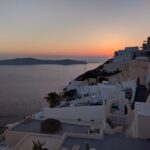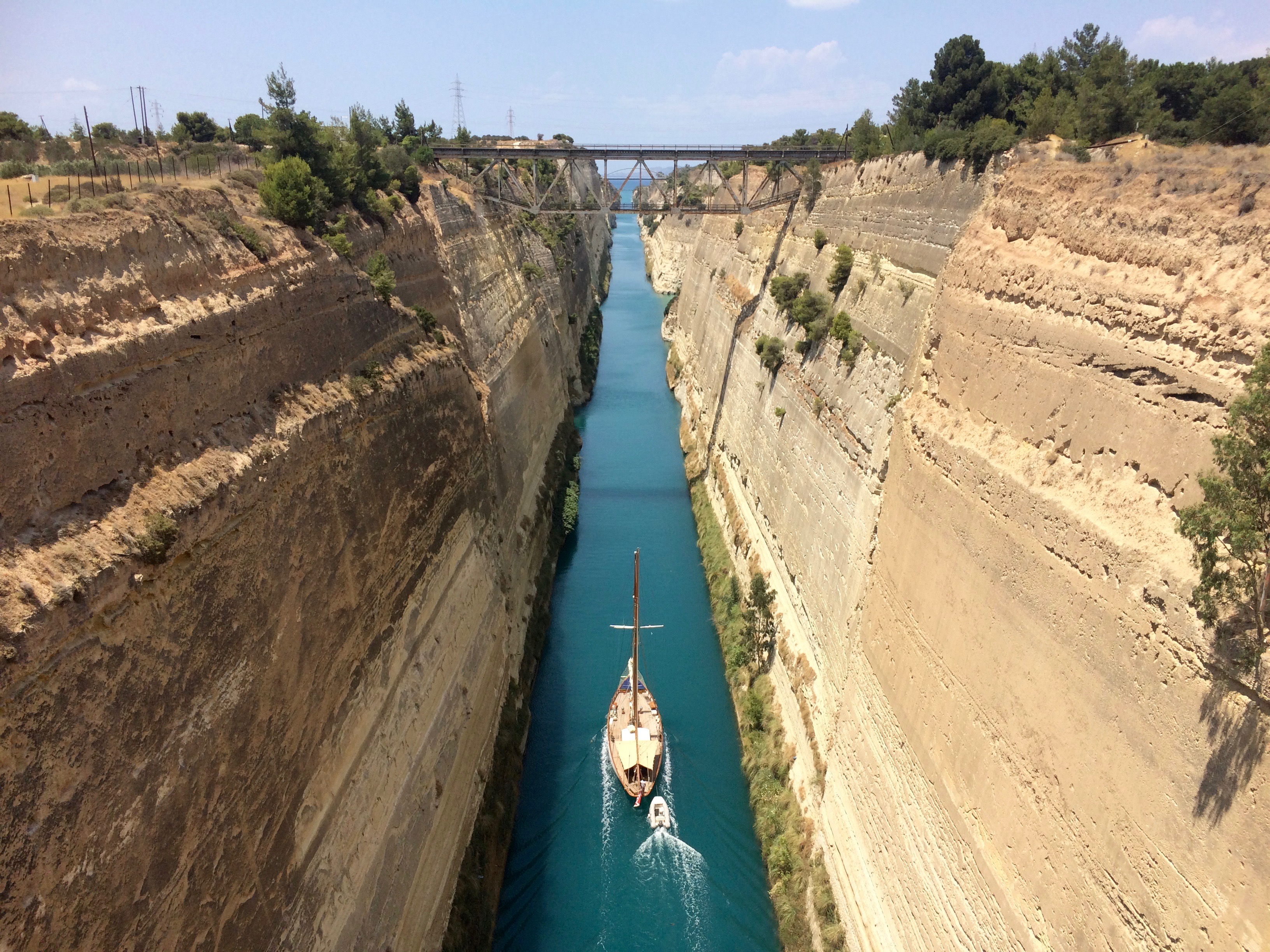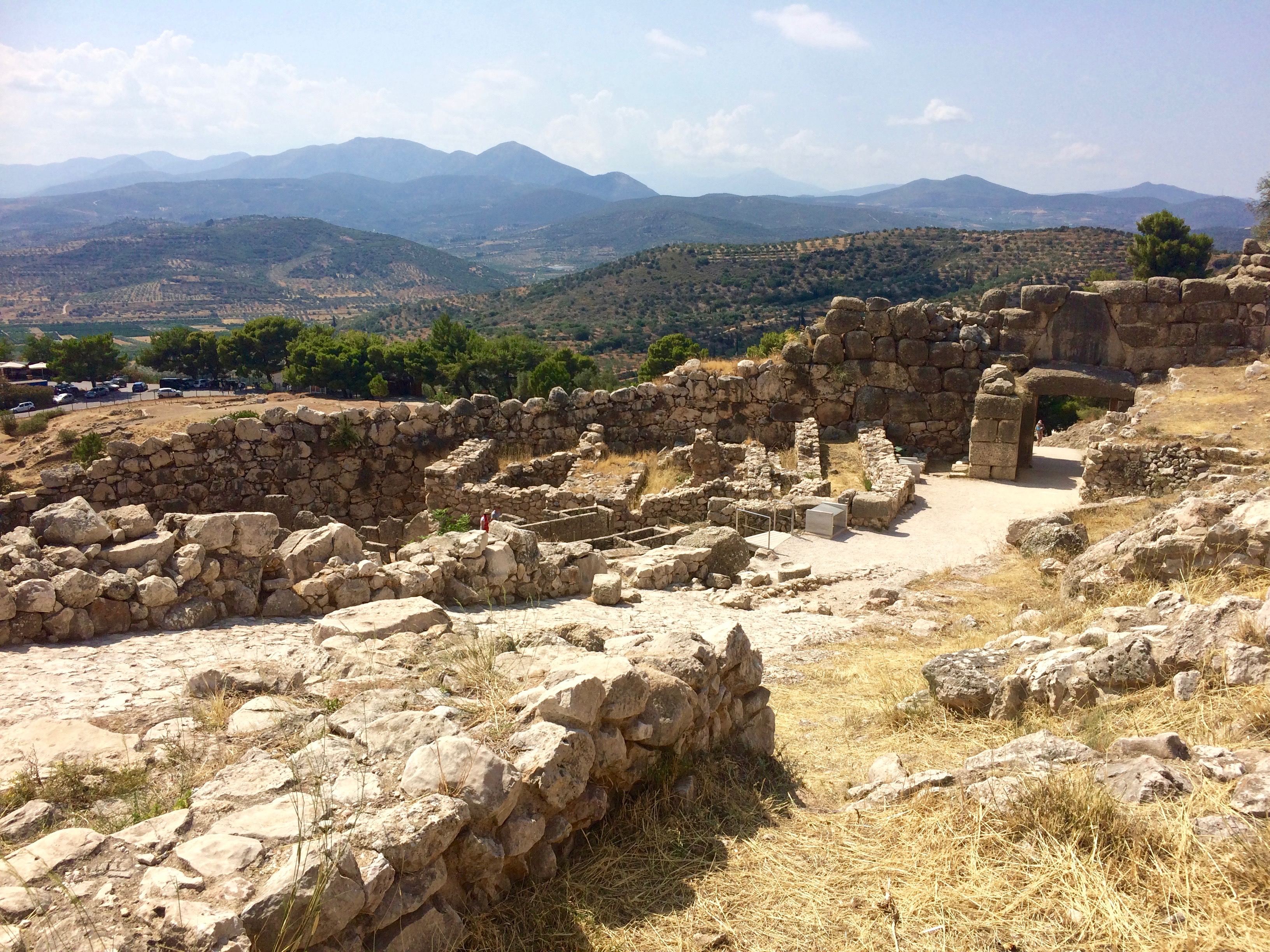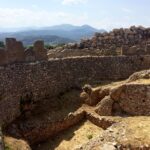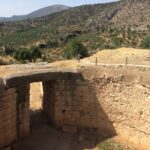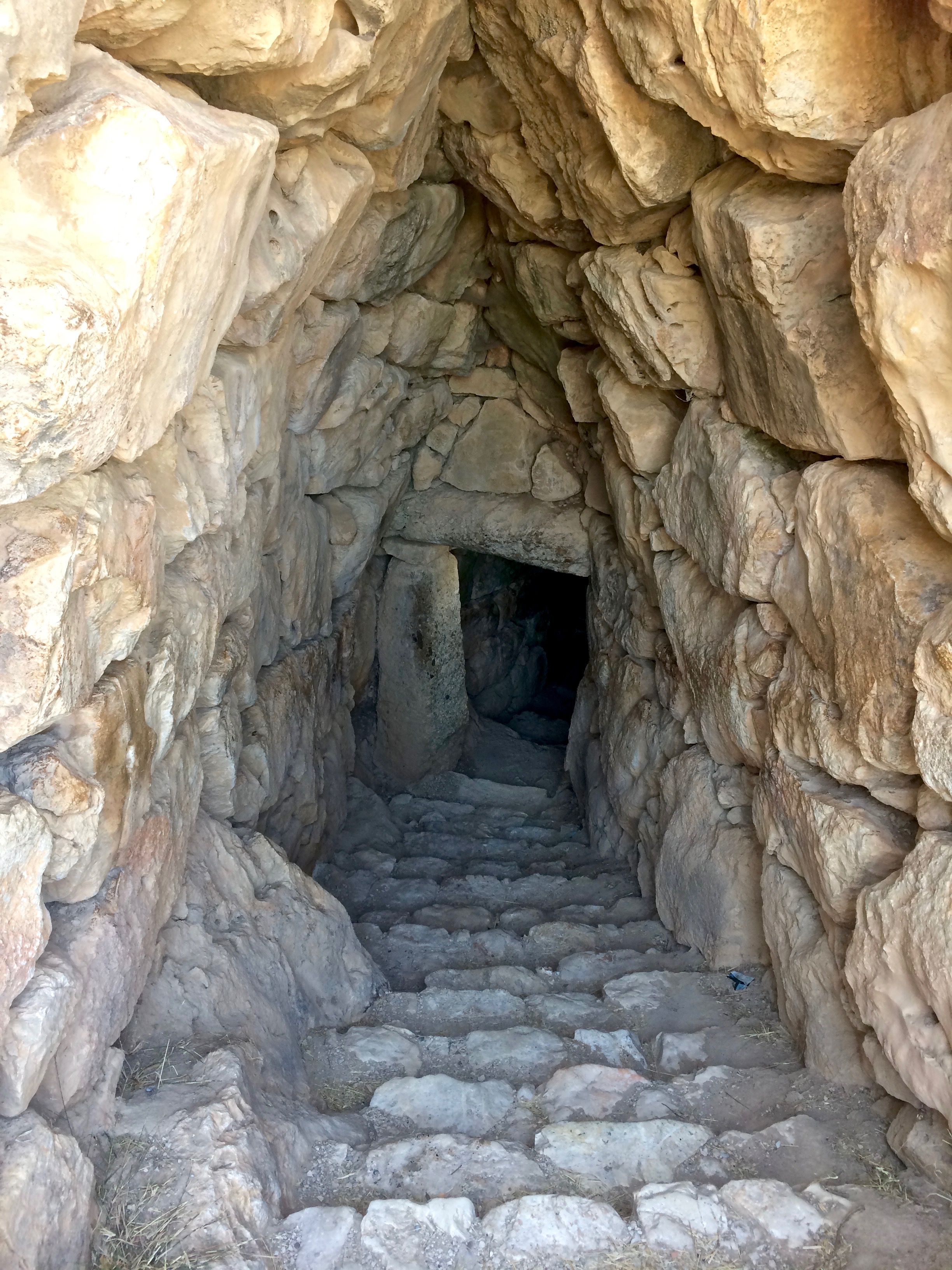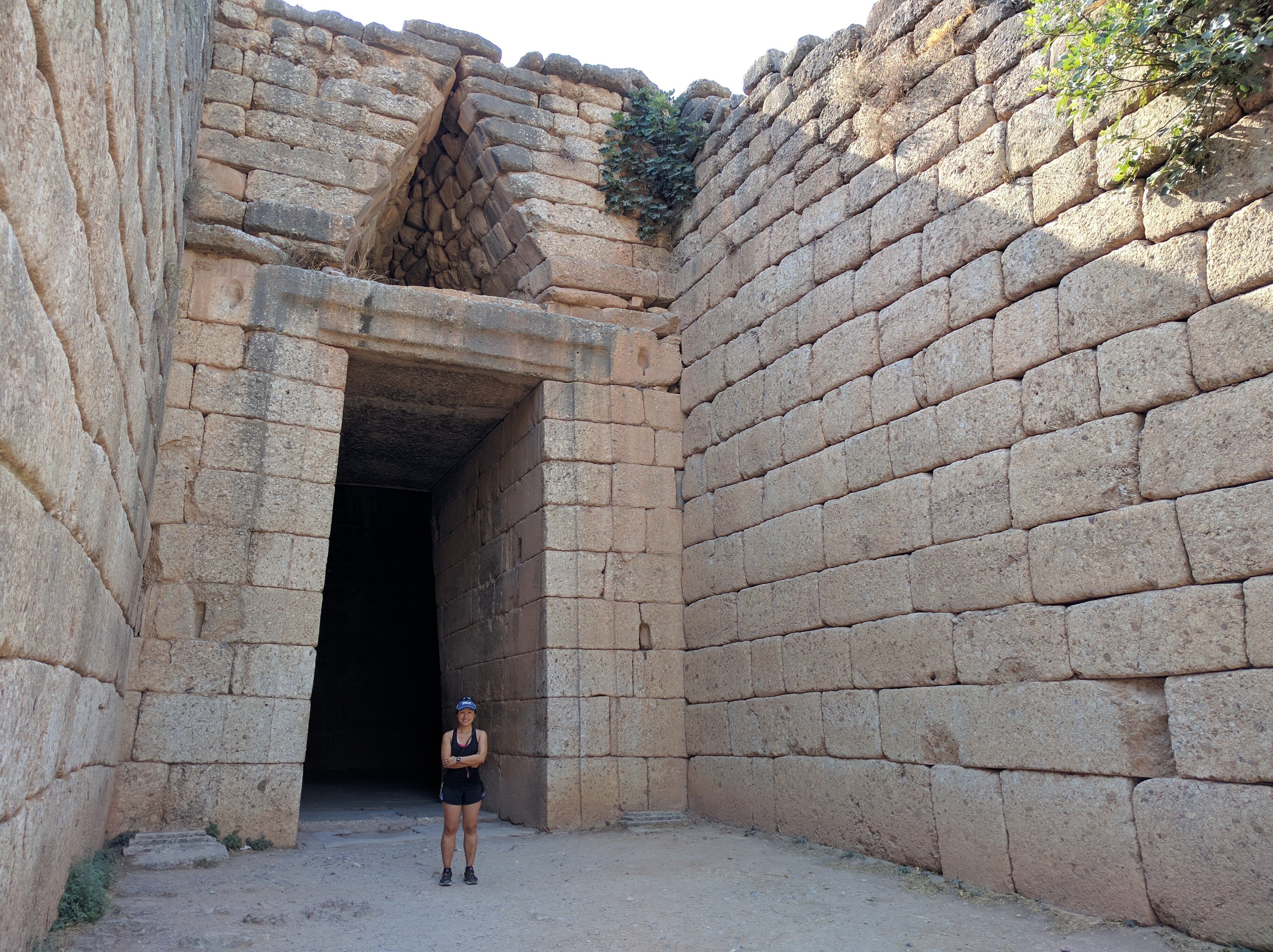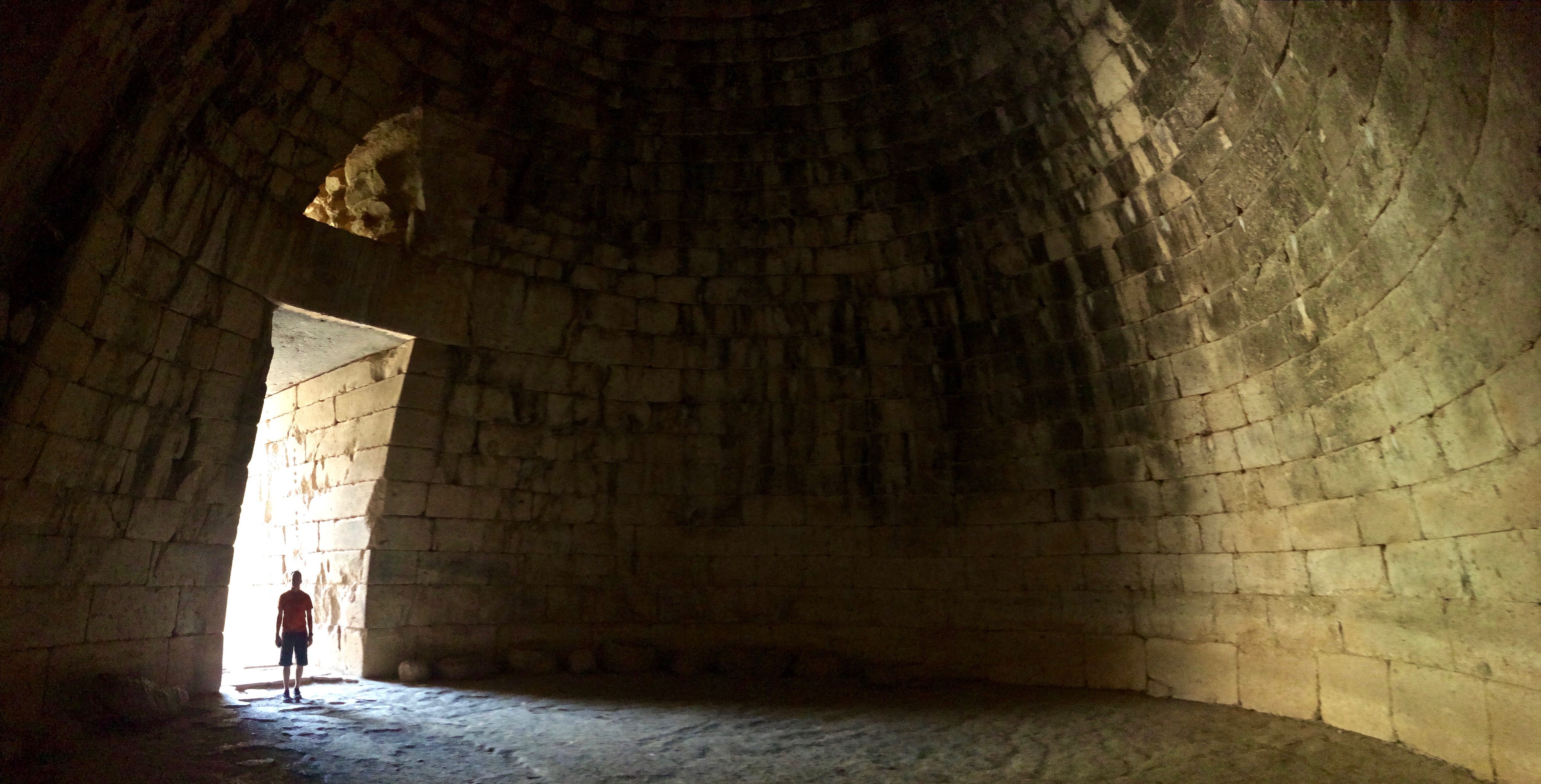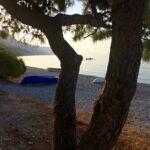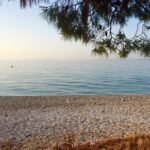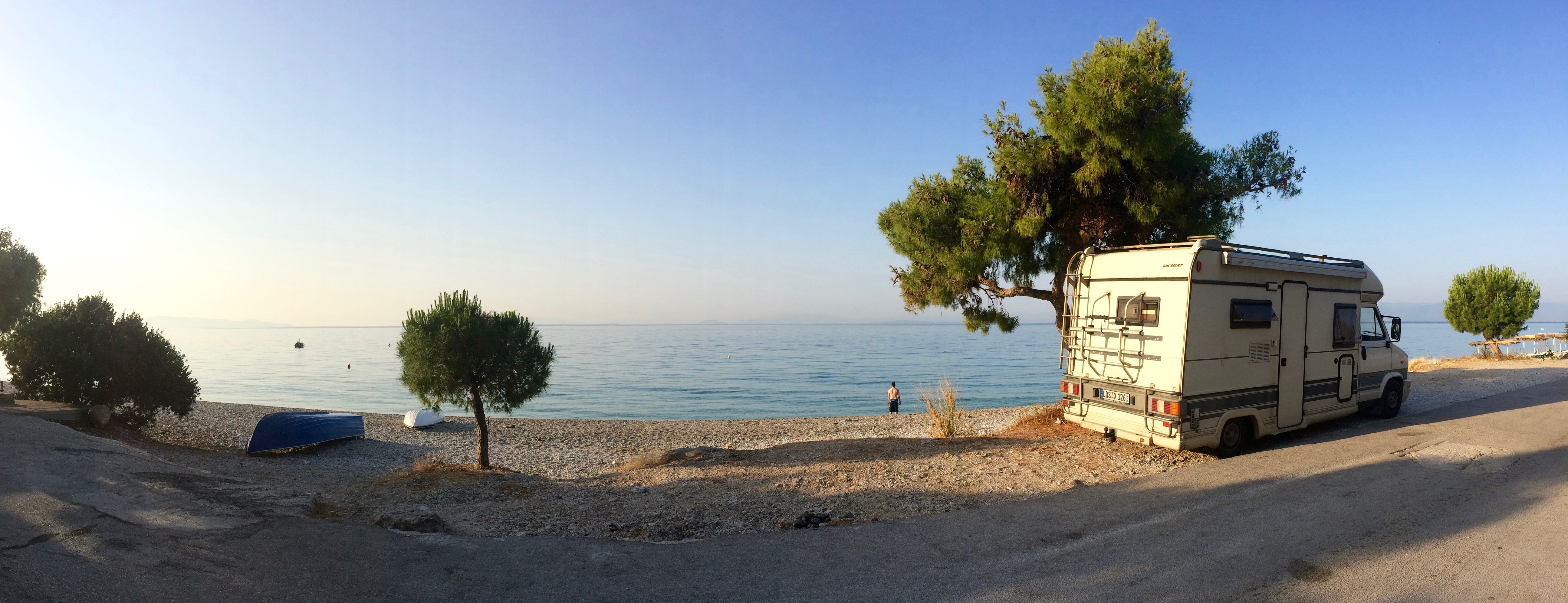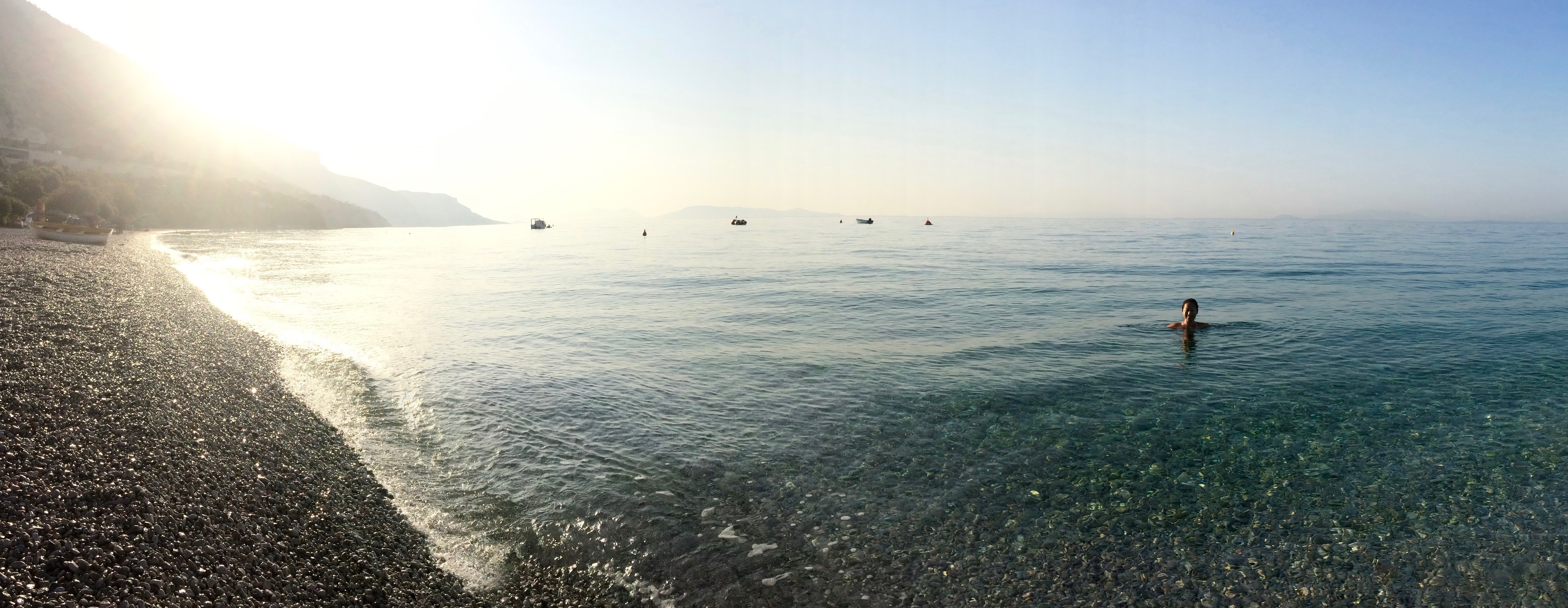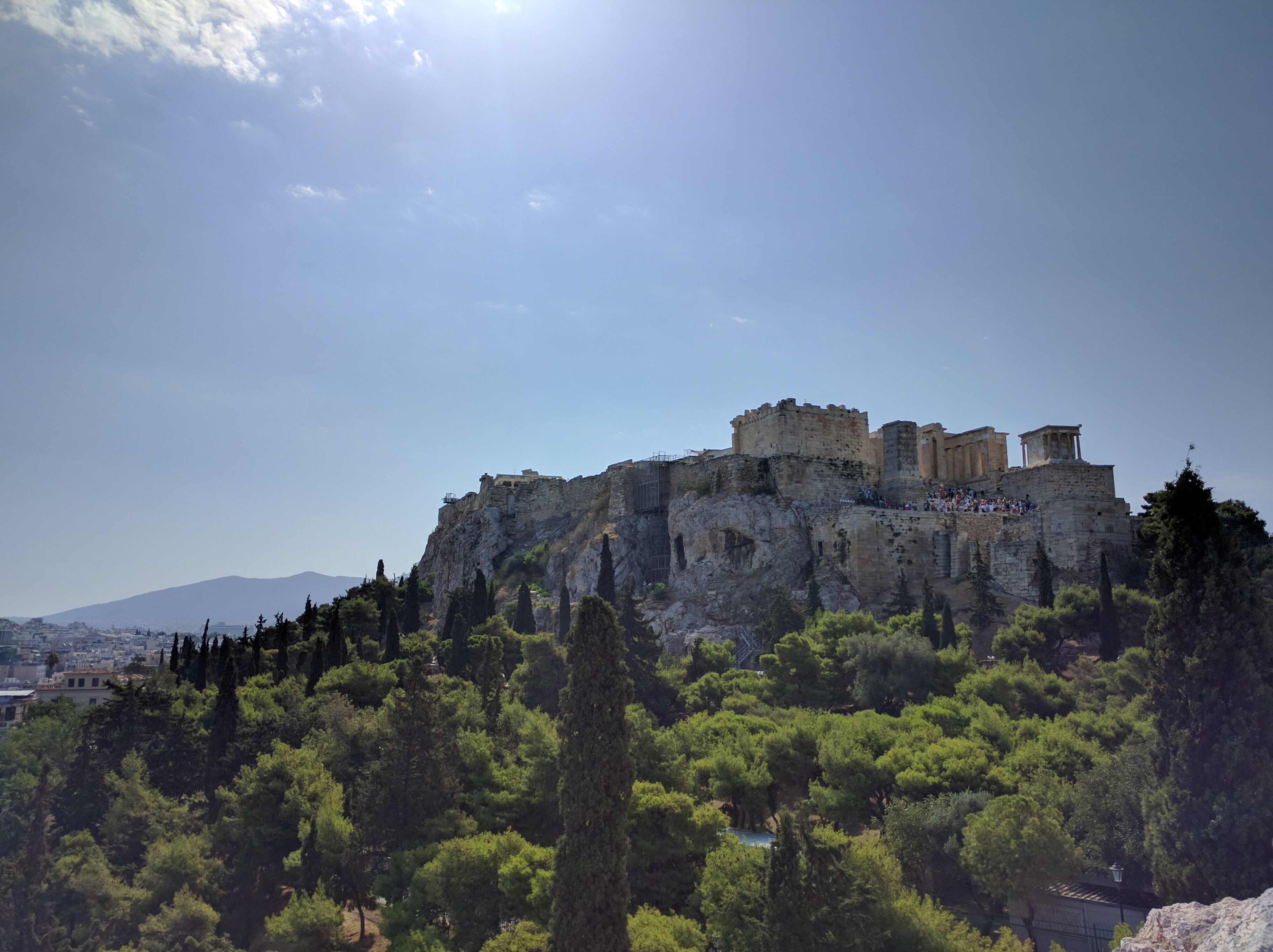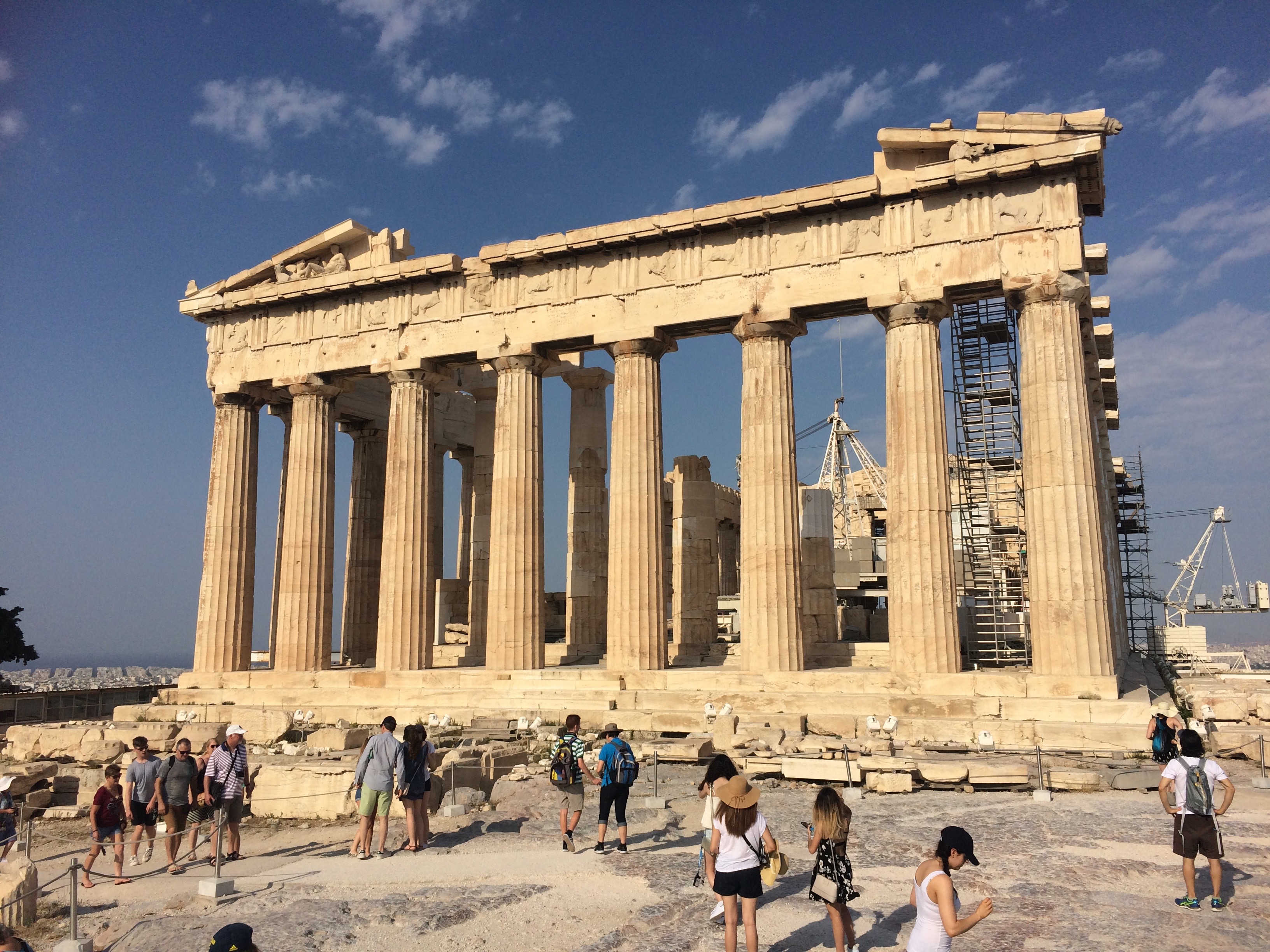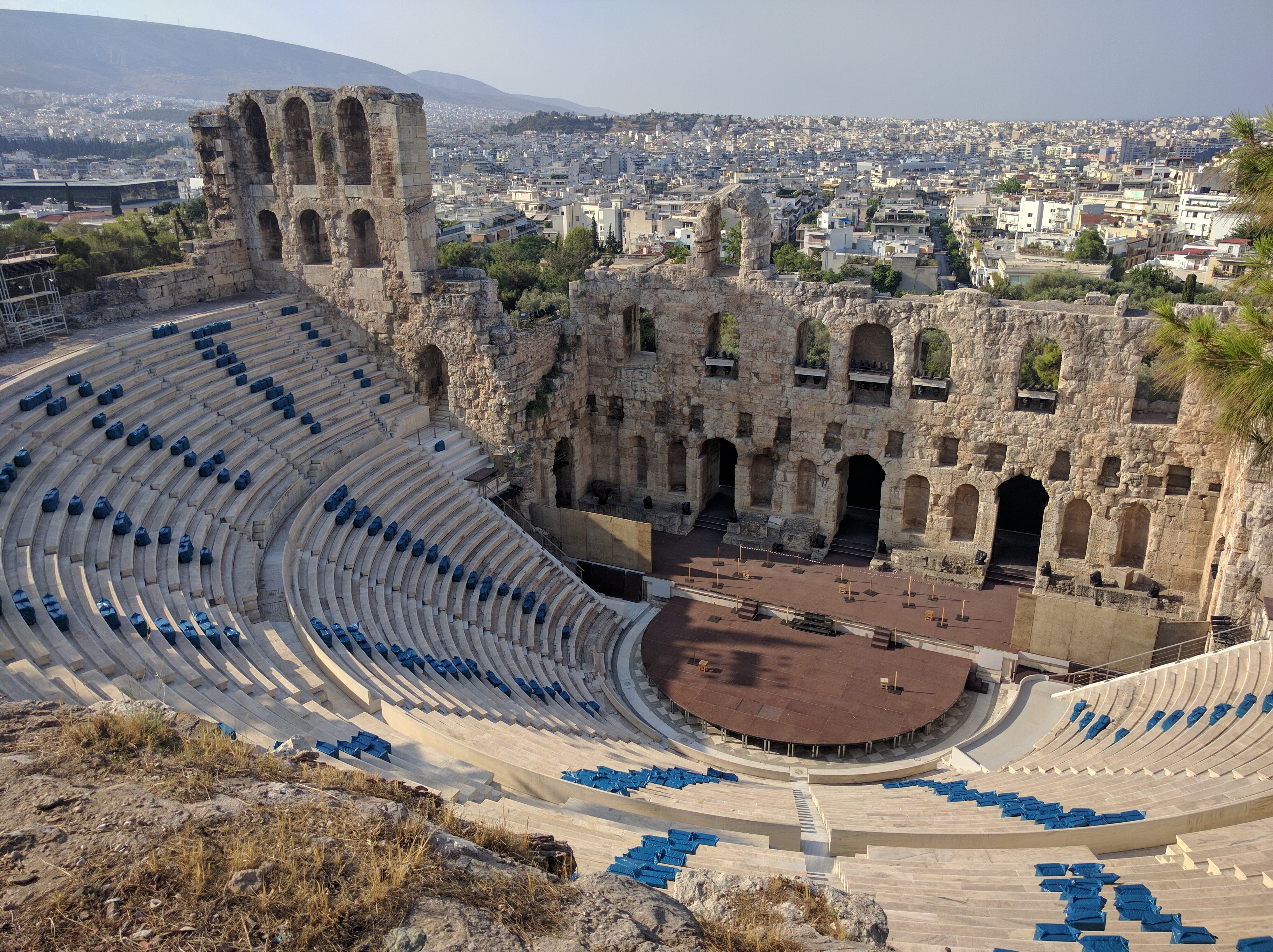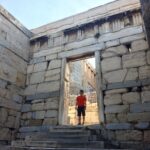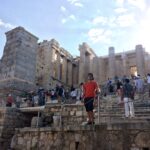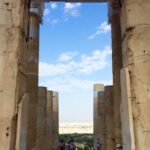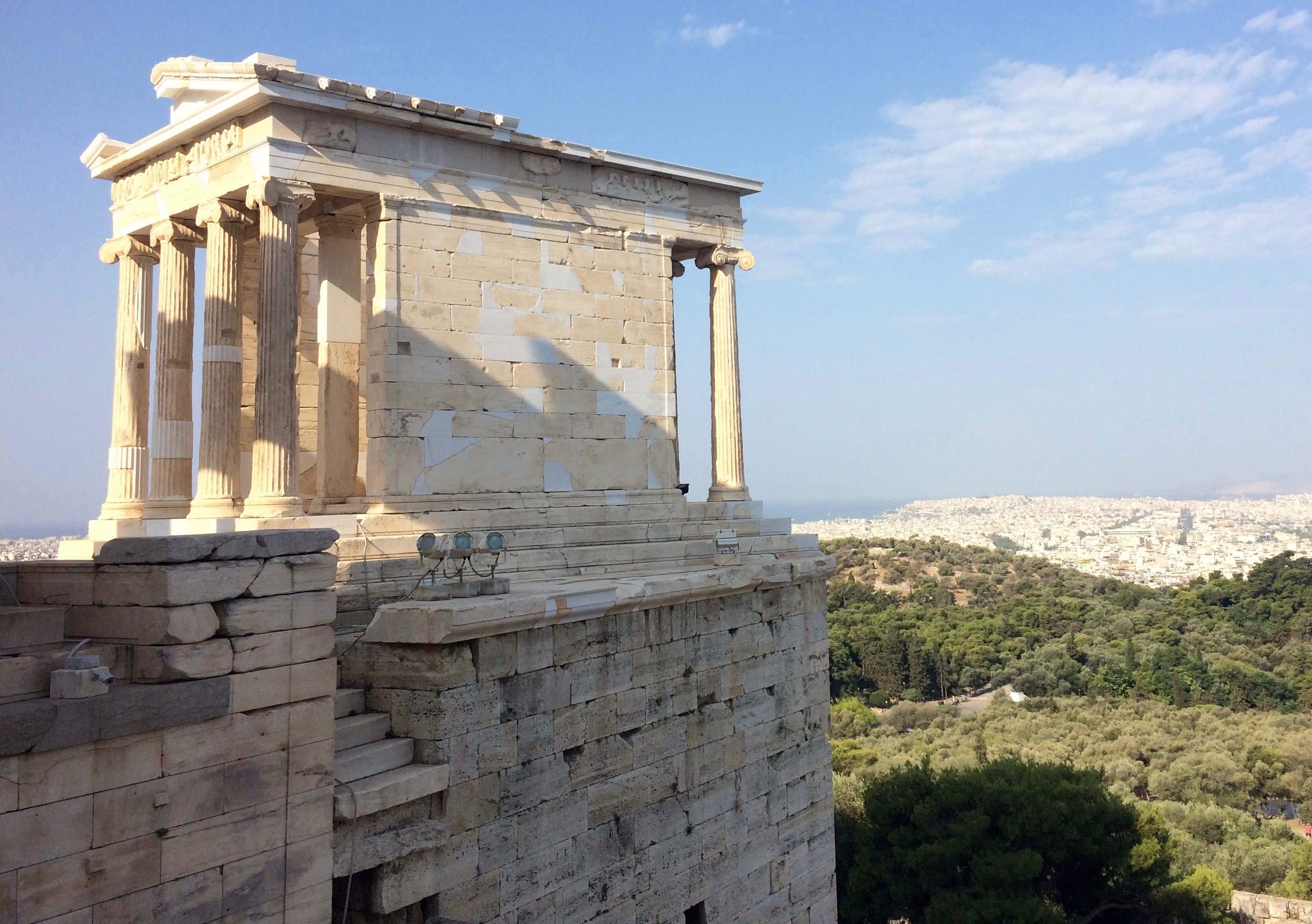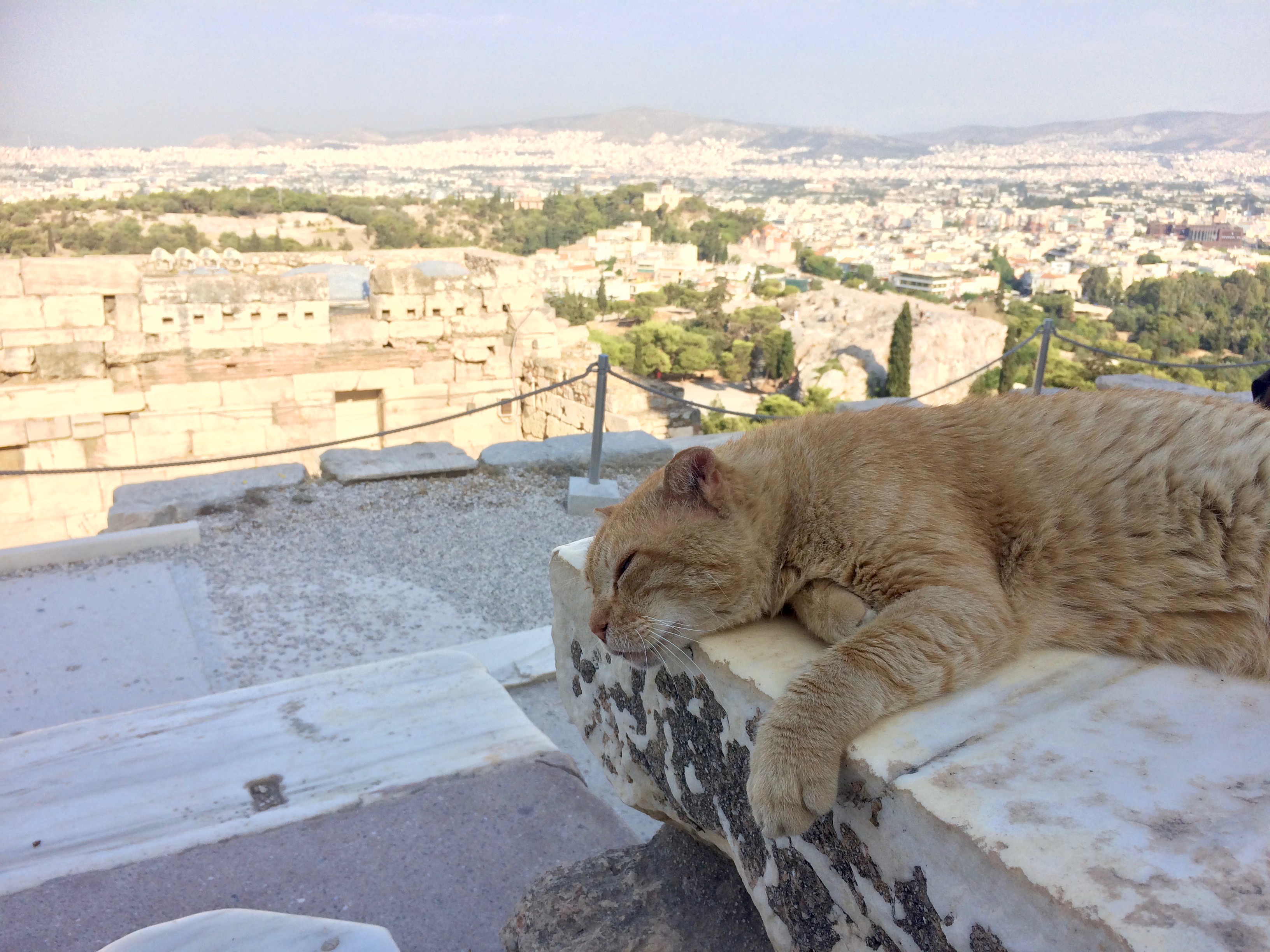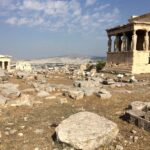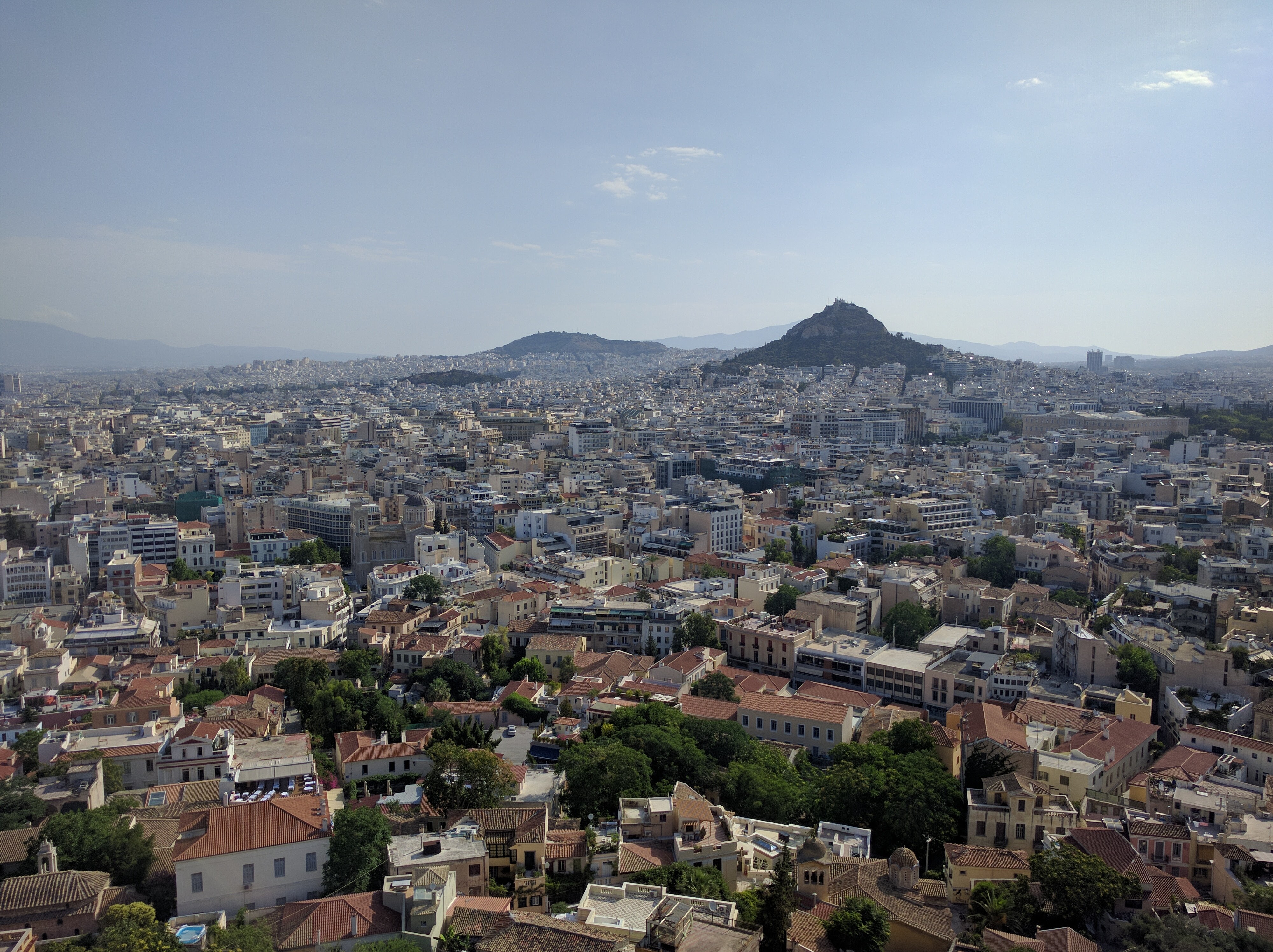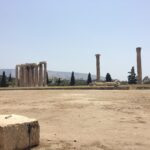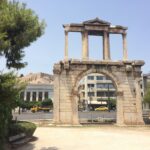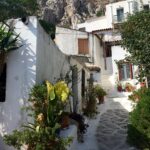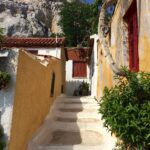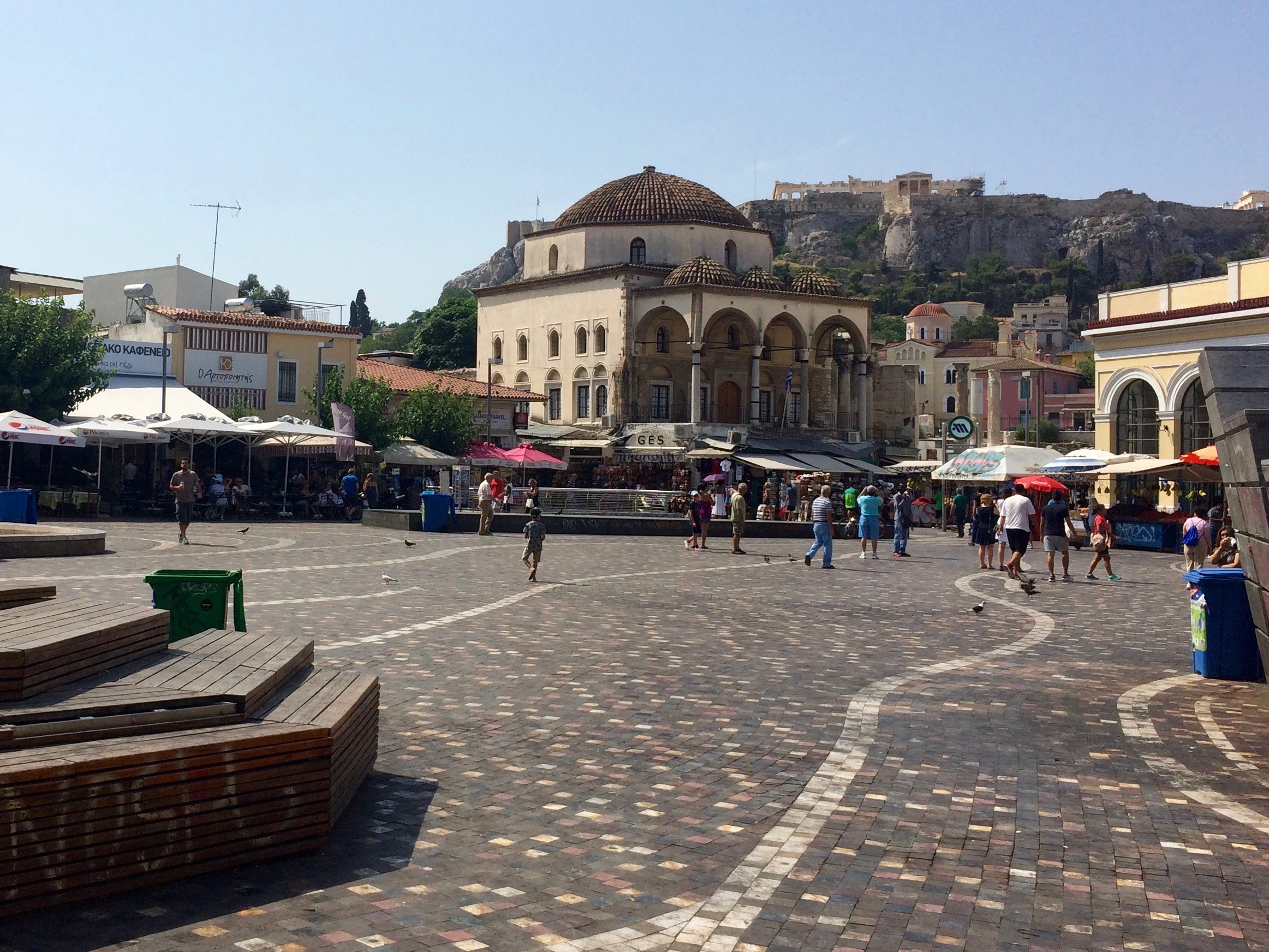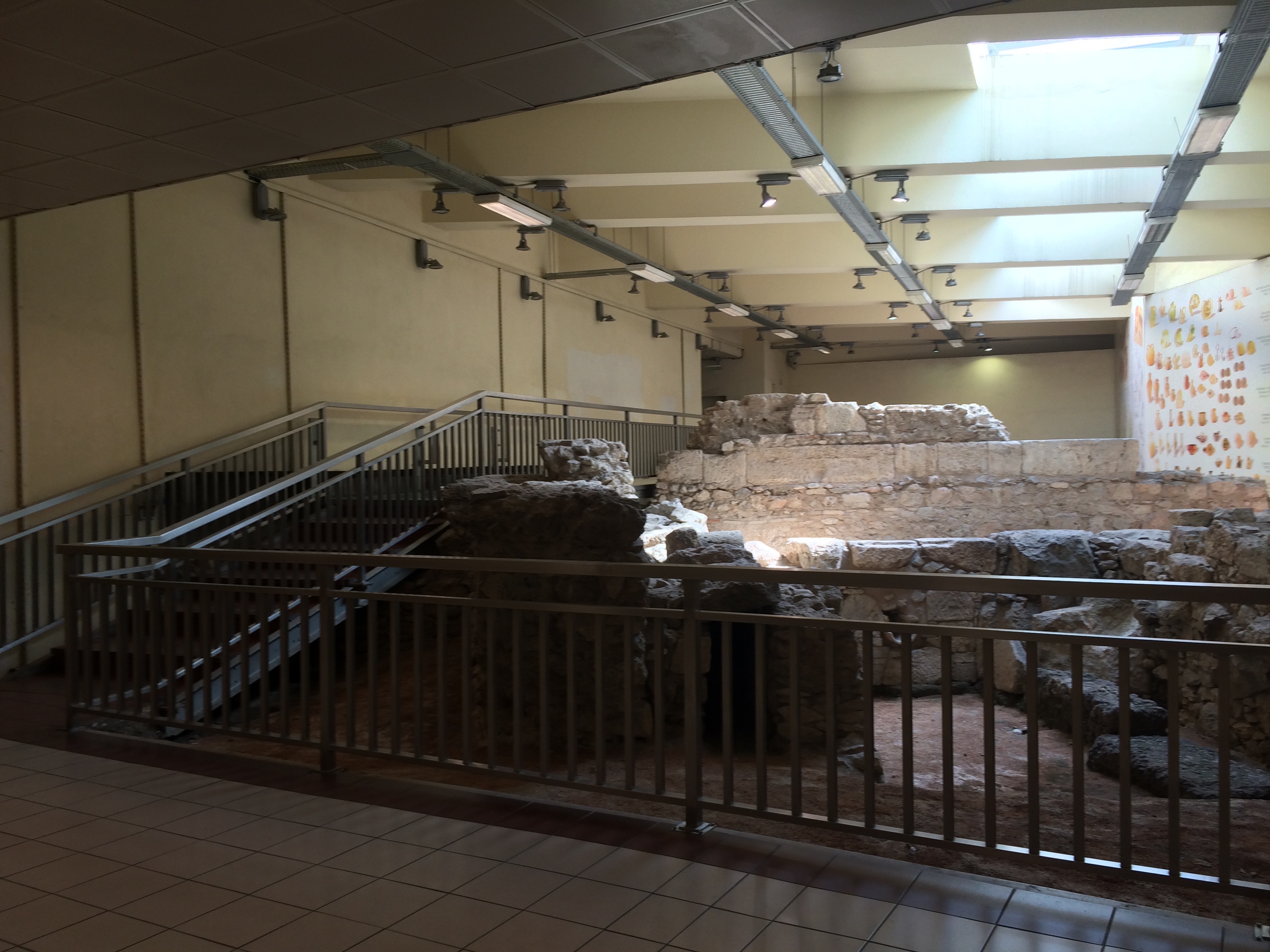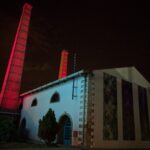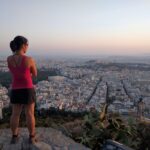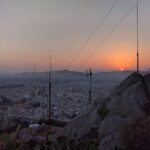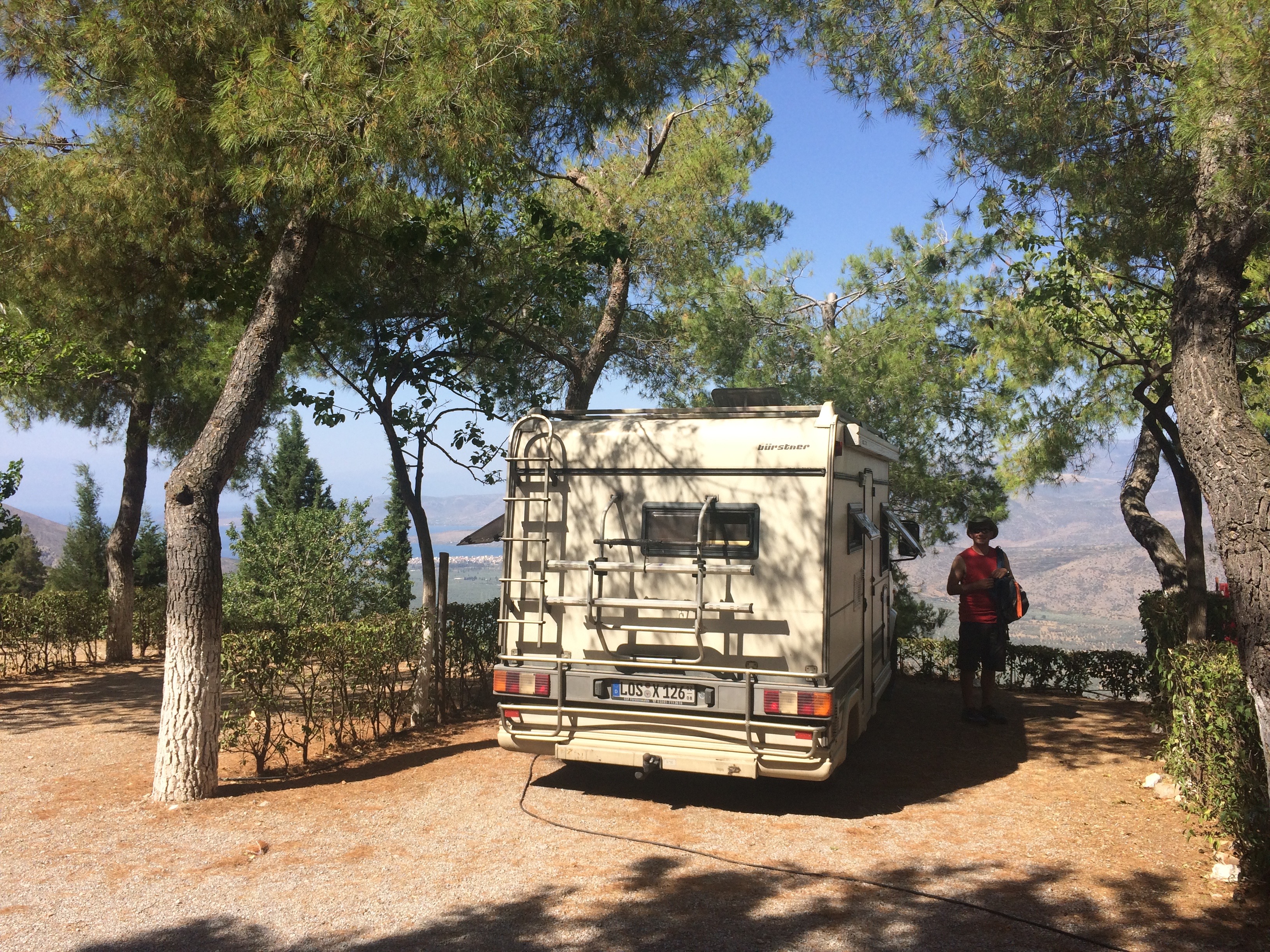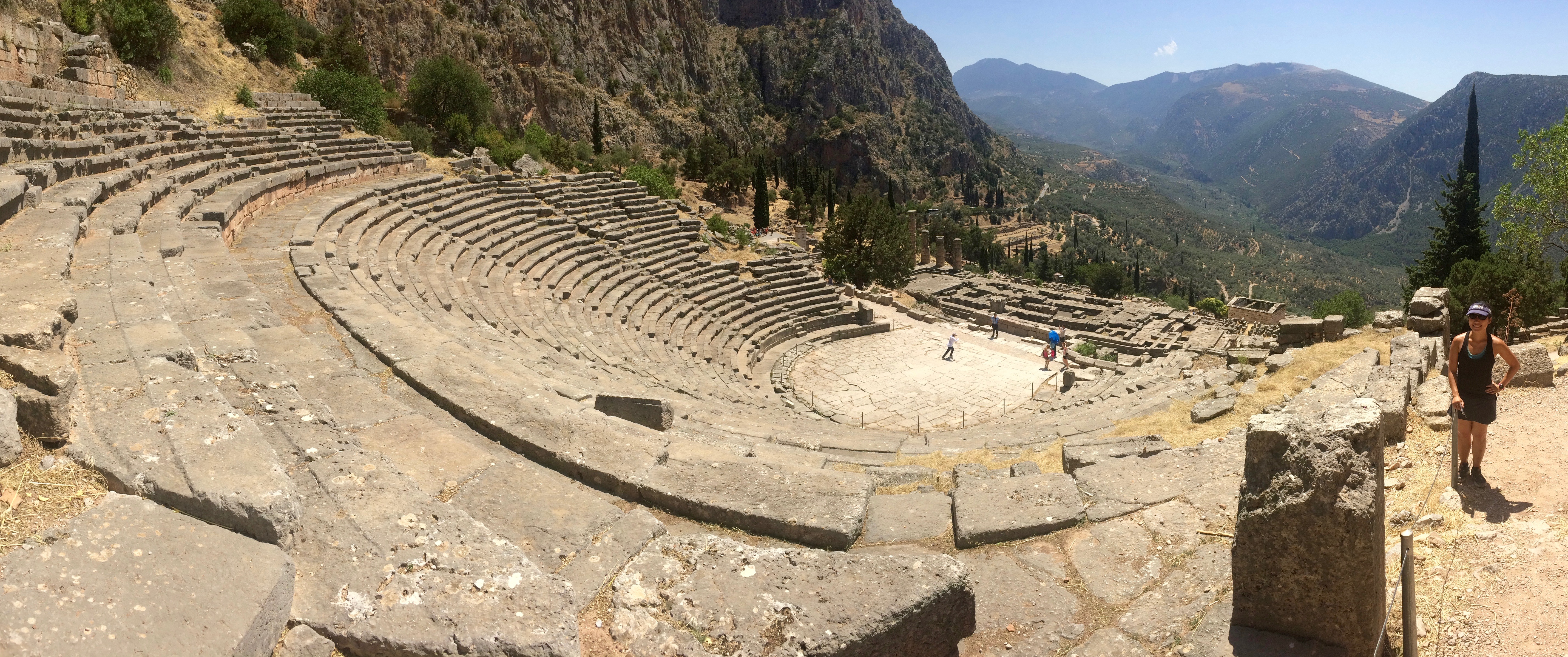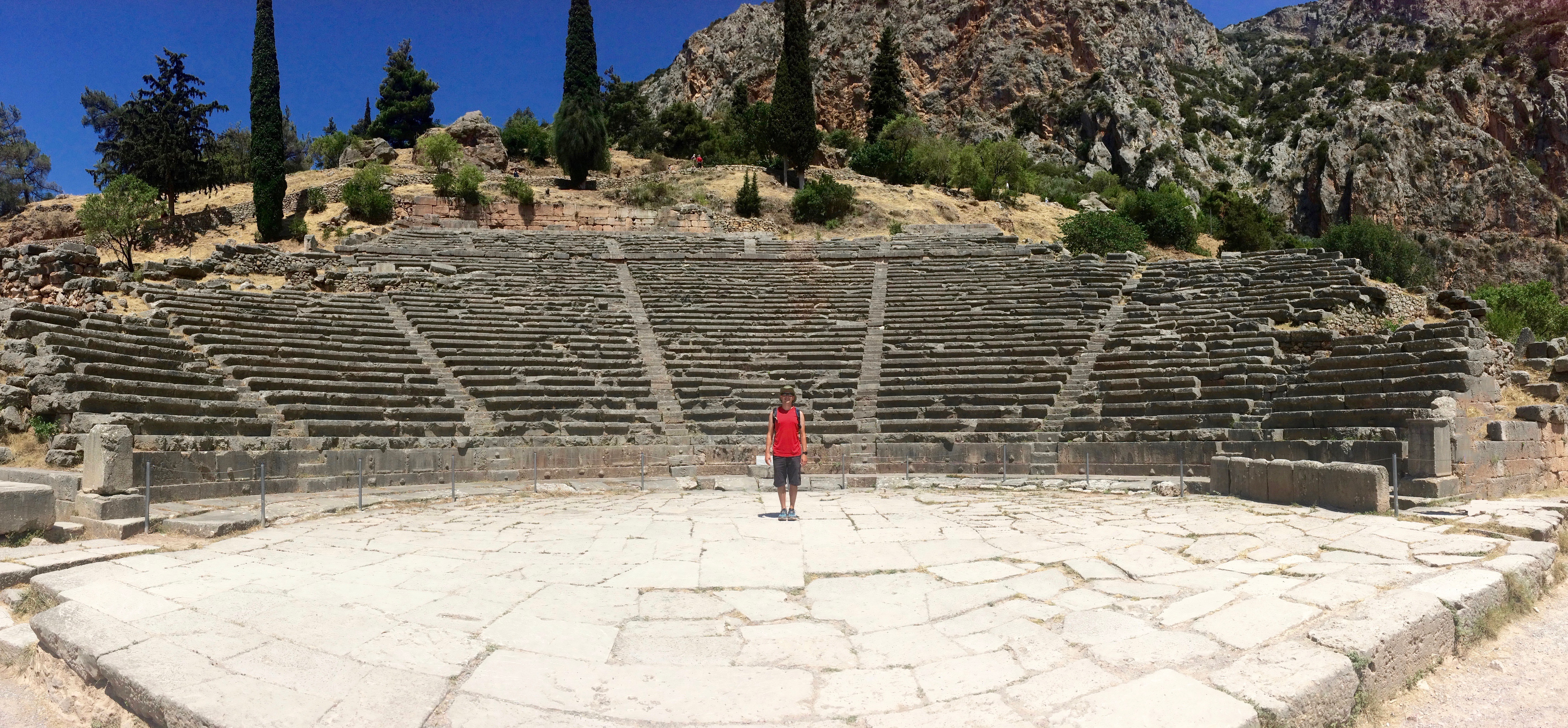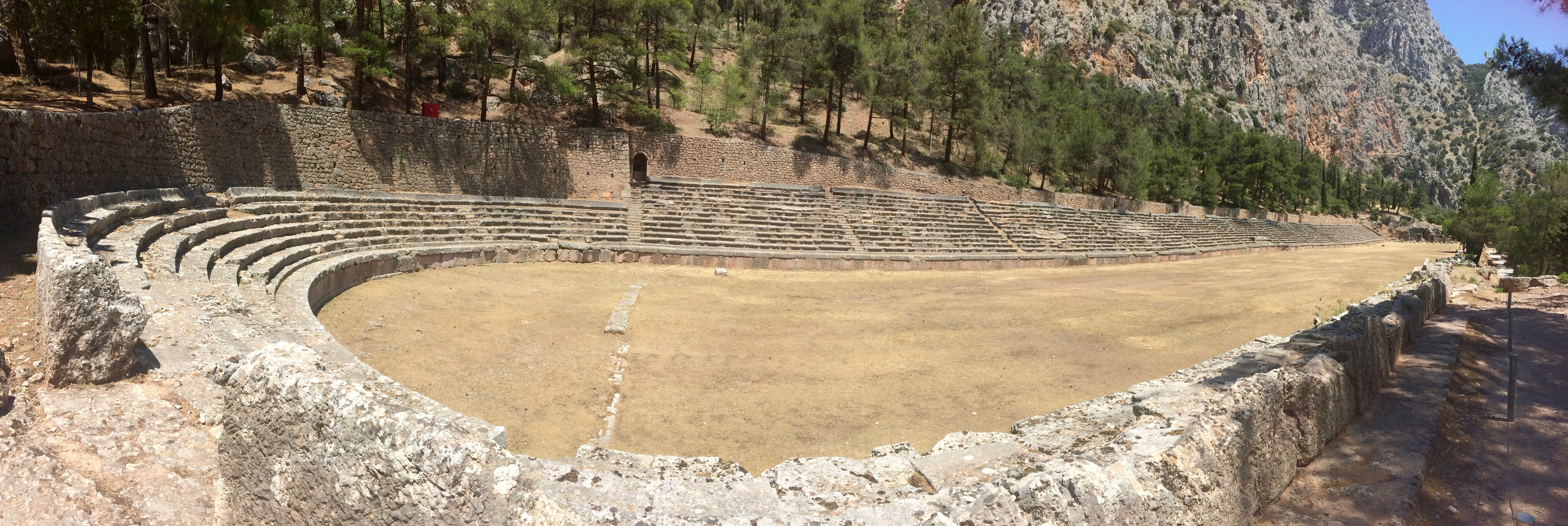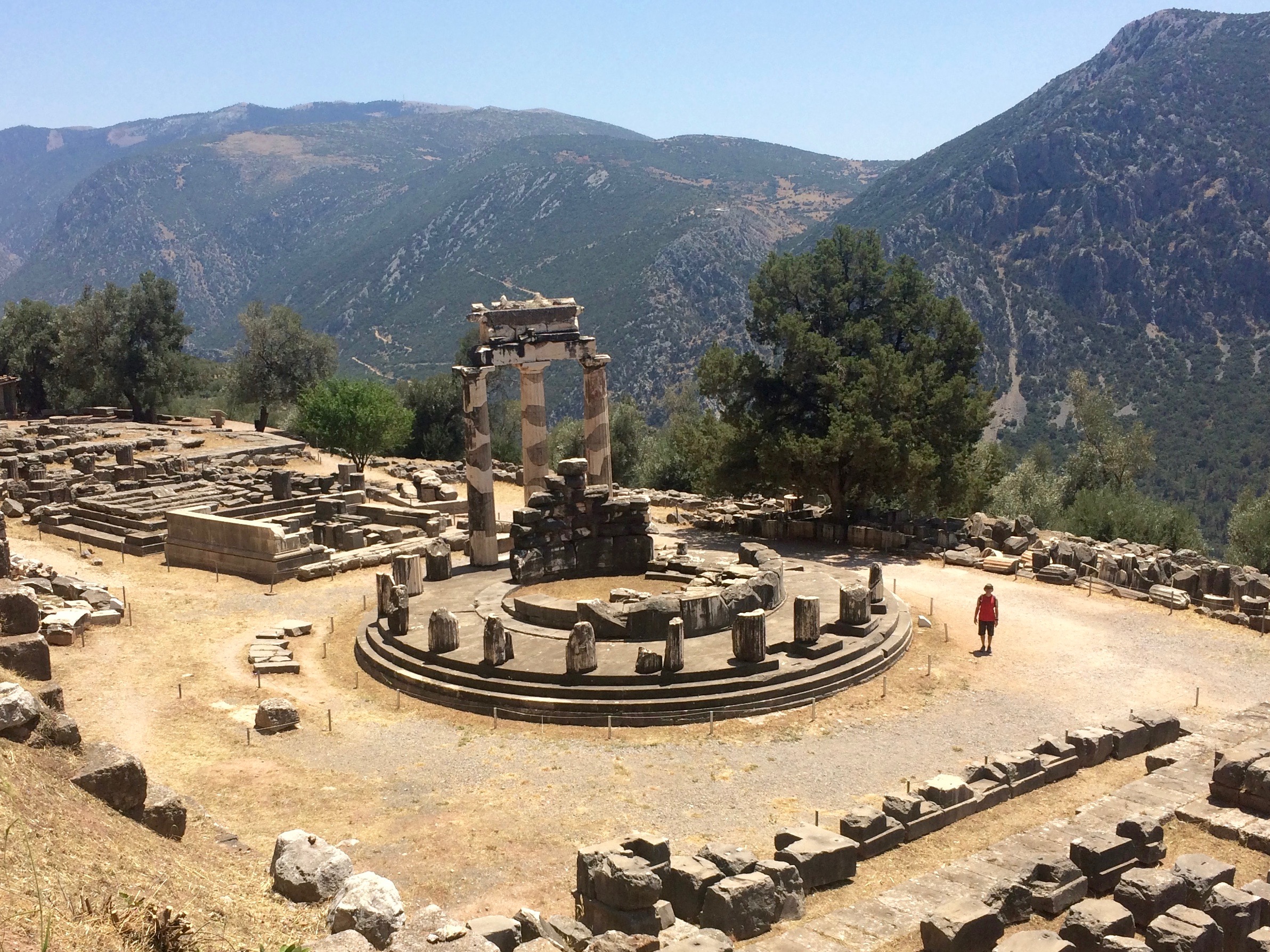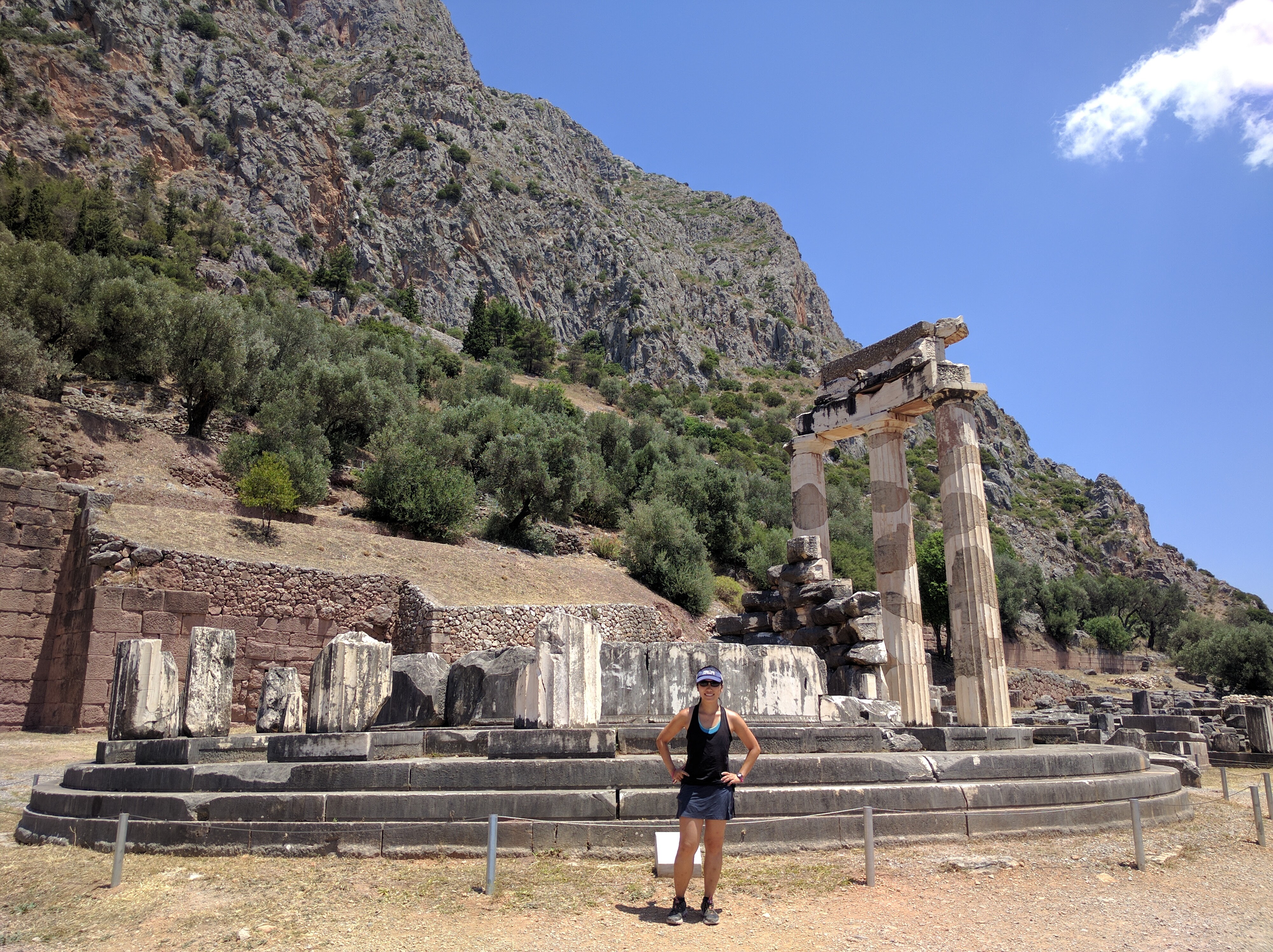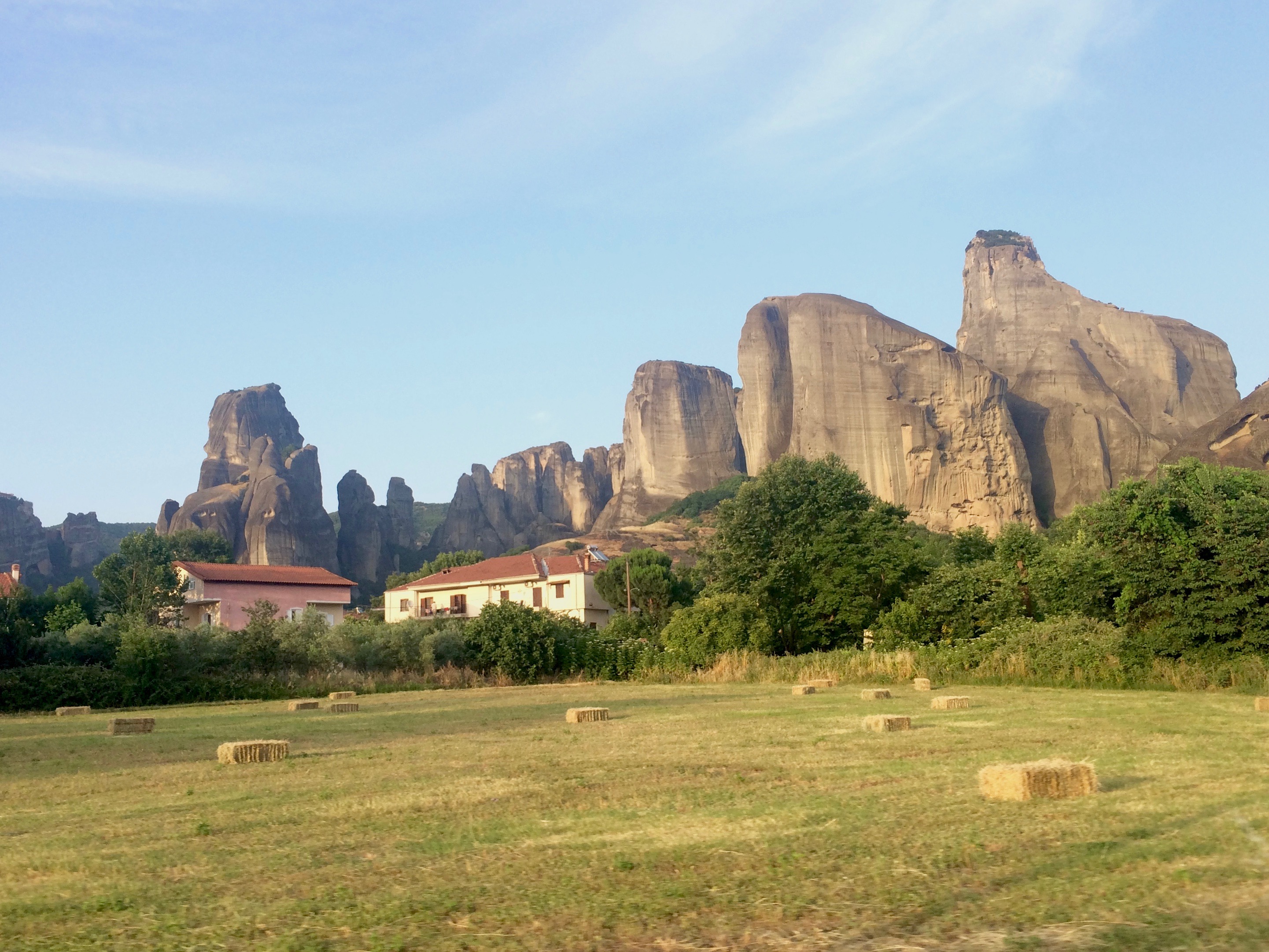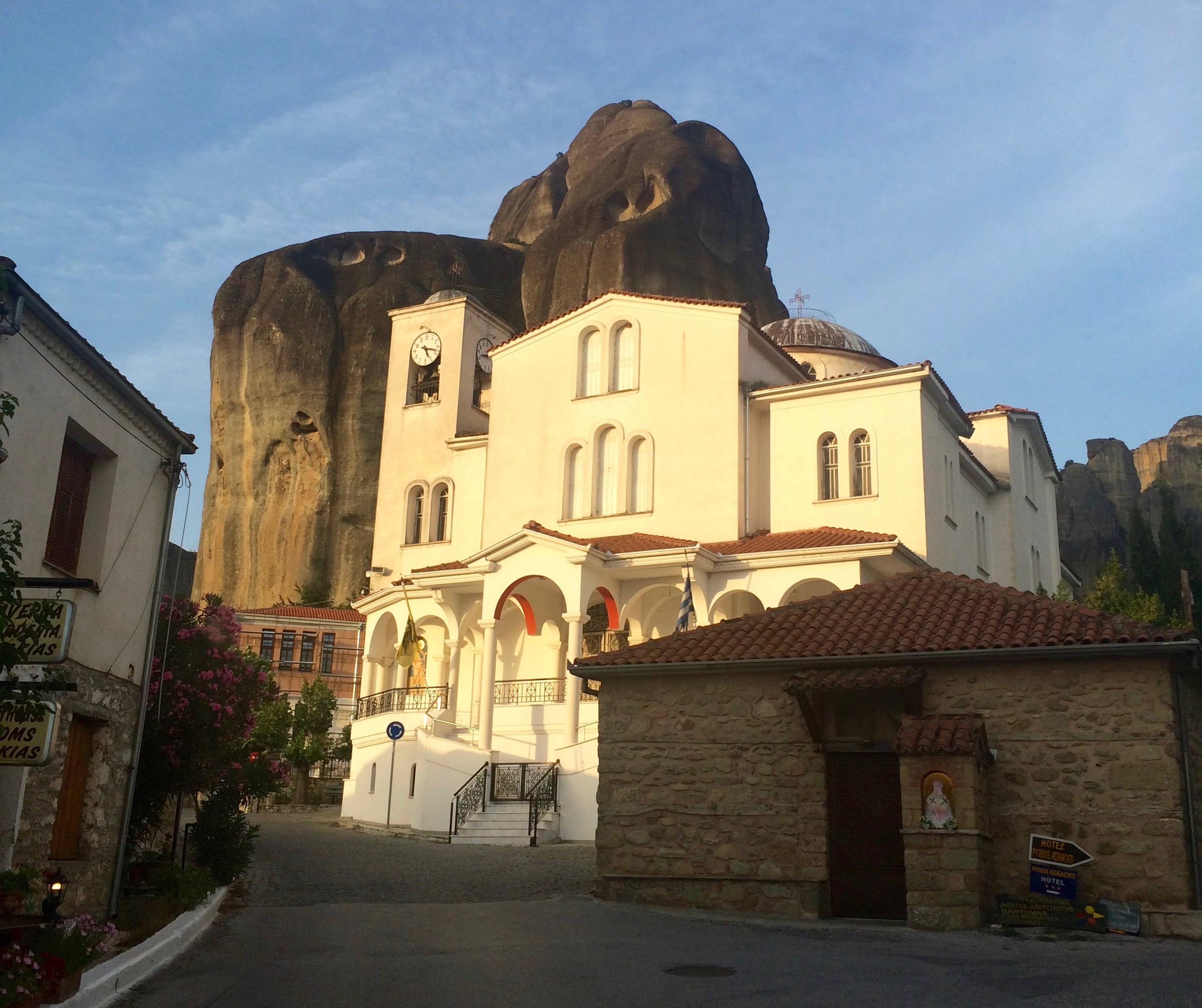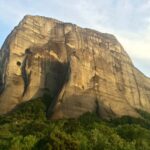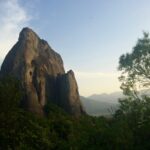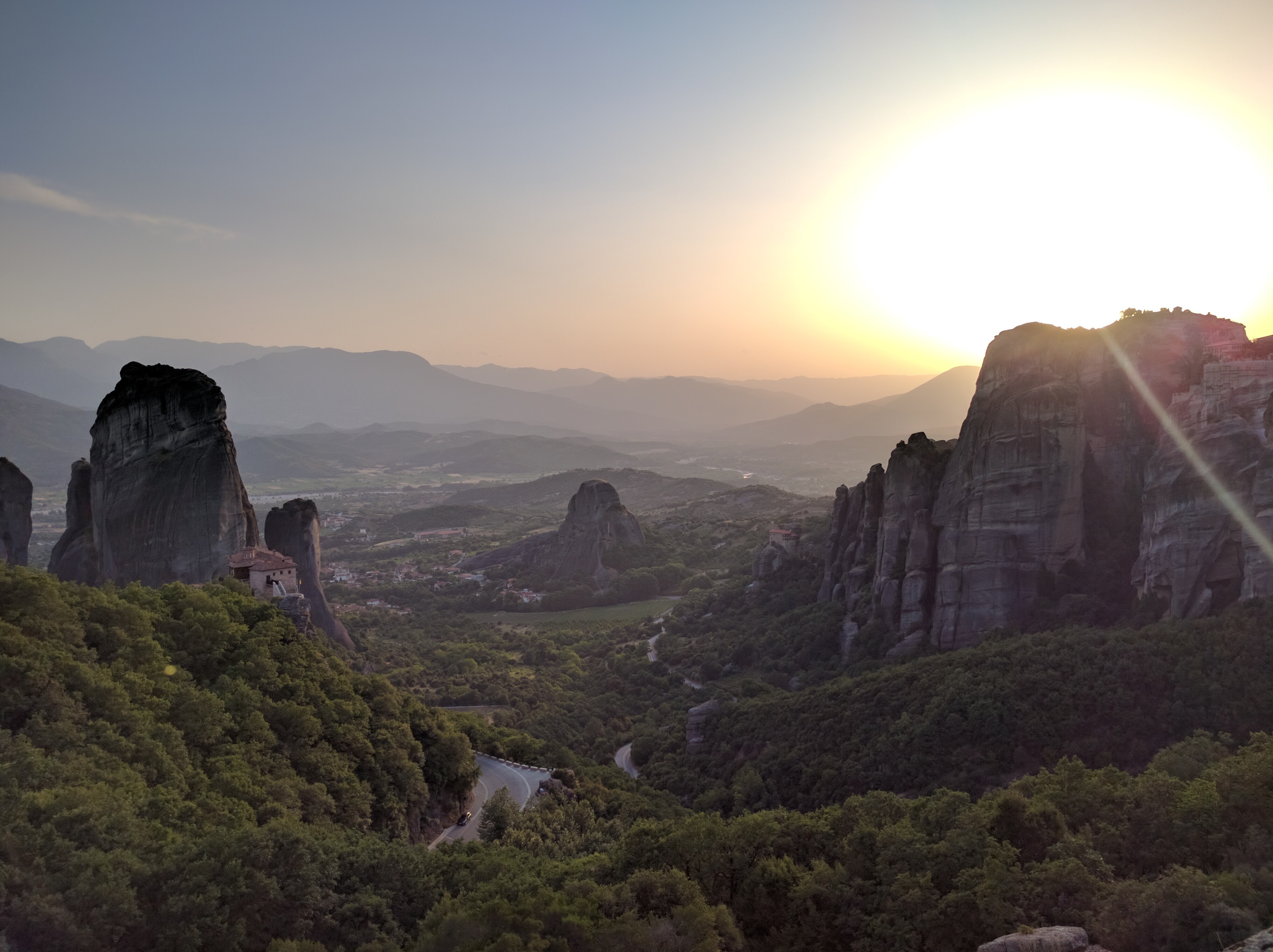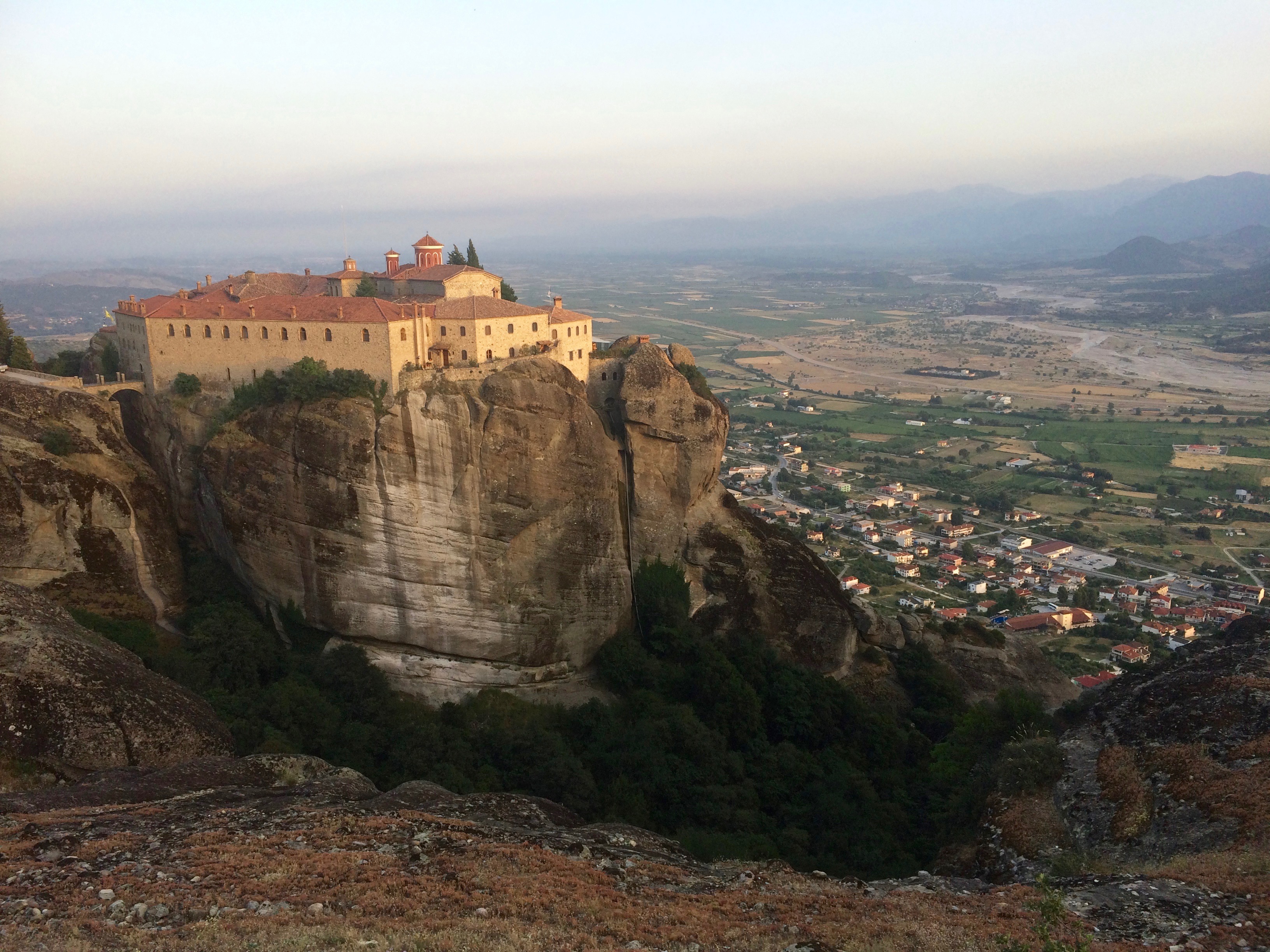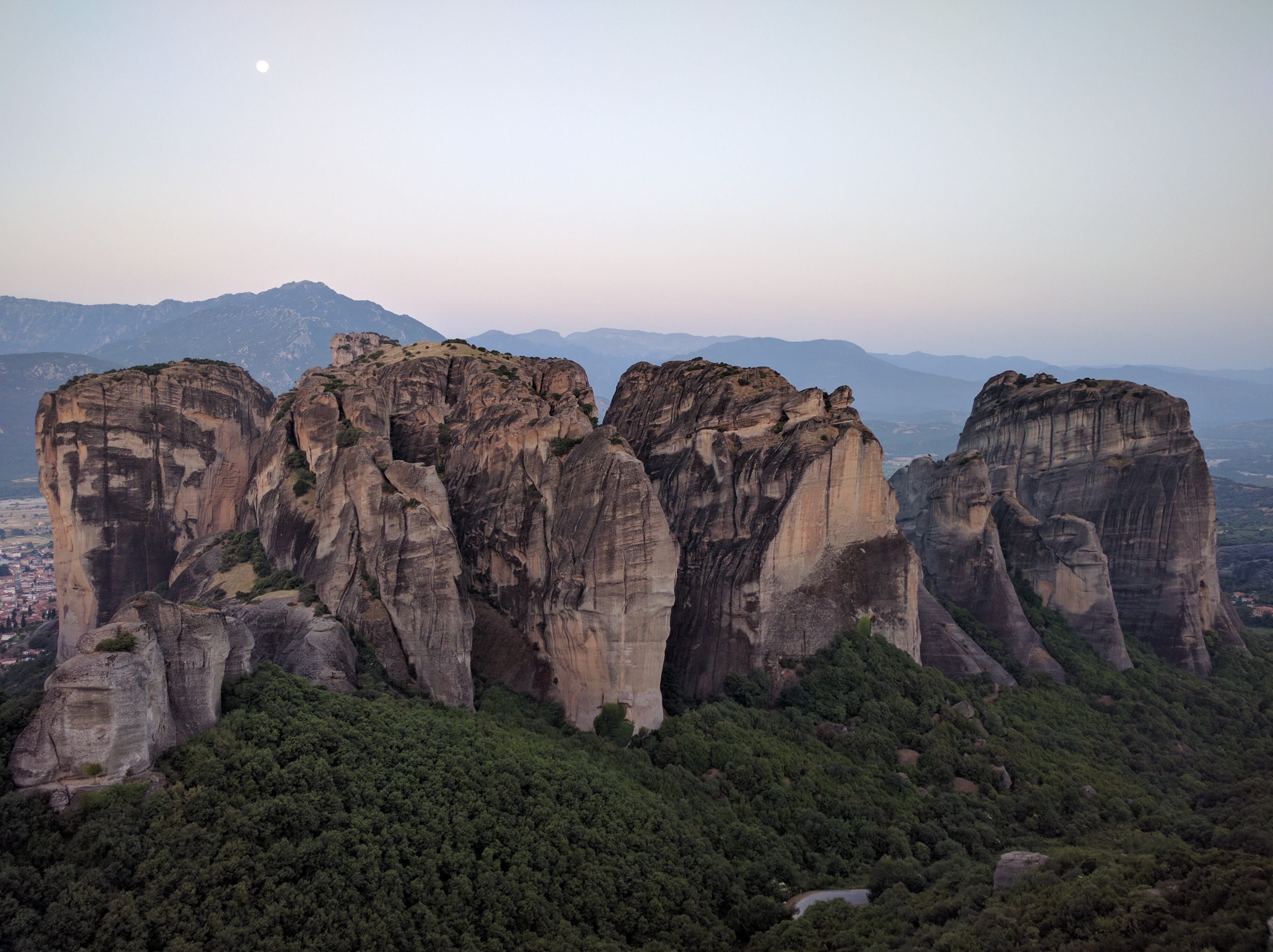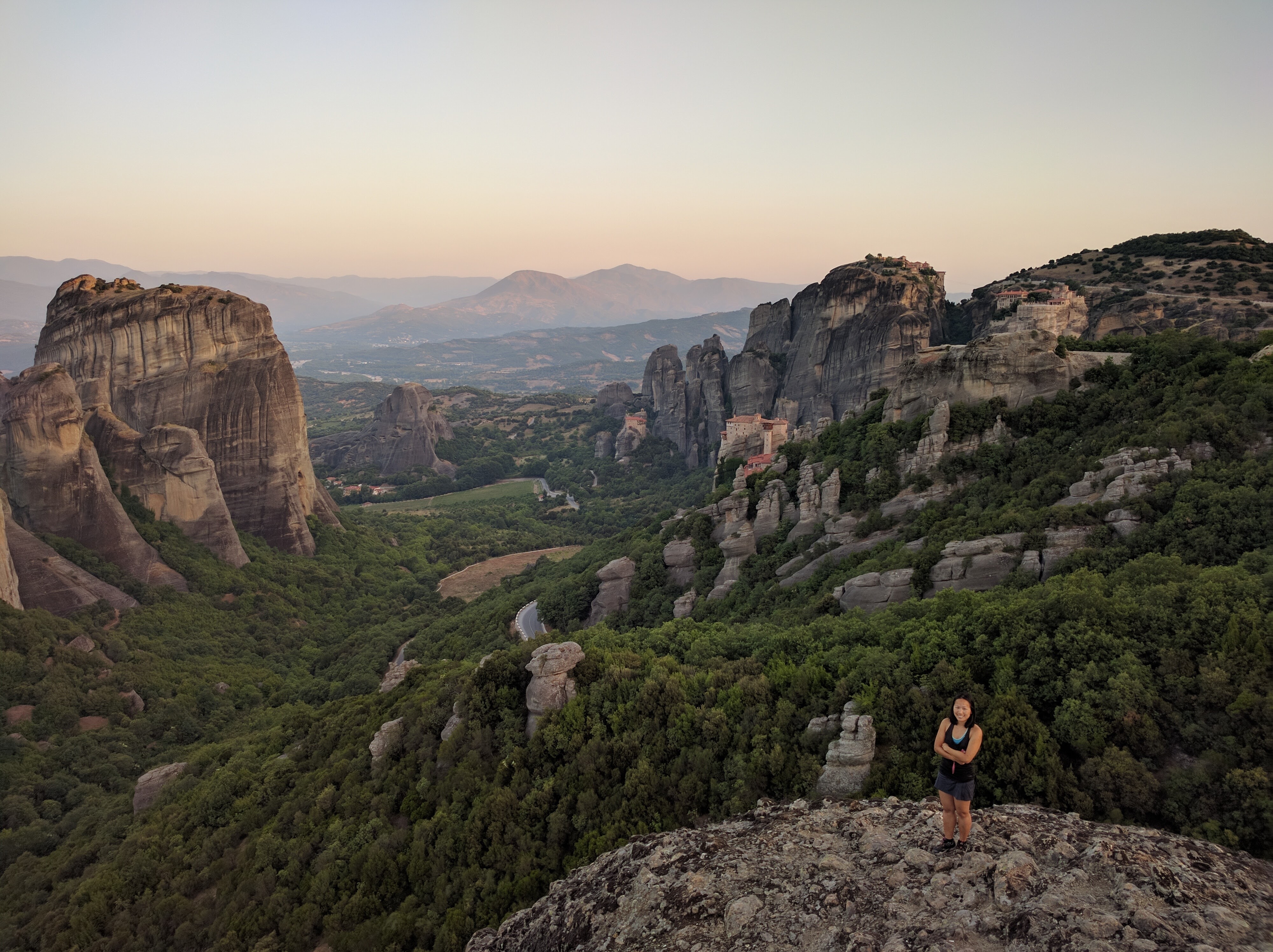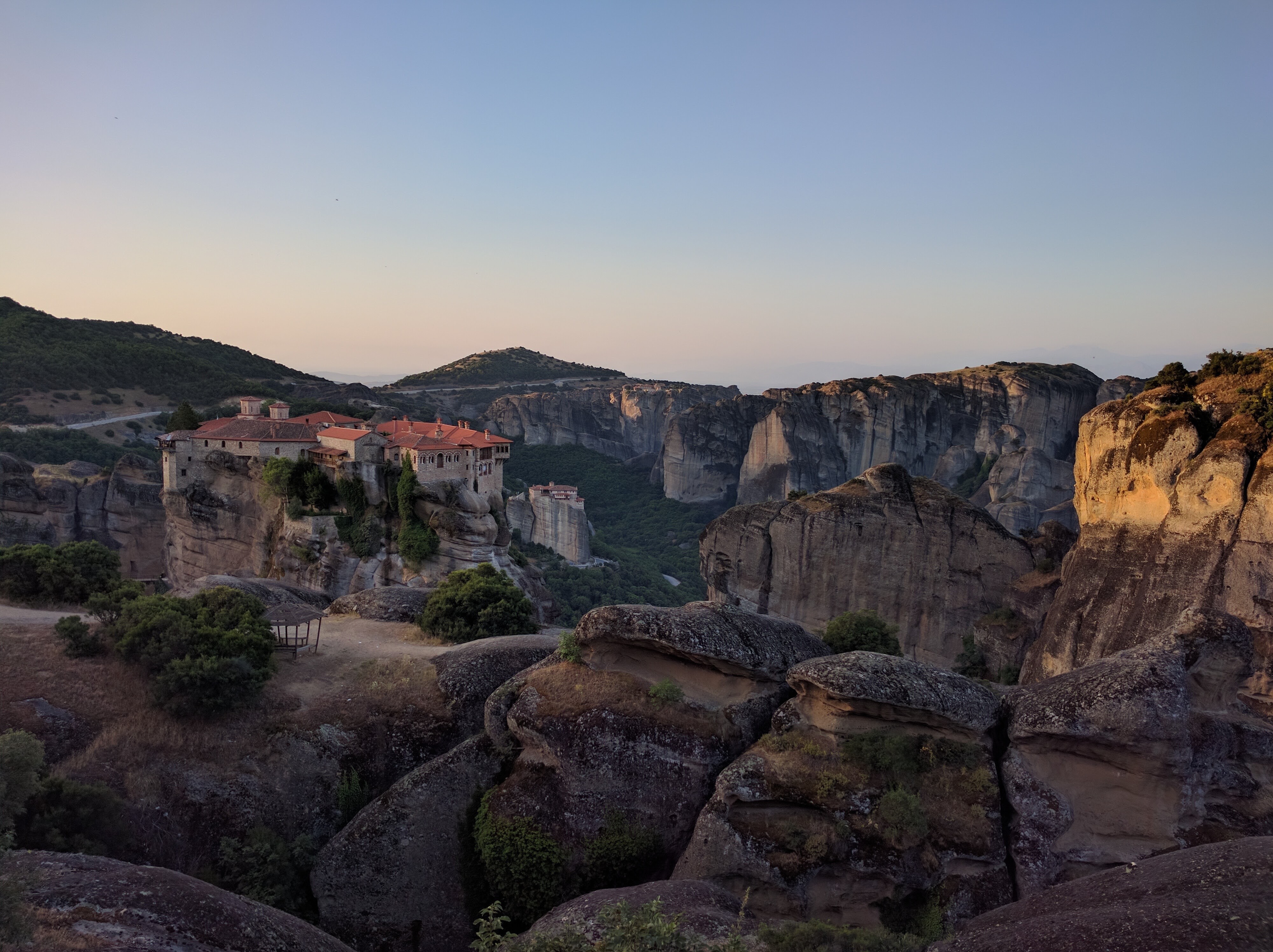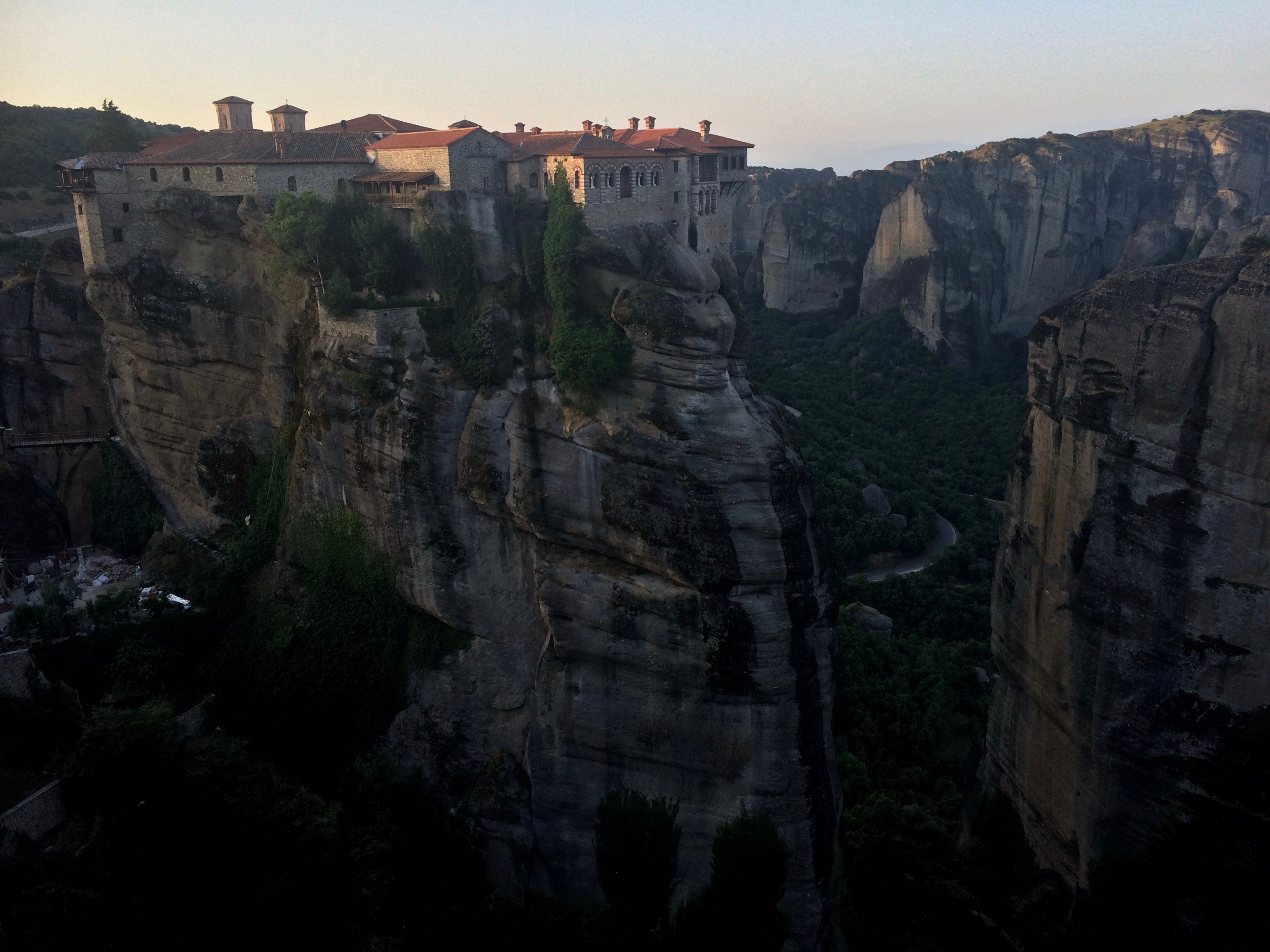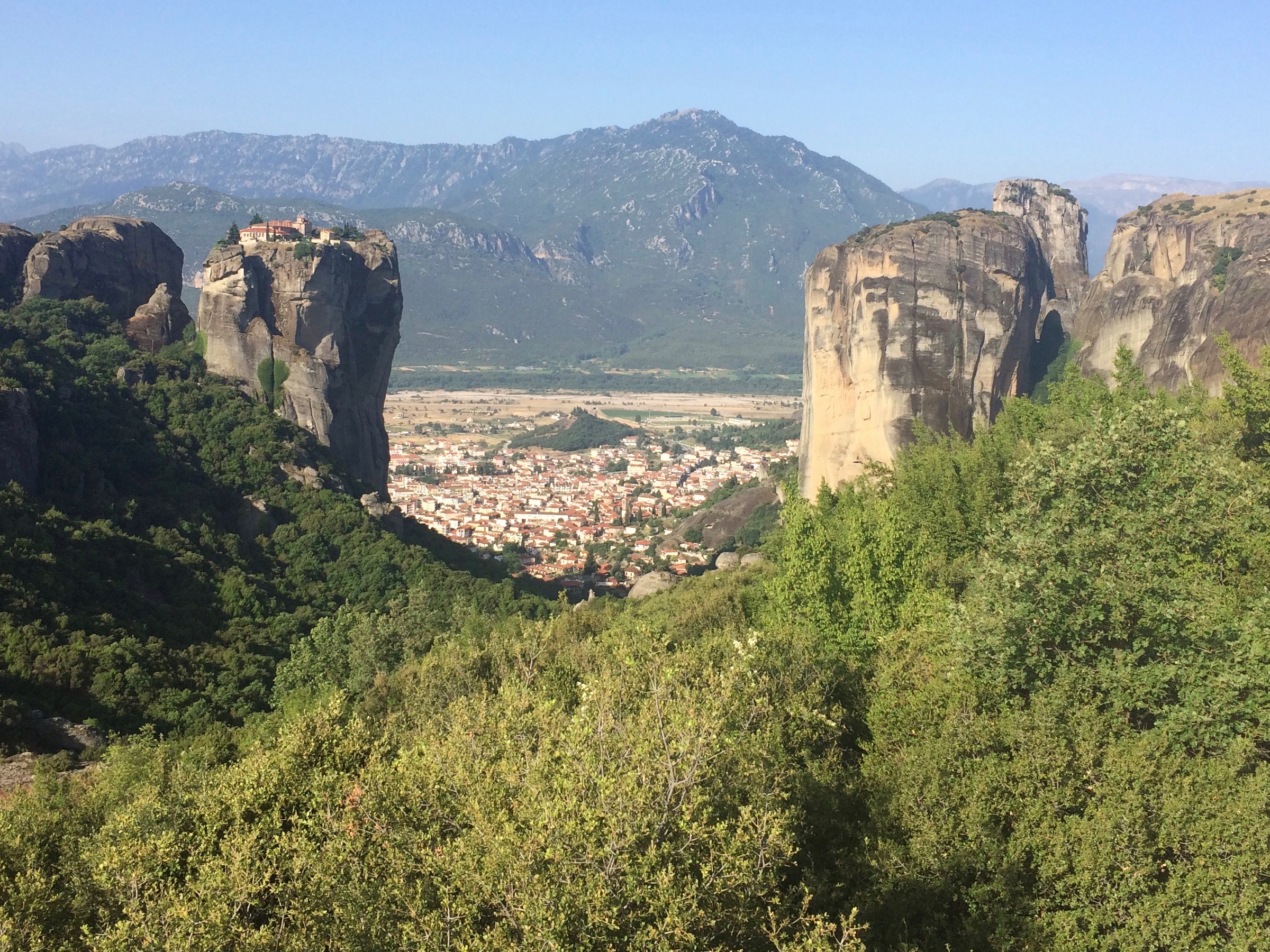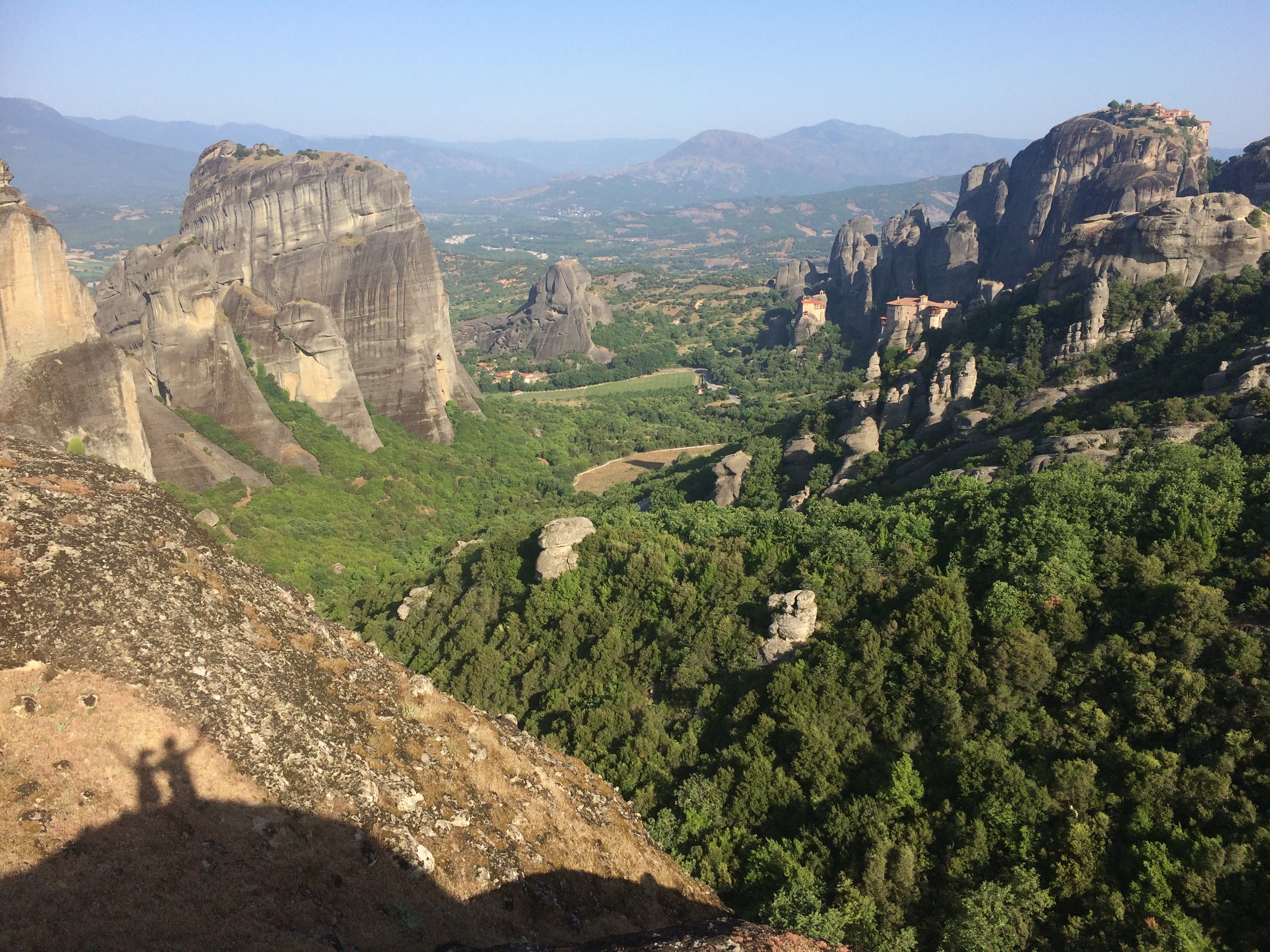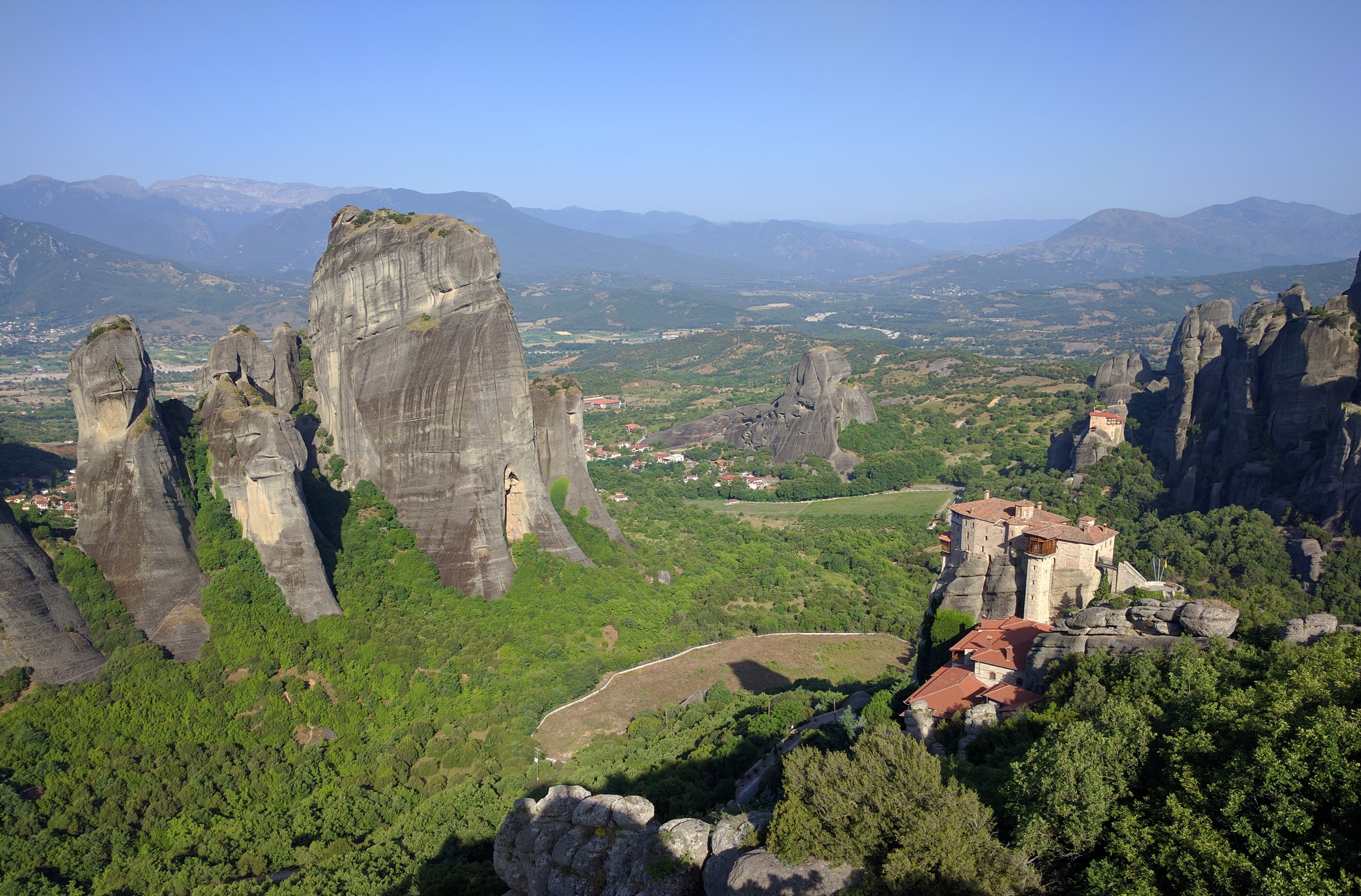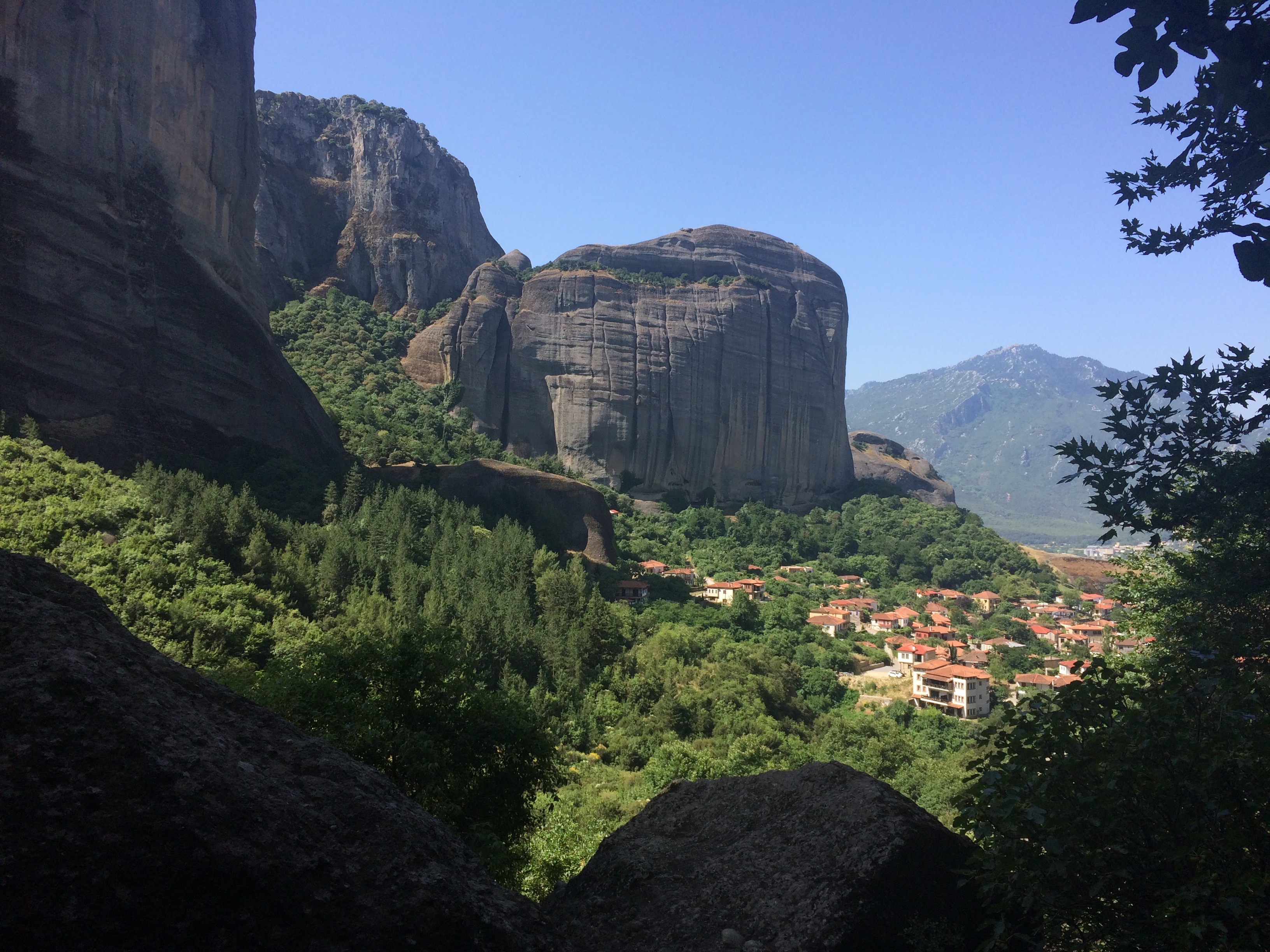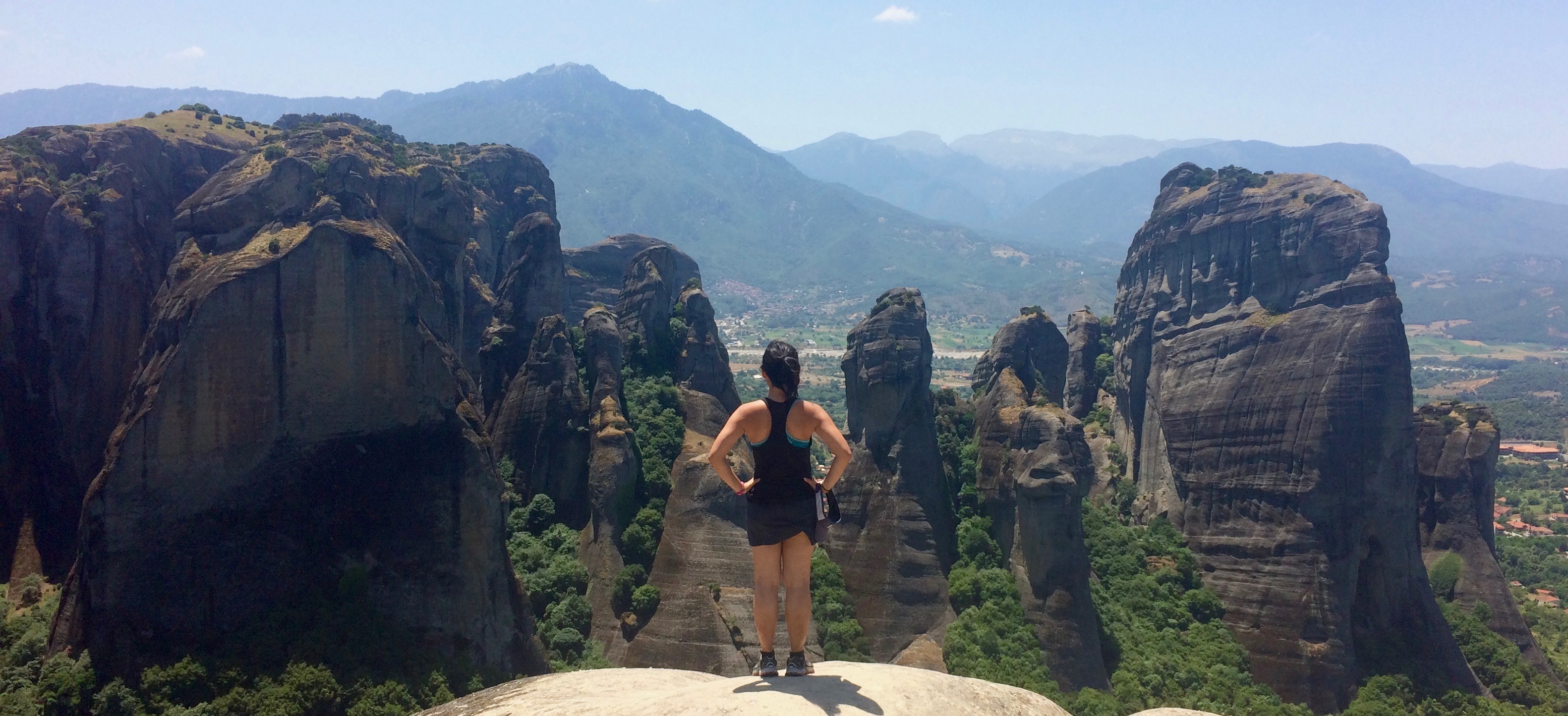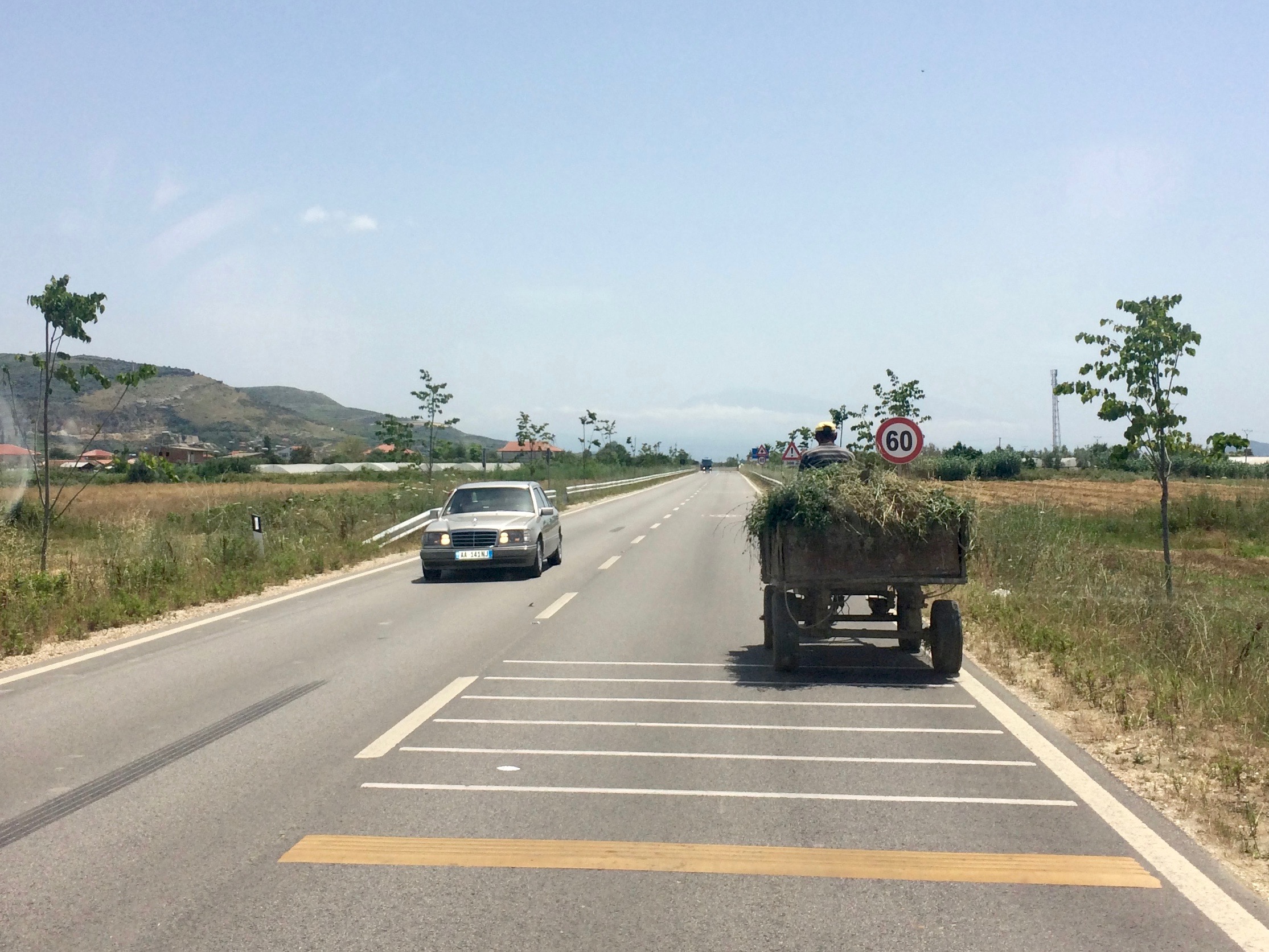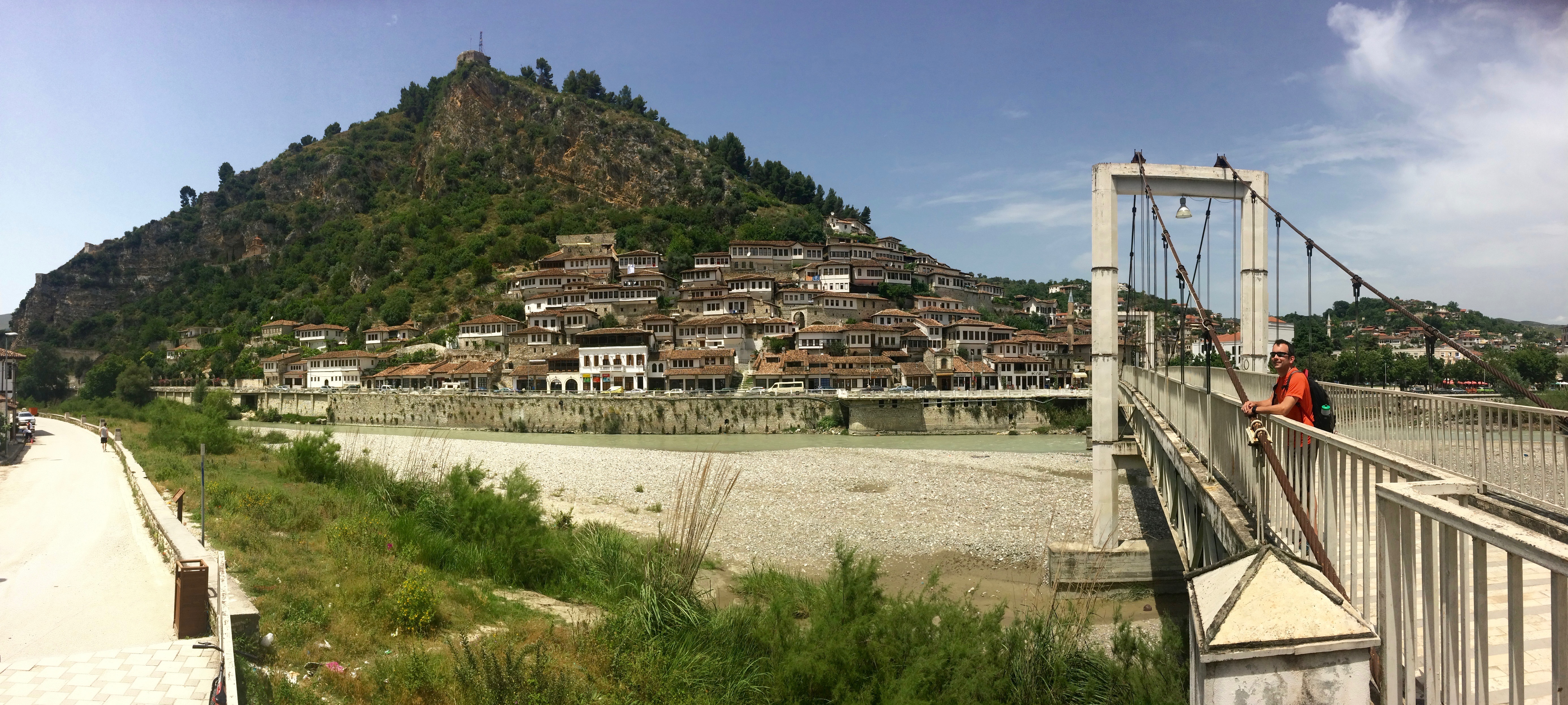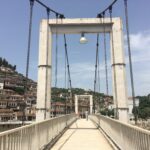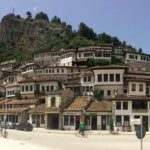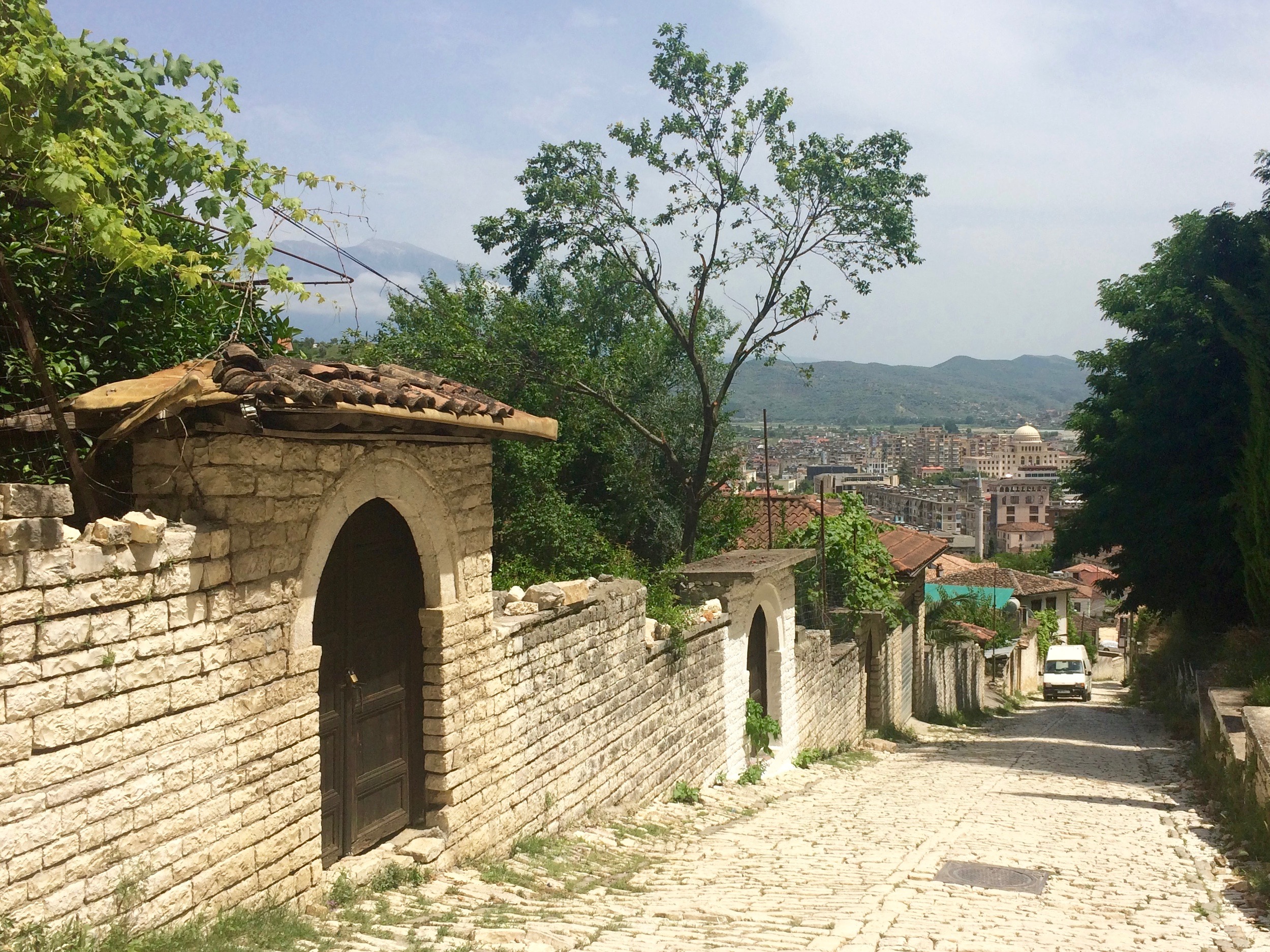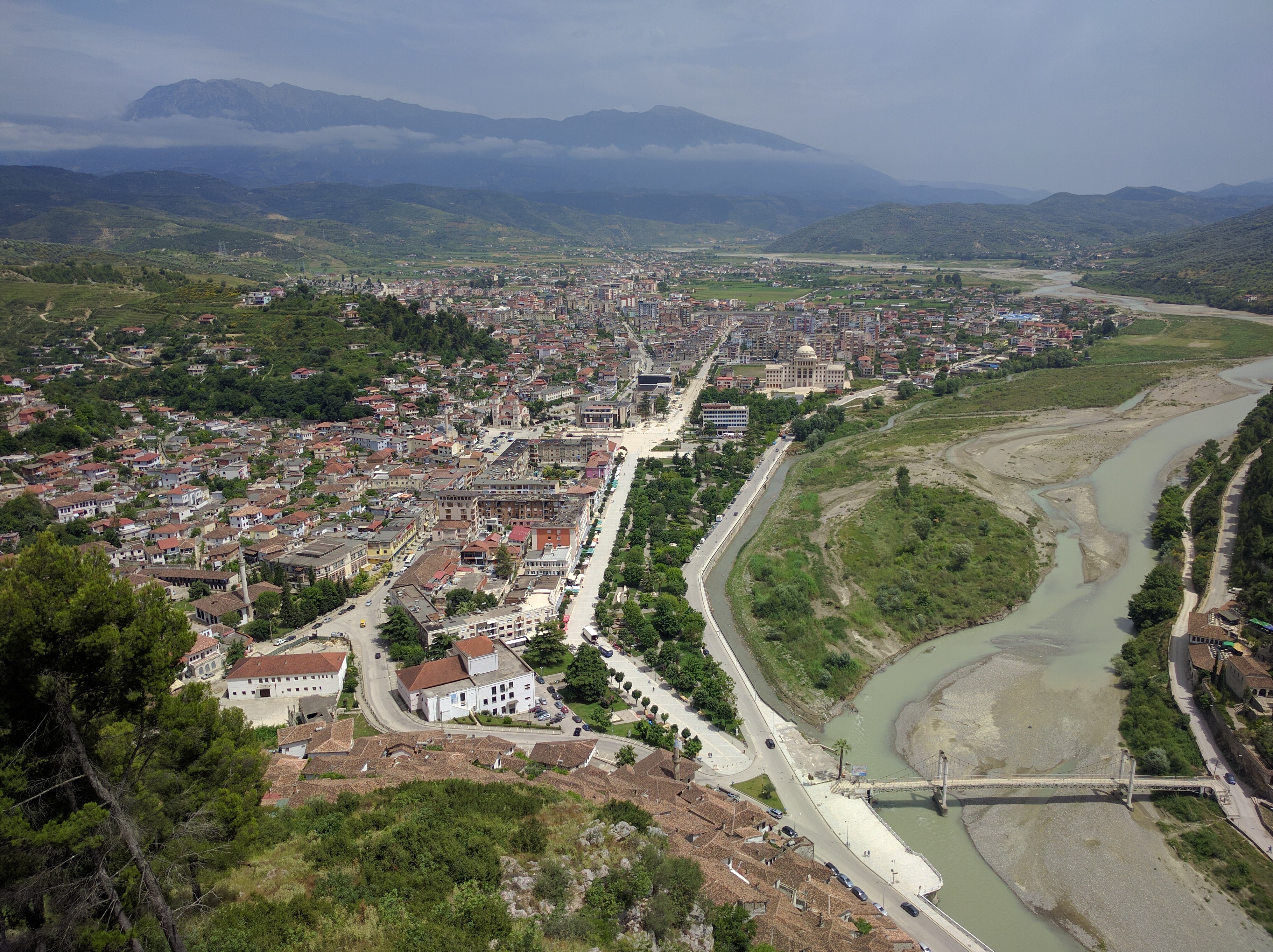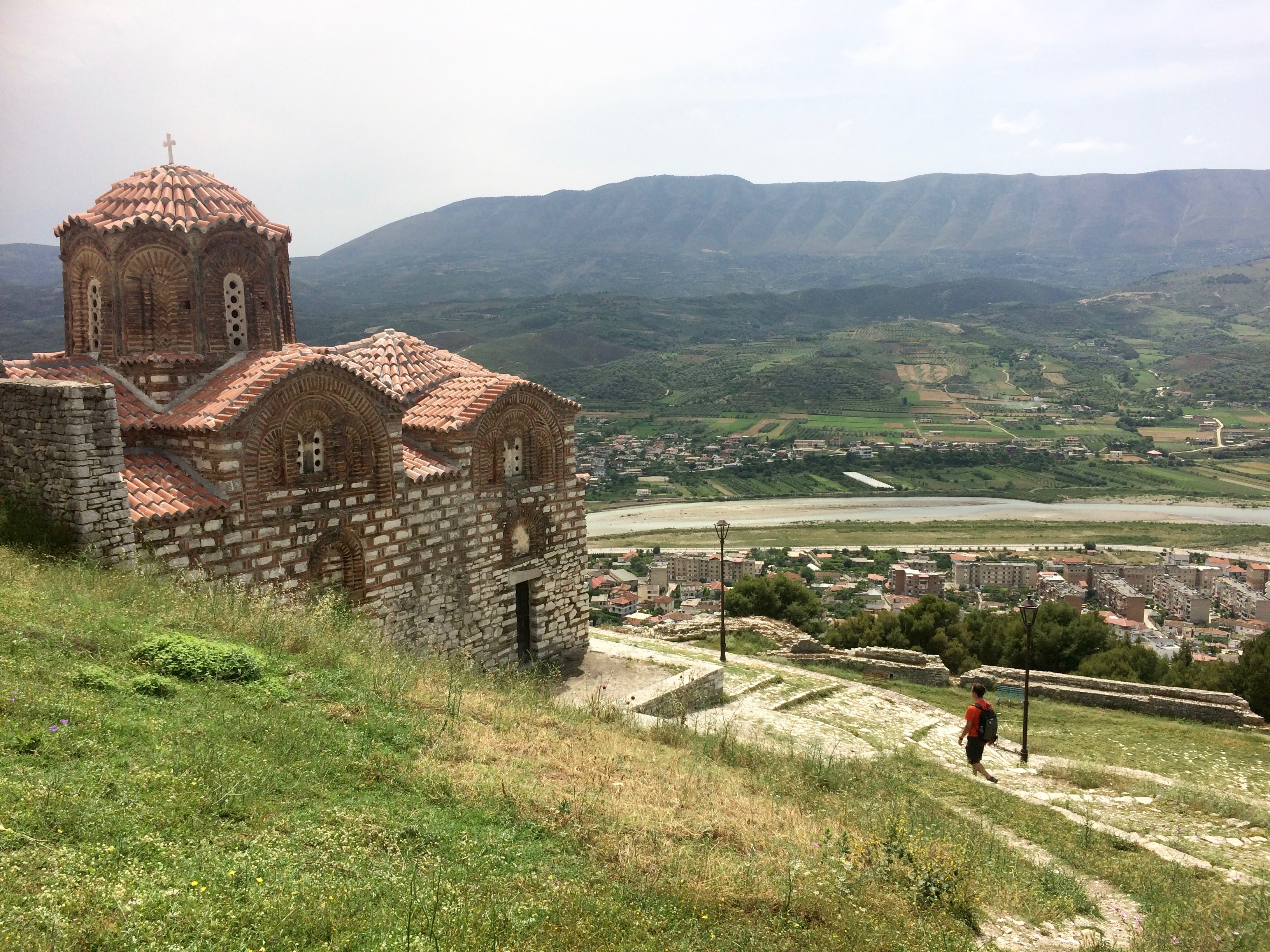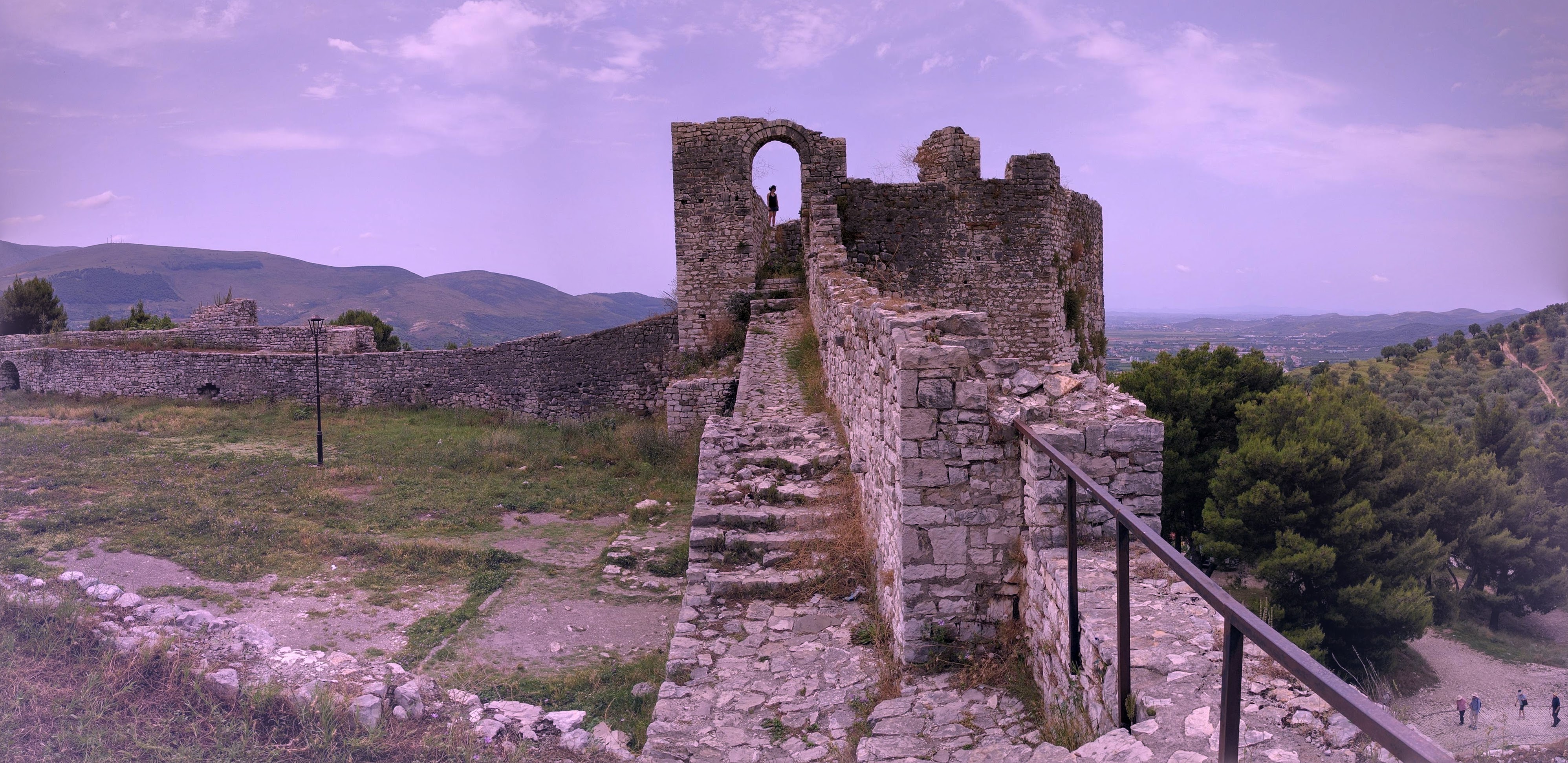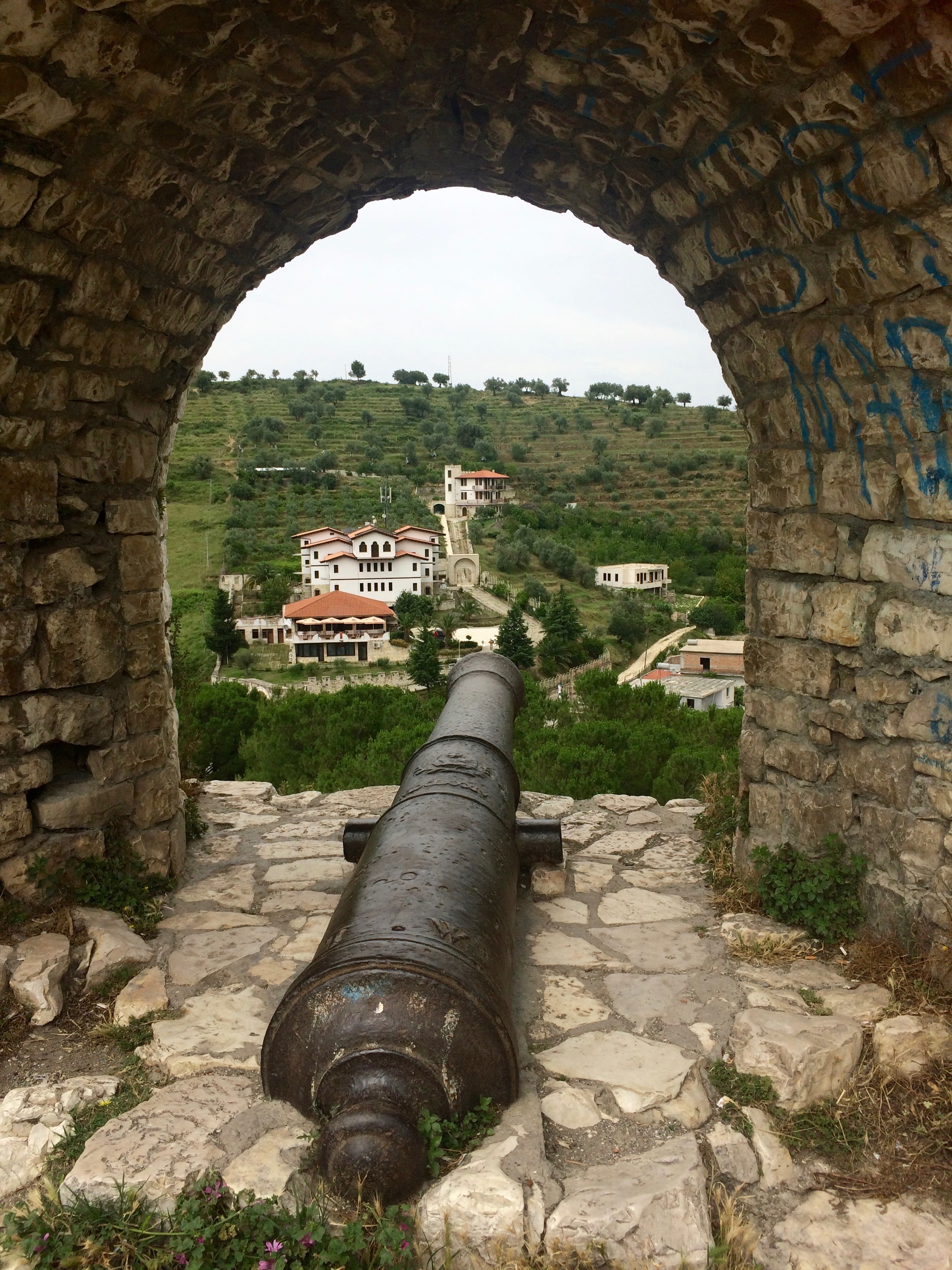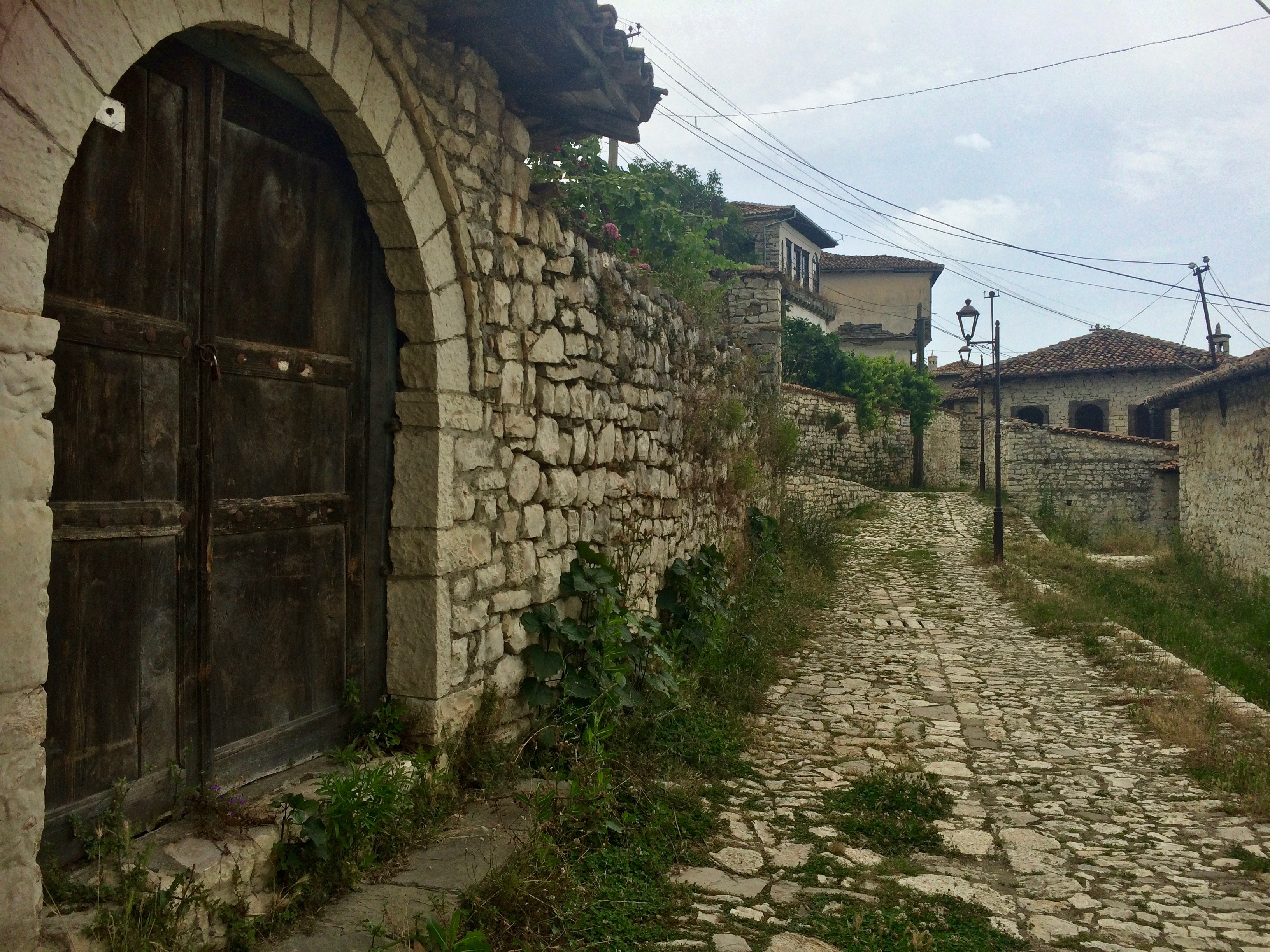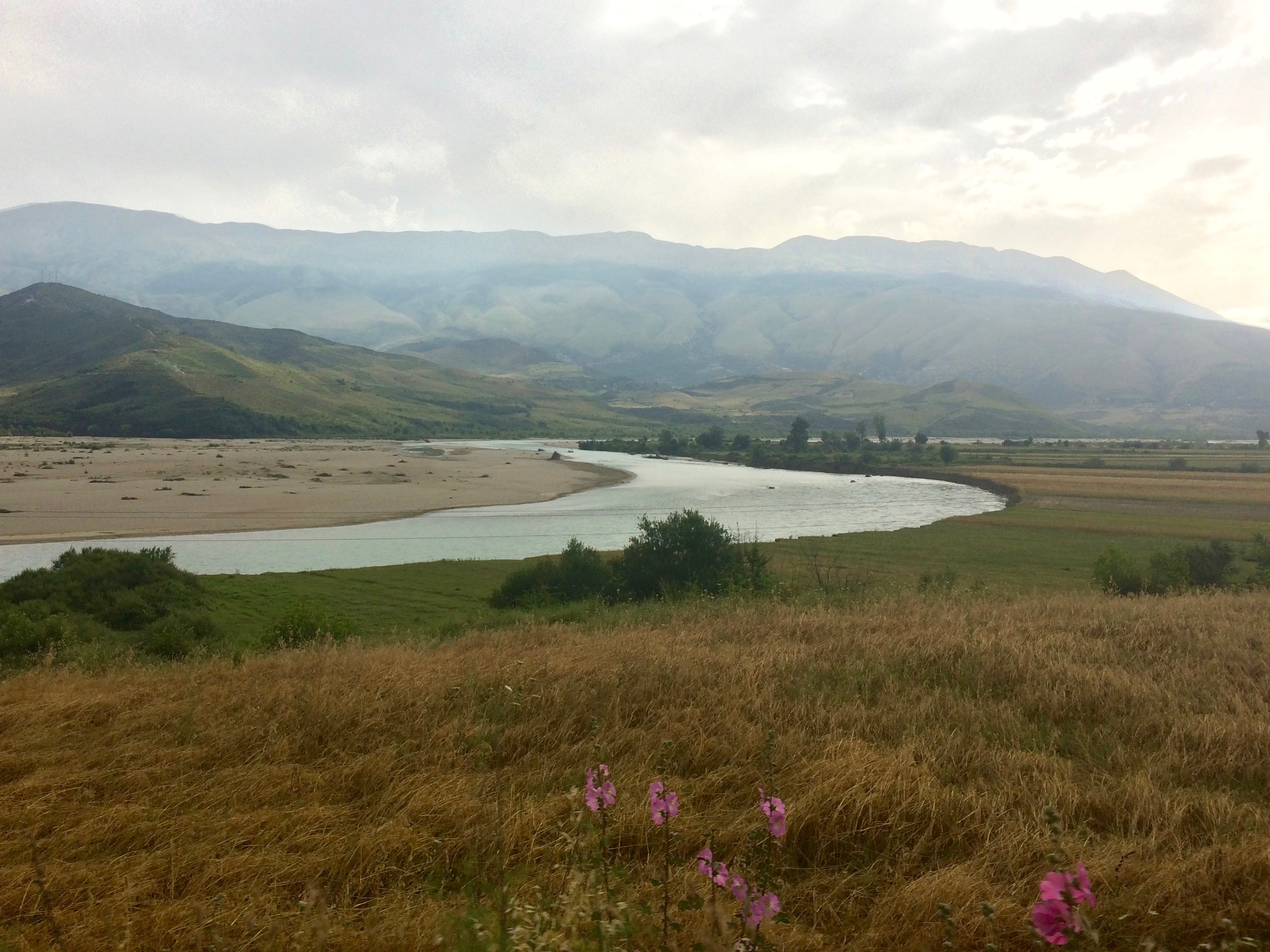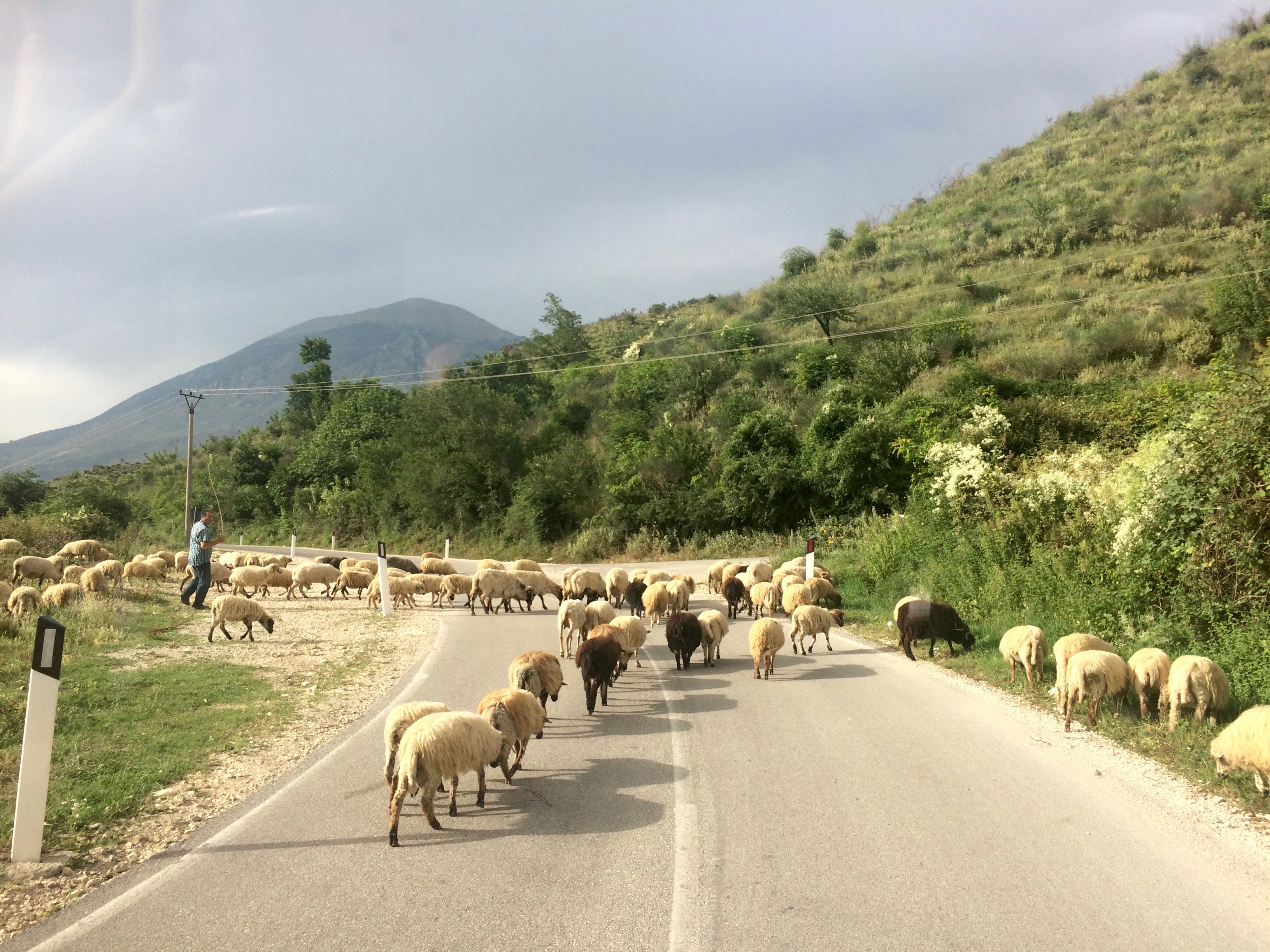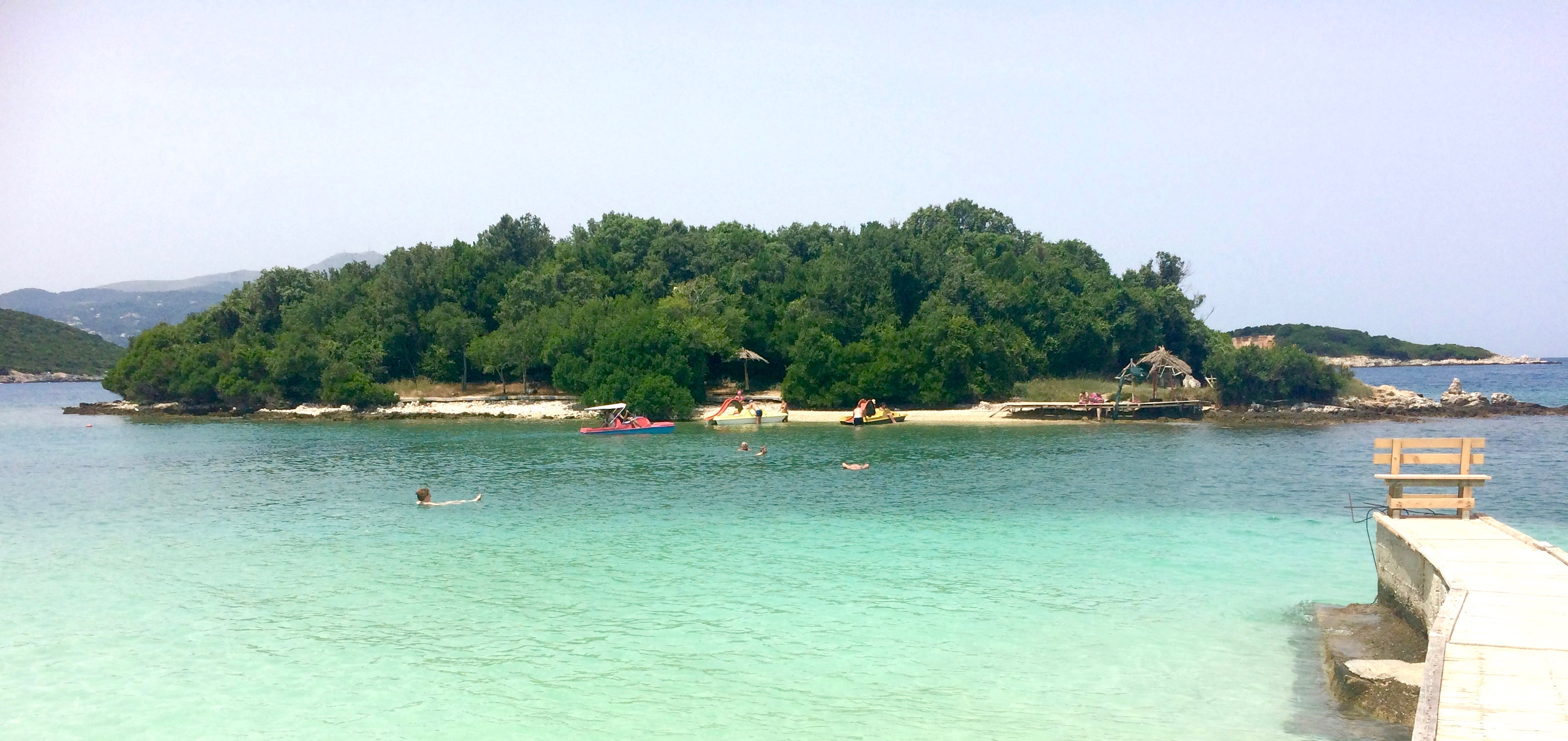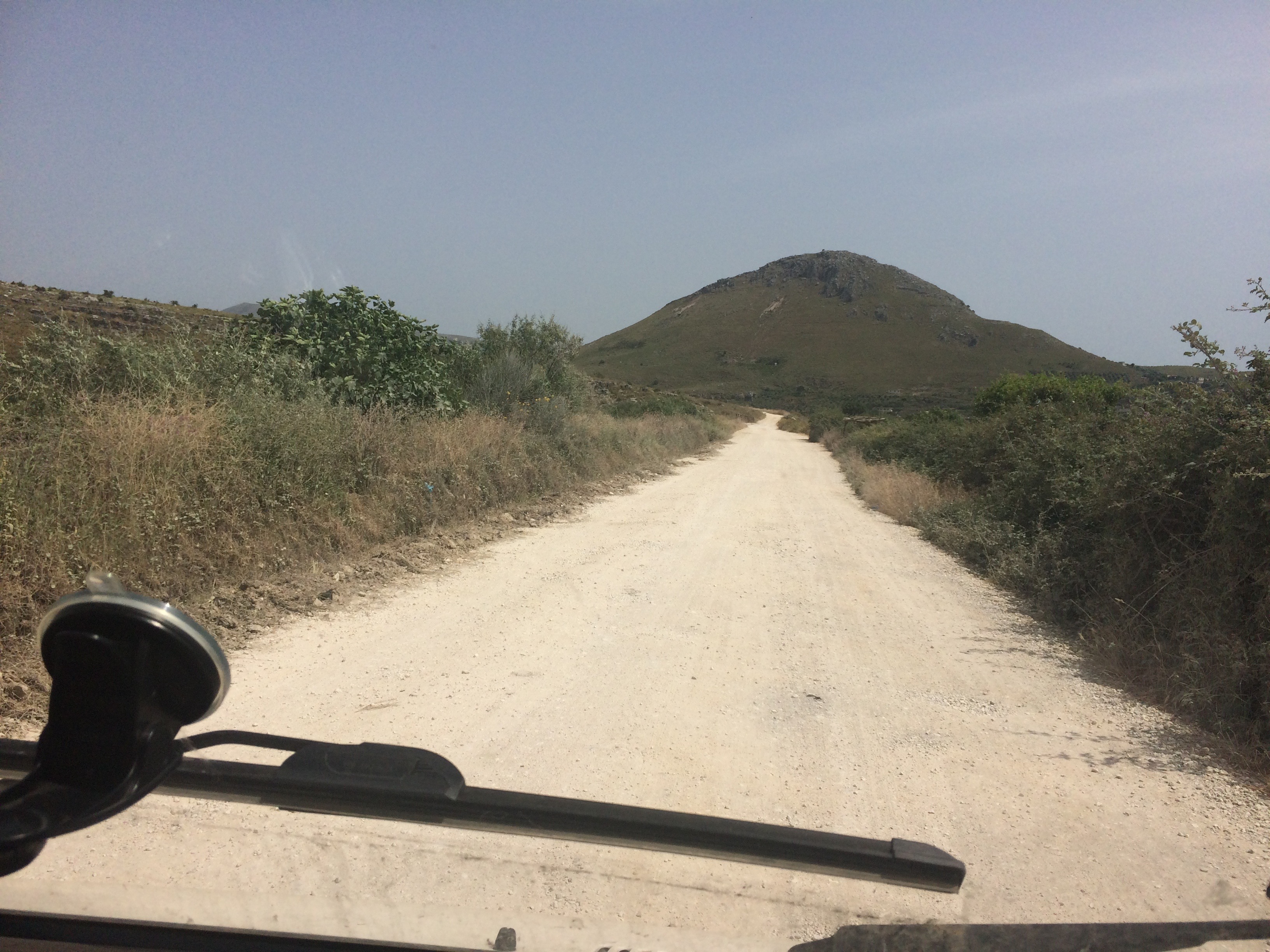I told myself there was no way we’d be going to the Galapagos when we were in South America. So of course we went to the Galapagos.
I told myself there was no way we’d be going to any of the Greek Islands while we were in Greece. Not with our motorhome.
So of course we went the Greek Islands. Actually, we only visited one island (all we had time and money for), but that island is the most stunning and probably everyone’s favorite: Santorini.
Greece is beautifully kissed with thousands of islands: the Ionian Islands, the Aegean Islands, and the Cyclades. With so many islands, some being large and distinct enough to feel like its own country, one could spend months island-hopping Greece’s treasures. With our motorhome, time, and money being a constraint, we felt incredibly fortunate to work Santorini into our schedule even if it only meant 4 days. Before arriving to Greece I thought we would just be exploring mainland Greece, but once I read about Greece’s highlights, I knew we had to squeeze in an island excursion. I’m so glad we did.
After figuring out logistics and discovering just how affordable this hotspot was, I realized that for the first time on our 6-month European road trip, we were finally going on a vacation! A REAL FREAKIN’ VACATION! (But to be honest, I’m not sure if we were more excited to have a basic hotel with air conditioning or to visit Santorini.) Albeit a budget-conscious vacation, we loved our 4-day/3-night stay on the island. I lay out our costs and activities below.
Total Costs for 2:
Motorhome parking in Piraeus: €65 (€13/day x 5 days)
8-hour ferry rides via Blue Star Ferry: €160 (€40 per ride x 4 trips)
Porto Castello Hotel: €97 (€32.33/night, a last-minute deal)
Volcano/Hot Springs Excursion: €40
Local buses: €10.80
Groceries: €16.05
Dining out: €41.60
One nice dinner: €57.77
Total: €488.22
Daily costs: Our costs excluding the ferry rides and motorhome parking was €263.22, breaking it down to €32.90 per person per day for accommodation, food, and entertainment on Greece’s can’t-miss island. Unlike for most visitors, it looked like our #1 expenditure for Santorini was the ferry to get there!
Getting there: Flying is one option (a 1-way flight was more than triple the cost of a 1-way ferry ride!), and riding the ferry is another option. While there was more than one ferry company, we opted for Blue Star Ferry because it was the biggest ferry (I tend to get seasick) and the cheapest option at €40 per person for a 1-way ride. From Piraeus (the port near Athens) to Santorini took approximately 7-8 hours. The view from the ferry as we approached Santorini port: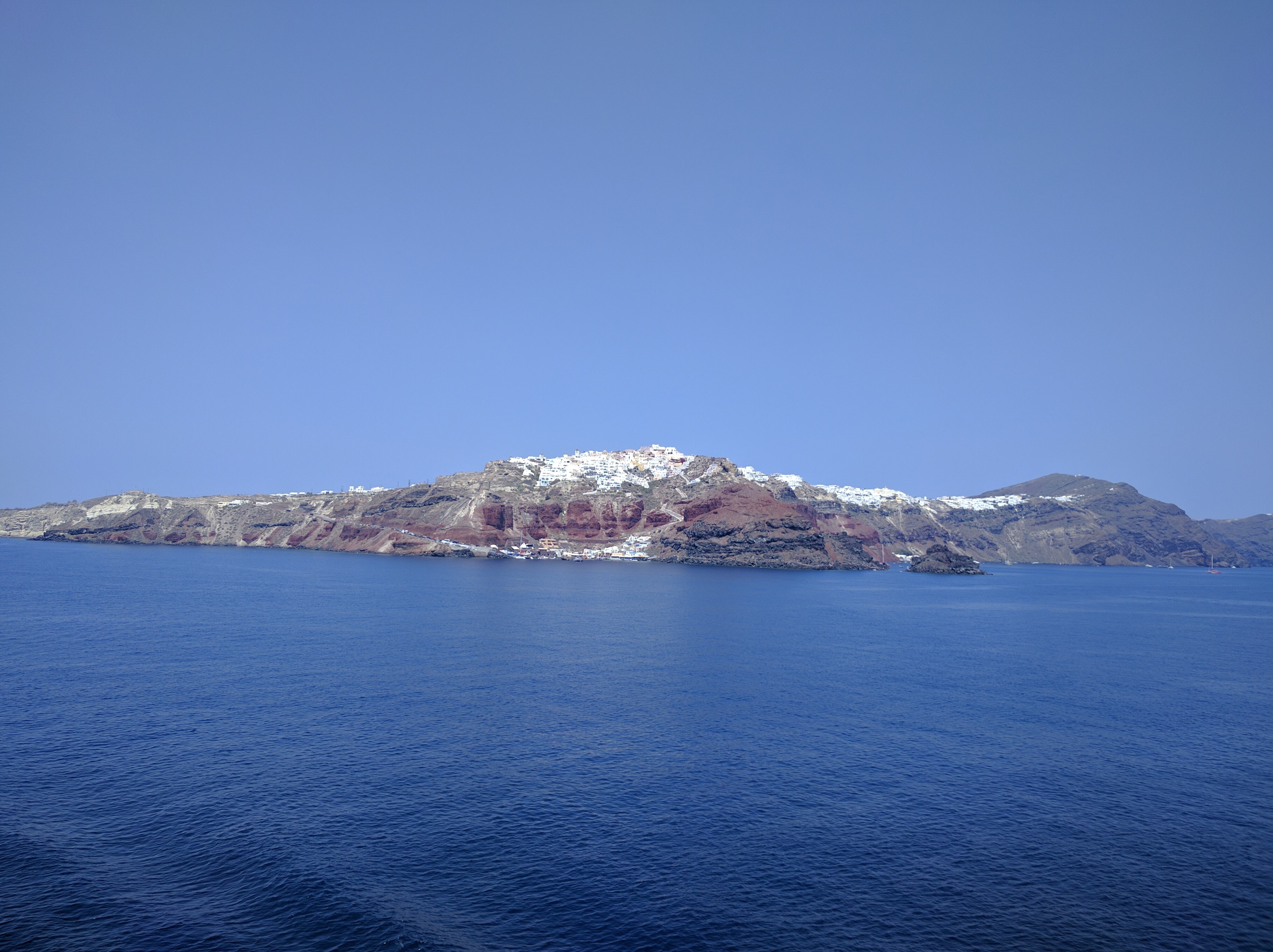
Accommodation: Fira and Oia are the iconic villages of the island, making much of Greece’s iconic stock photography. Average nightly rates in these towns range from €200/night and even an upwards of €1,000/night for the luxury suites with infinity pools overlooking the caldera. However, to my amazement, there were plenty of budget options too! The only budget-friendly accommodation in Fira is camping or a dormitory, and there was no way we were staying on Santorini without air conditioning or in bunk beds. The next budget-friendly accommodations are located in Perissa, on the southeast coast of the island. The cheapest hotels I saw in Perissa were €24, but I didn’t want to stay in a town that was a 30-minute bus ride from Fira and 1-hour ride from Oia. Upon extensive research I discovered Porto Castello, a budget hotel on the eastern coast, immediately opposite of Fira. With its black sand beach across the street from the hotel and a free shuttle into Fira every 2 hours (a quick 10-minute ride), it was a deal at only €32/night. The key to budget travel is finding last-minute deals, something most visitors can’t do when booking months in advance.
Local buses: We took the bus from Fira to Oia and vise versa several times. The 25-minute ride cost only €1.80 per ride. Super cheap!
Food: In addition to the snacks and bottled water we purchased from the grocery store in Fira (the cheapest market is Carrefour), I actually hauled in food from mainland Greece: a box of cereal, a container of milk, a bag of apples, peanut butter, jelly, sandwich bread, and several cans of soda and beer. We already had these in the motorhome, so I thought I’d bring whatever I could. Because we ended up not being anywhere near town in the afternoon, the sack lunches I packed ended up being incredibly convenient. Breakfast was covered everyday with the box of cereal and milk, lunch was pb&j sandwiches, chips, and apples, and dinner was the cheap-eat of gyros. We did splurge on one dinner for our last night at Volcano Blue, a restaurant with AMAZING views and reasonable prices.
Tip: Not only did we make a reservation perfectly timed for sunset, we went to the restaurant the day before to select the table we wanted. We ate a delicious seafood dinner with wine (€57.77 after tip), and literally had the best restaurant view on the terrace.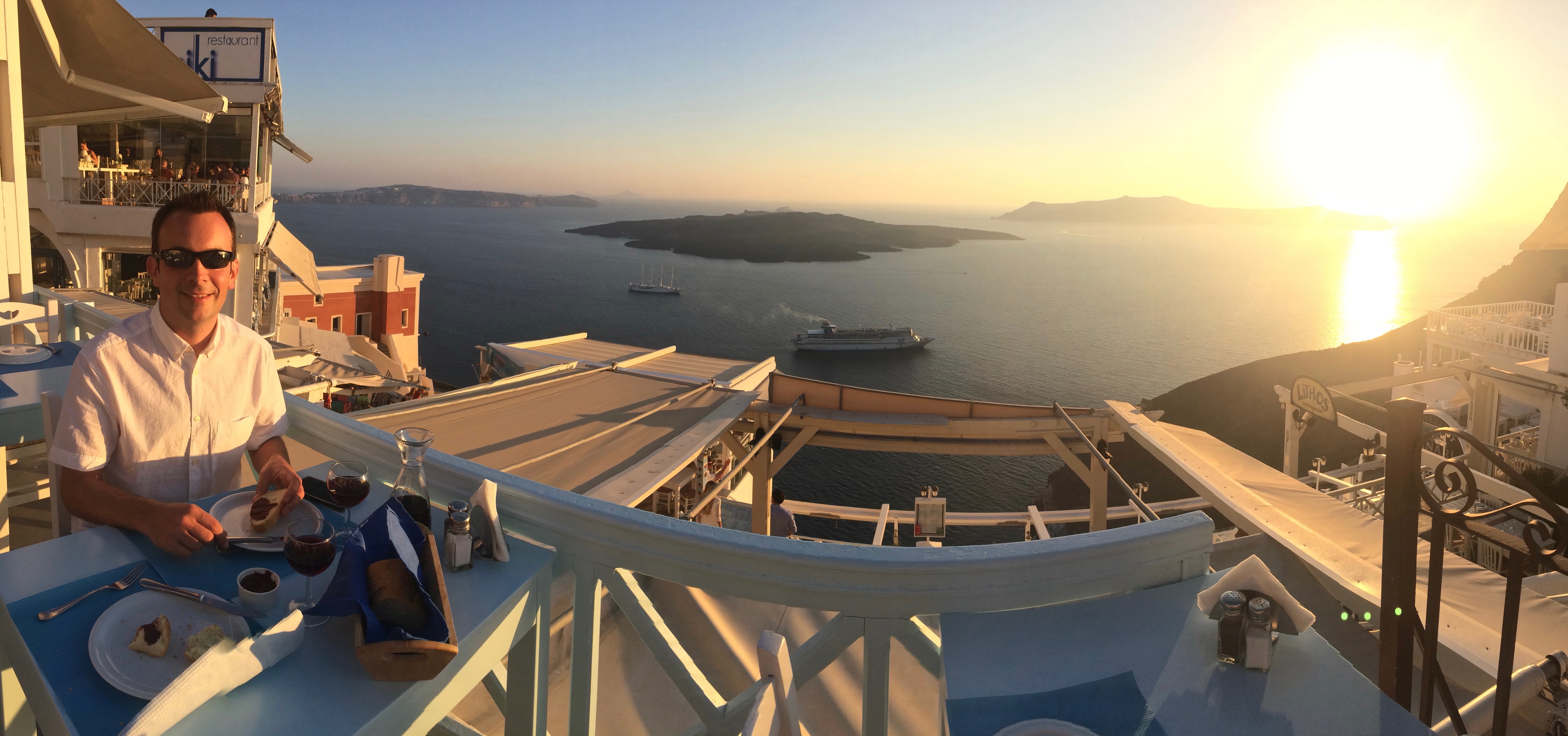
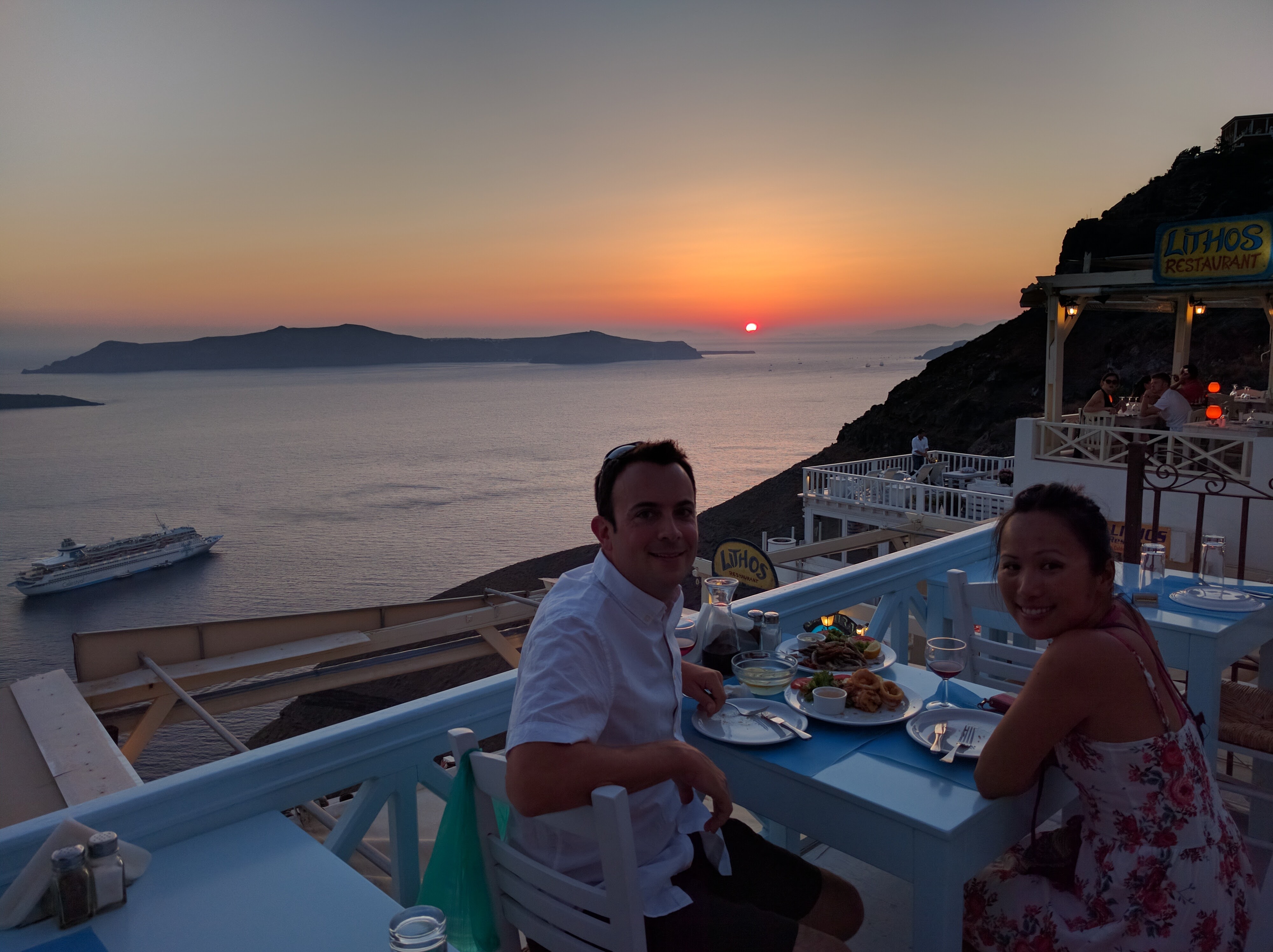
Excursions: There were plenty of excursions and tours on the island—wine tours, sailing and yachting tours, ATV and motorbike rentals, the list goes on. The only one tour that interested me was the hot springs/volcano tour for €20 per person. Everyday from 11am-2pm and 2pm-5pm boats sail out to Palia Kameni, one of the two islands in the center of the caldera. This meant a steep walk, or €5 cable car ride, or €5 donkey ride from Fira down to the old port and vise versa. We didn’t want to exploit the sad donkeys so we walked up and down the walkway. 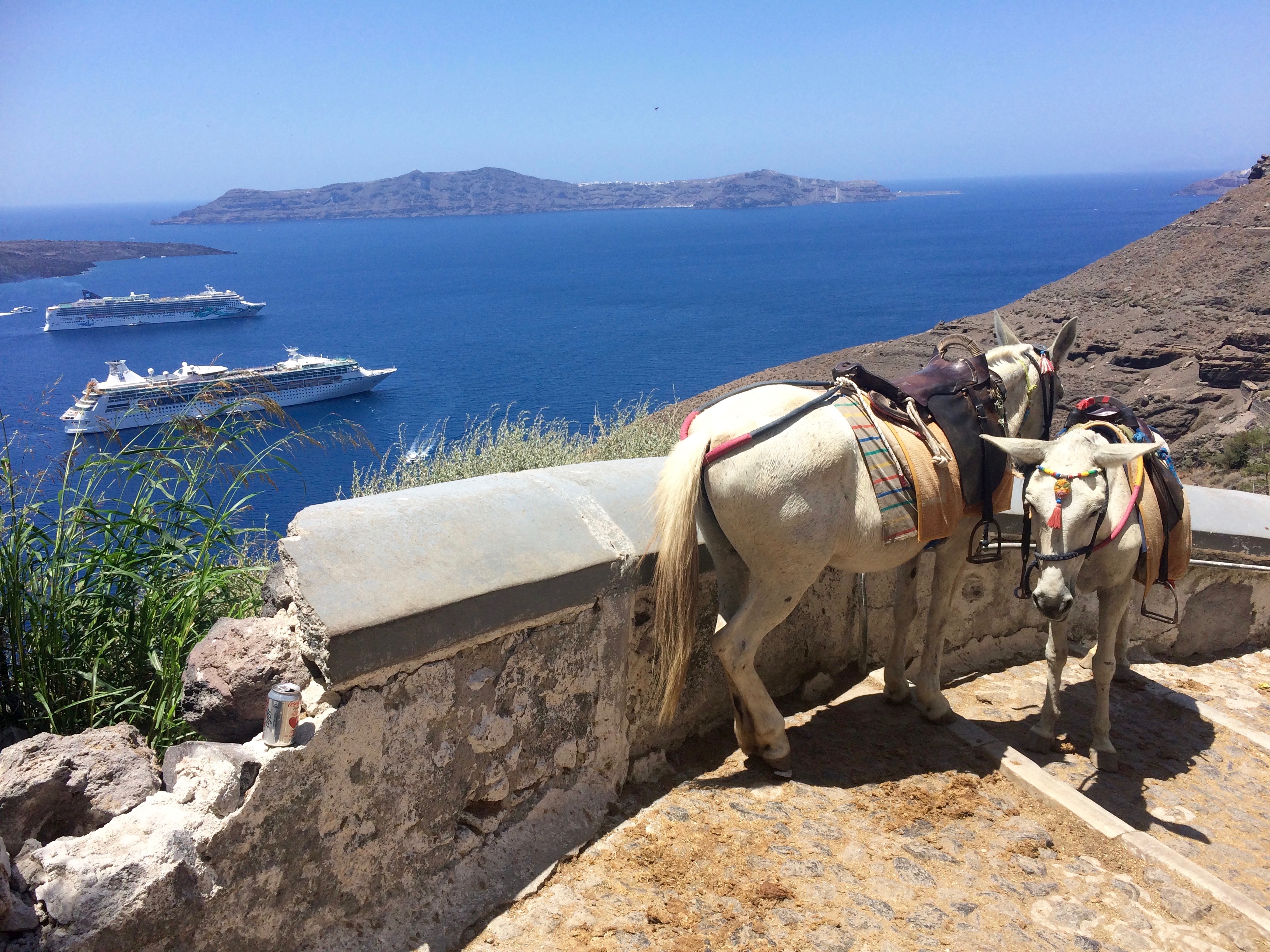
Once on the boat, we enjoyed a quick ride to the hot springs. We, along with the rest of the swimmers, jumped from the boat into the sea and swam to the natural warm springs (they aren’t hot springs!) and covered ourselves in mud. We were glad our swimwear was dark, otherwise they would have been stained by the mud. I can’t say whether it was worth the €20, but it was still a fun excursion nonetheless.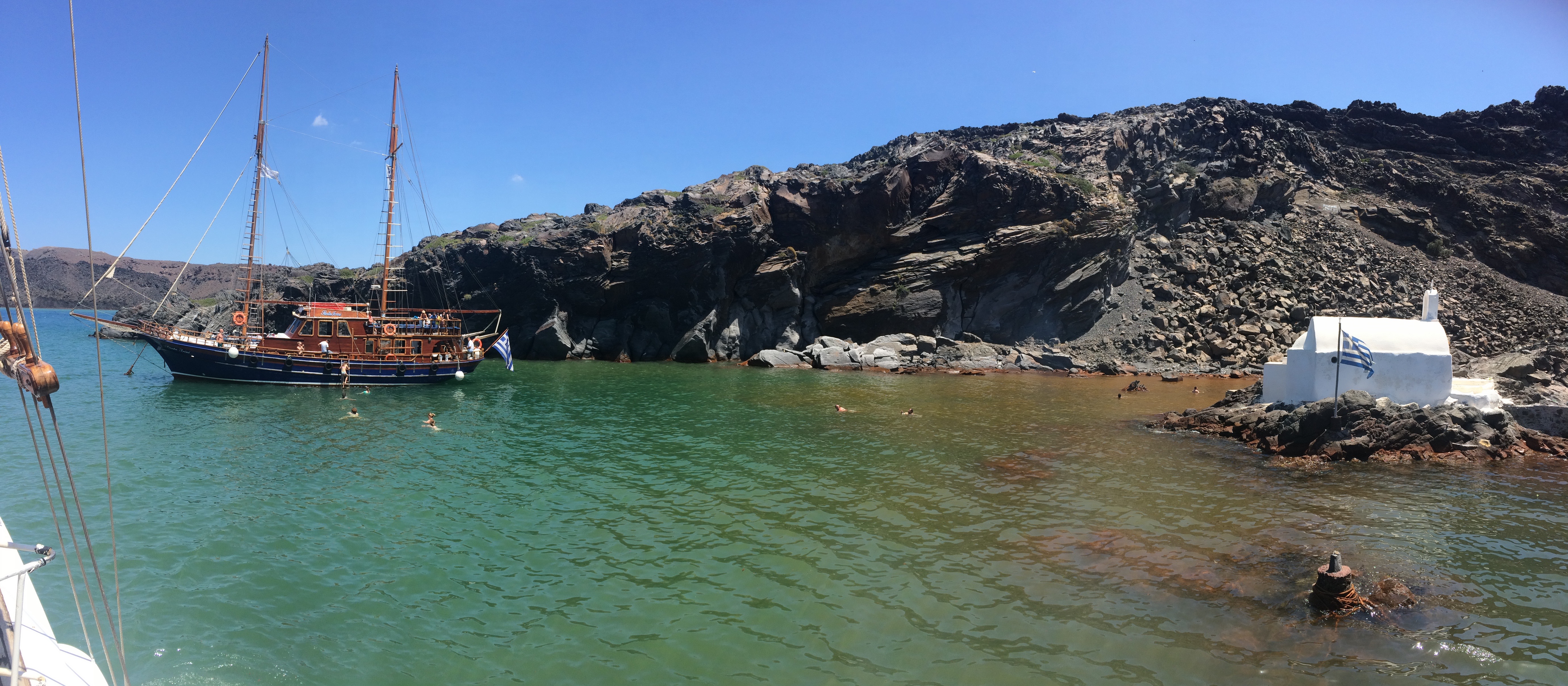
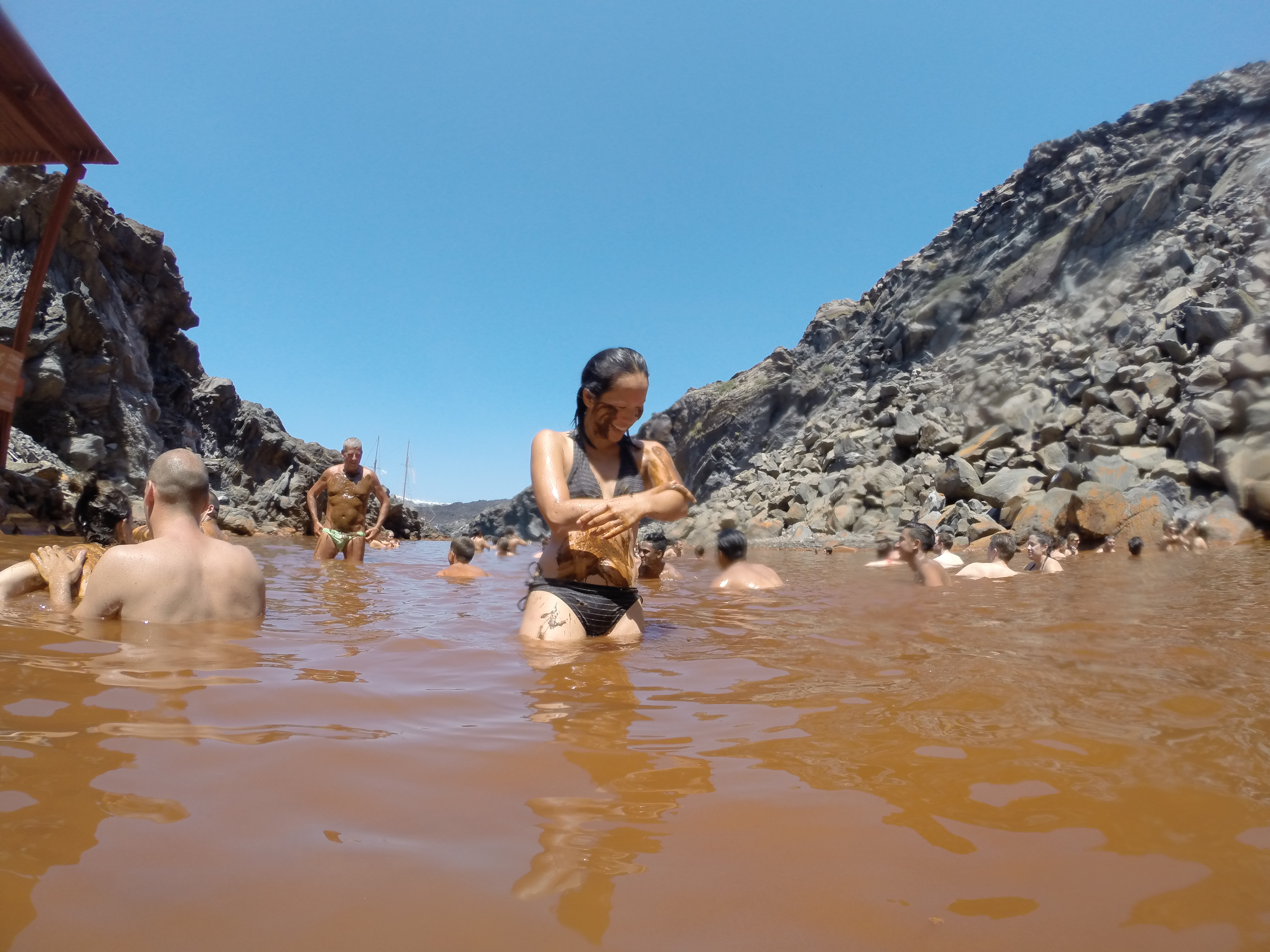
Fortunately my favorite activities in Santorini were free: “cliff” jumping in Amoudi Bay, awing at the iconic architecture in Fira and Oia, “hiking” the trail from Fira to Oia, and watching sunset. While walking practically anywhere on Santorini promised spectacular views of the town or the caldera, my favorites are below.
On the western end of Oia, the stairways leading down to the sea took us to Amoudi Bay.  From the bottom of the steps, we followed a trail to a rocky area where swimmers left their belongings and swam out to a small rocky outcrop with a short cliff to jump from. We loved swimming in the crystal clear water, jumping from the “cliff,” and encouraging others to jump in too.
From the bottom of the steps, we followed a trail to a rocky area where swimmers left their belongings and swam out to a small rocky outcrop with a short cliff to jump from. We loved swimming in the crystal clear water, jumping from the “cliff,” and encouraging others to jump in too.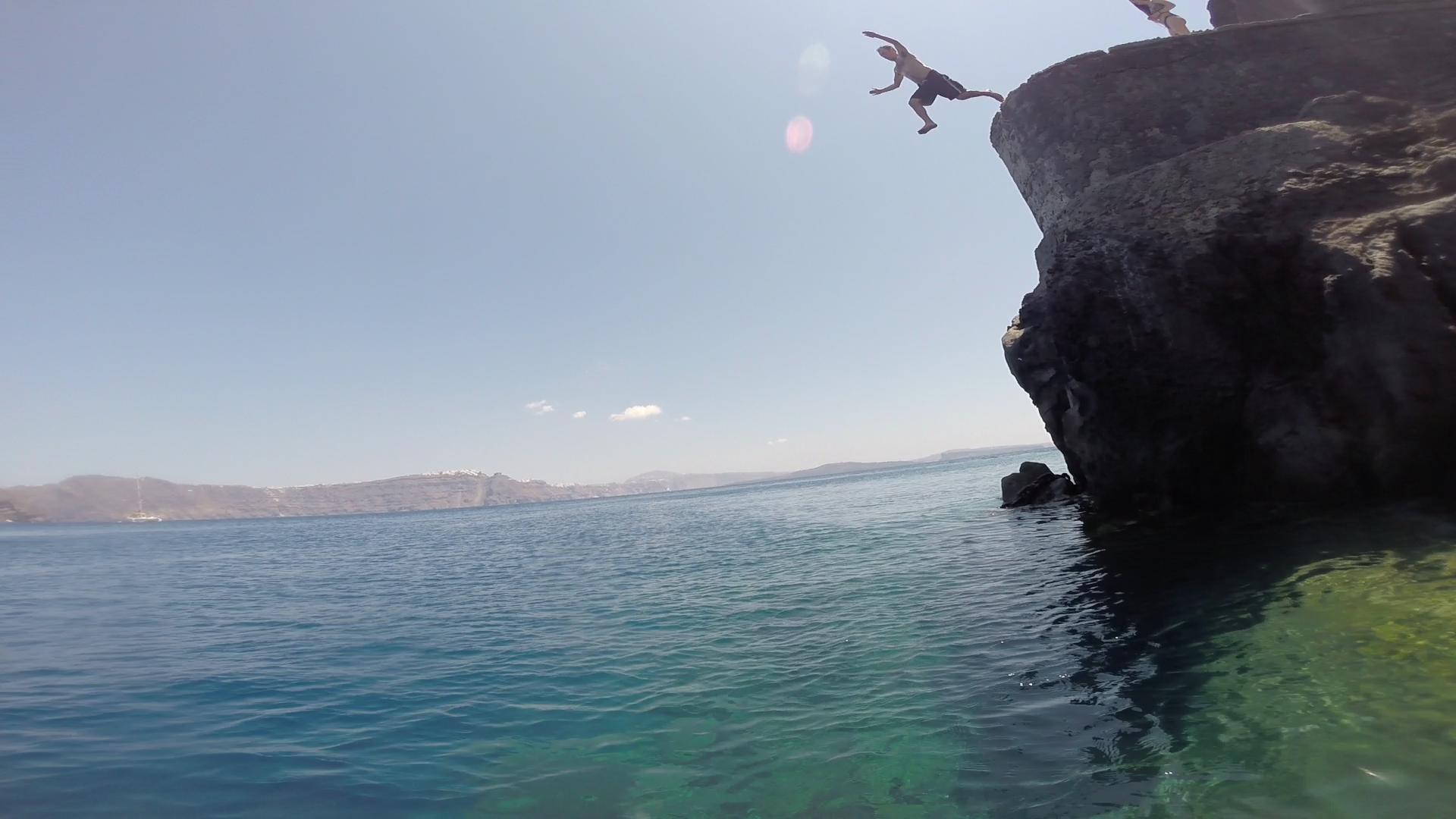
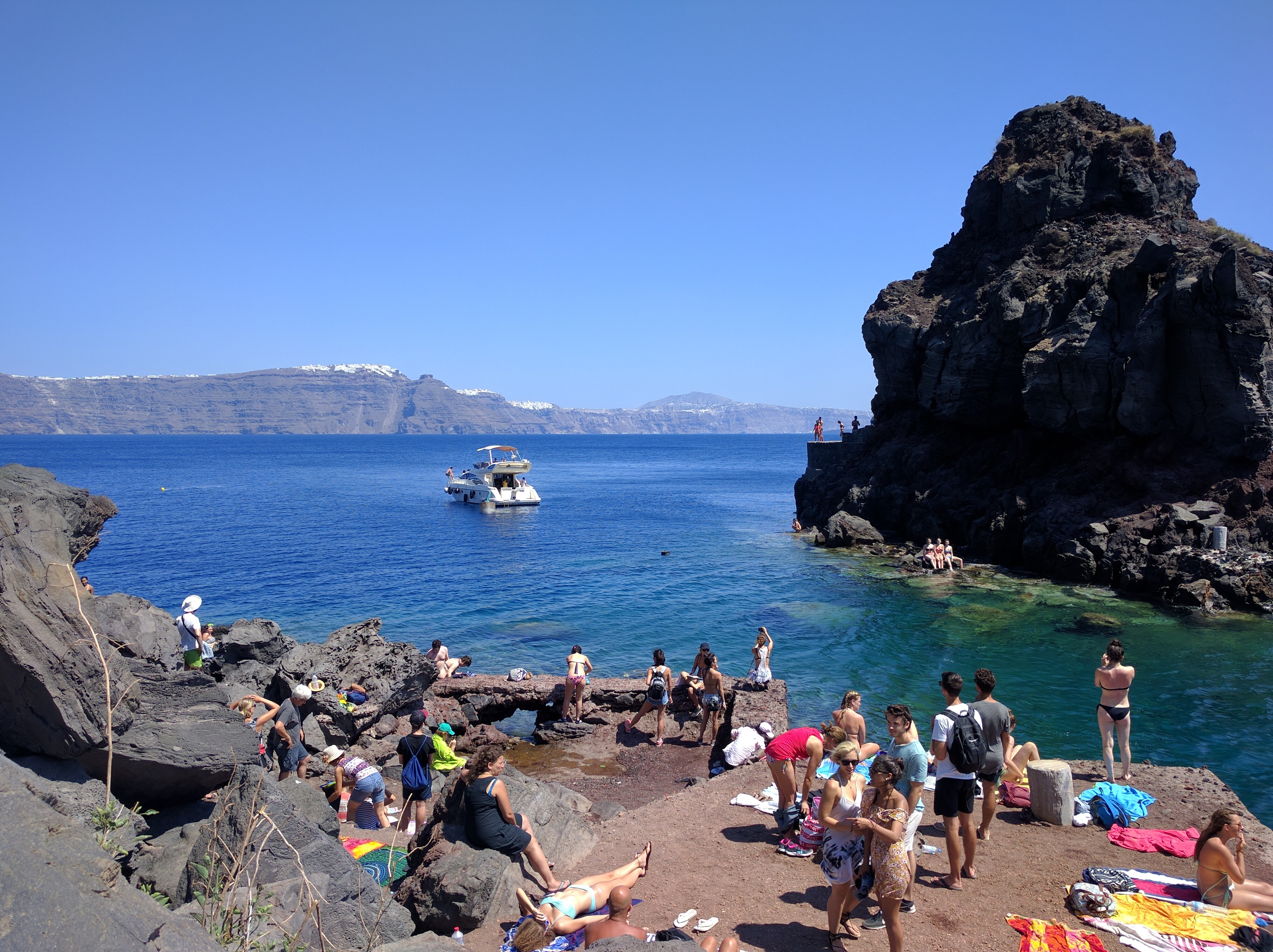
Iconic photos include Fira and the caldera: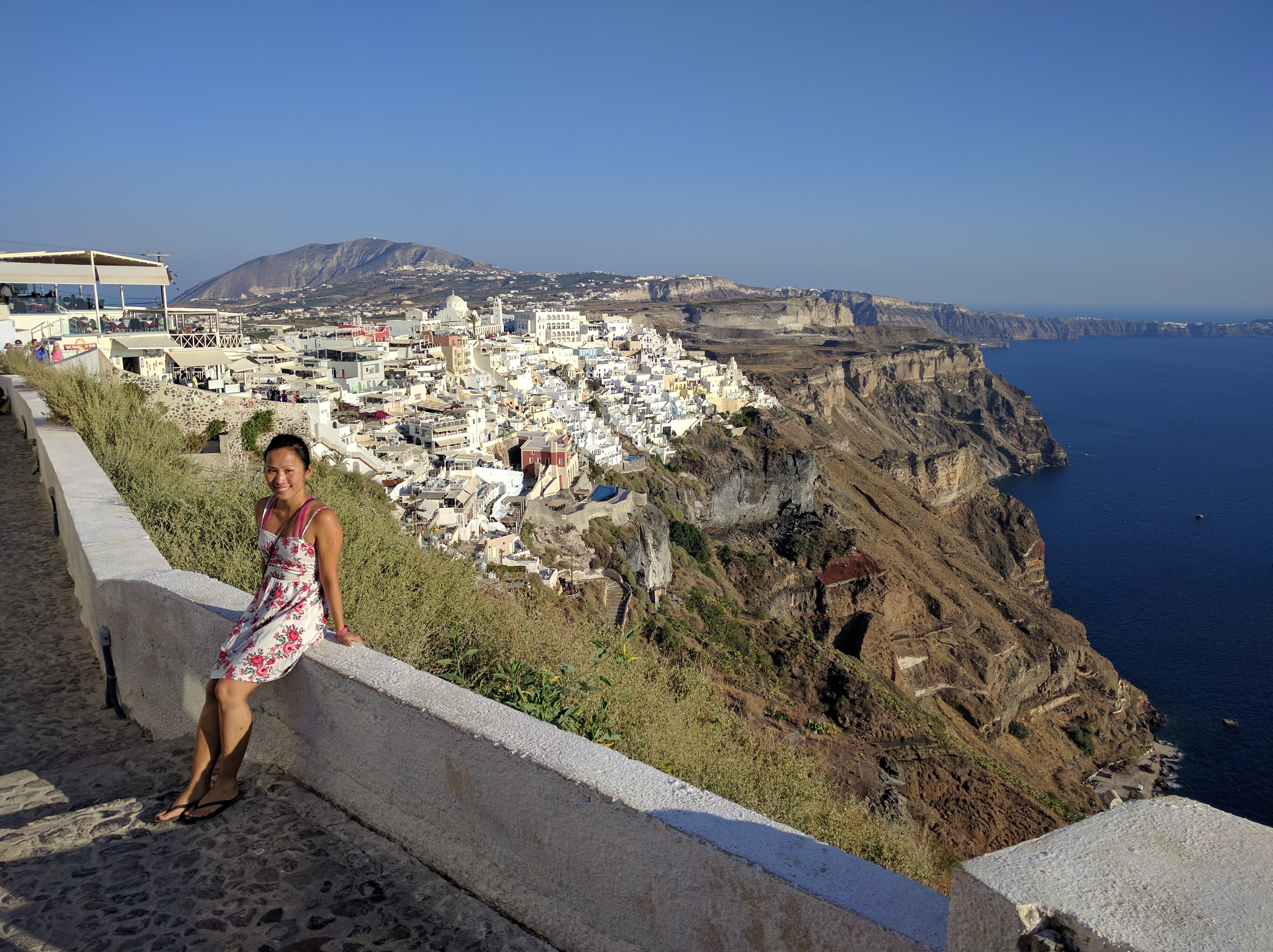
Fira’s three-bell church: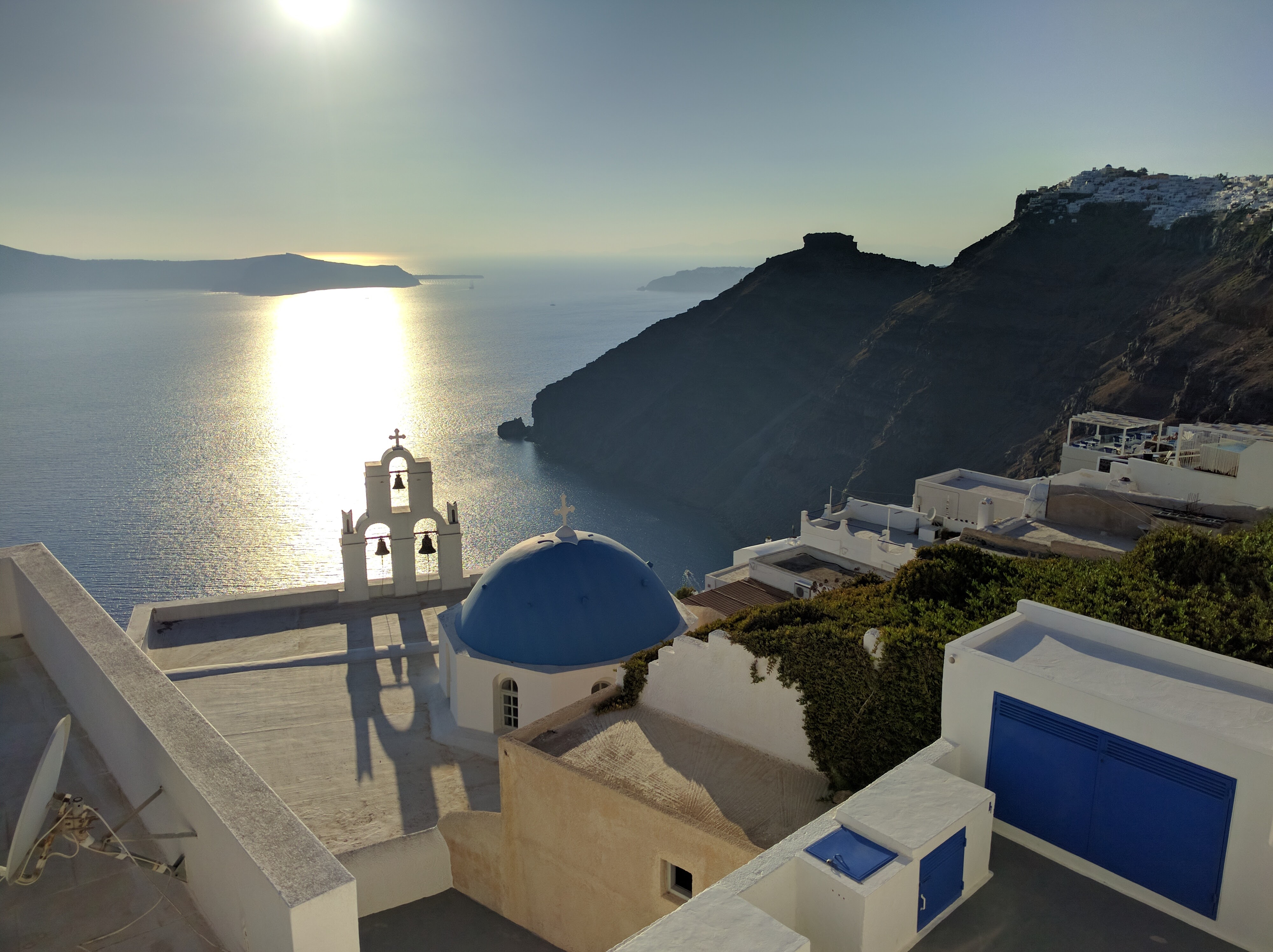
The cityscape of Oia: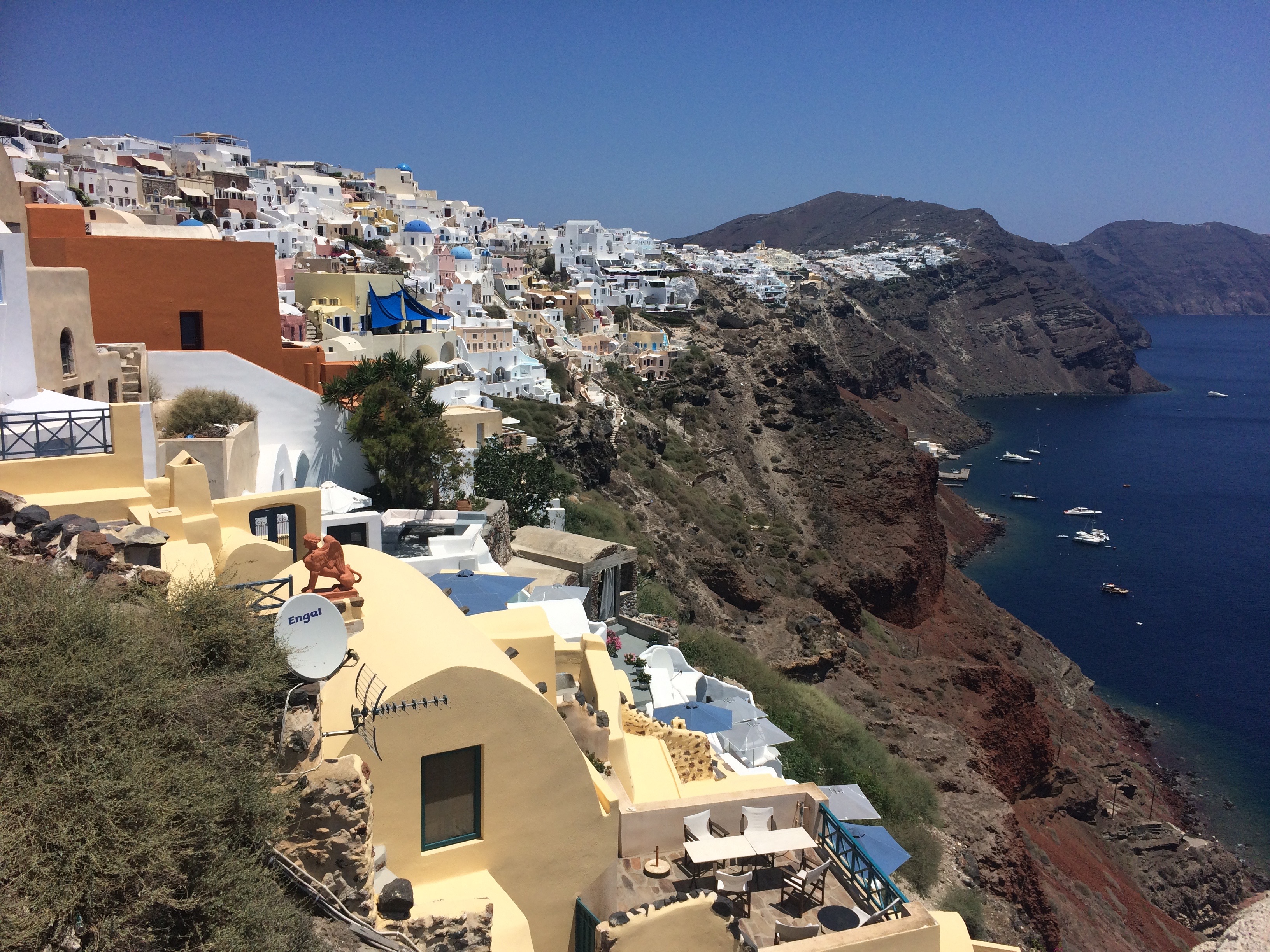
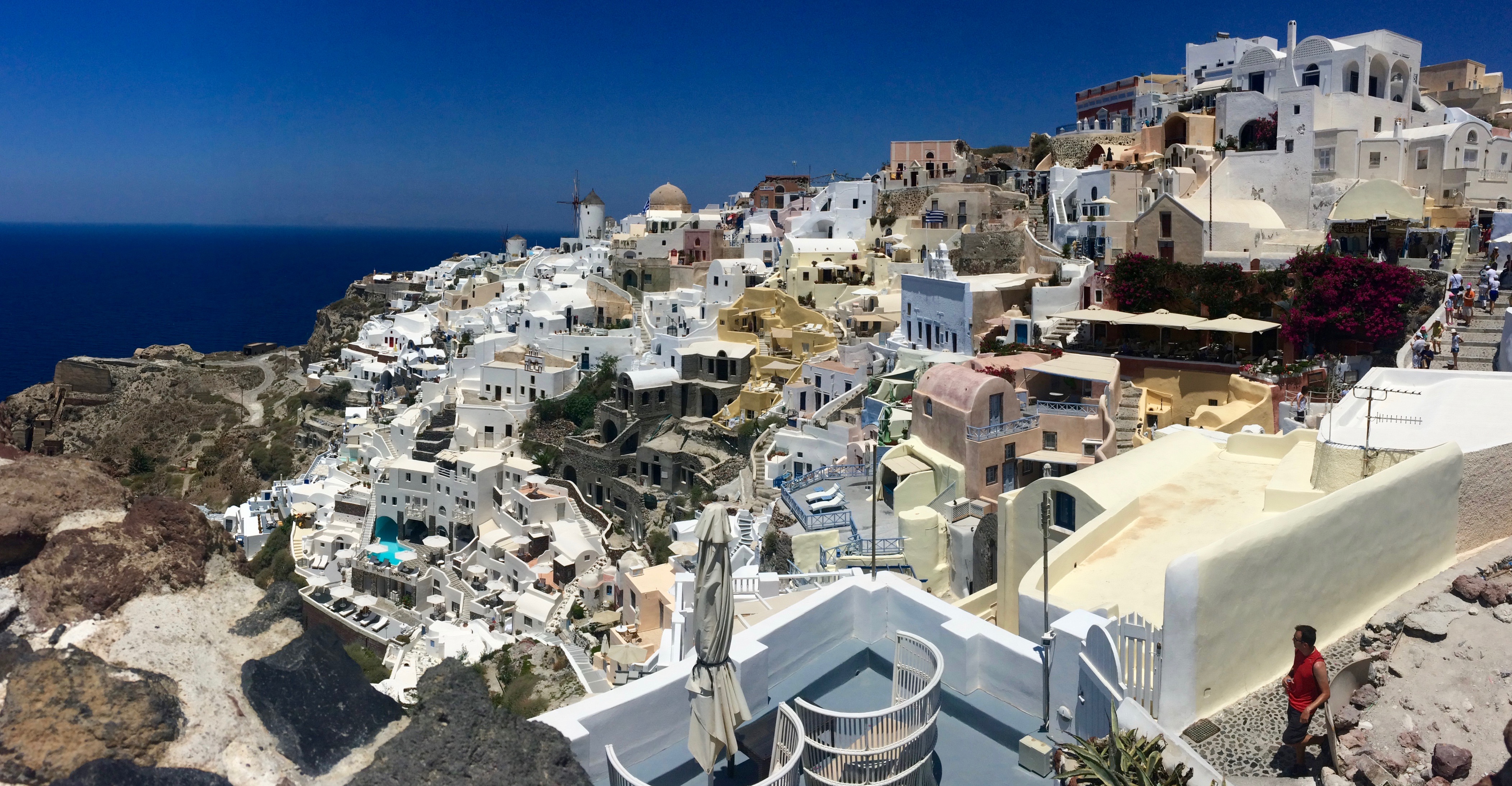
Oia’s famous trio of blue domes, which were difficult to find and surprisingly not absurdly full of tourists: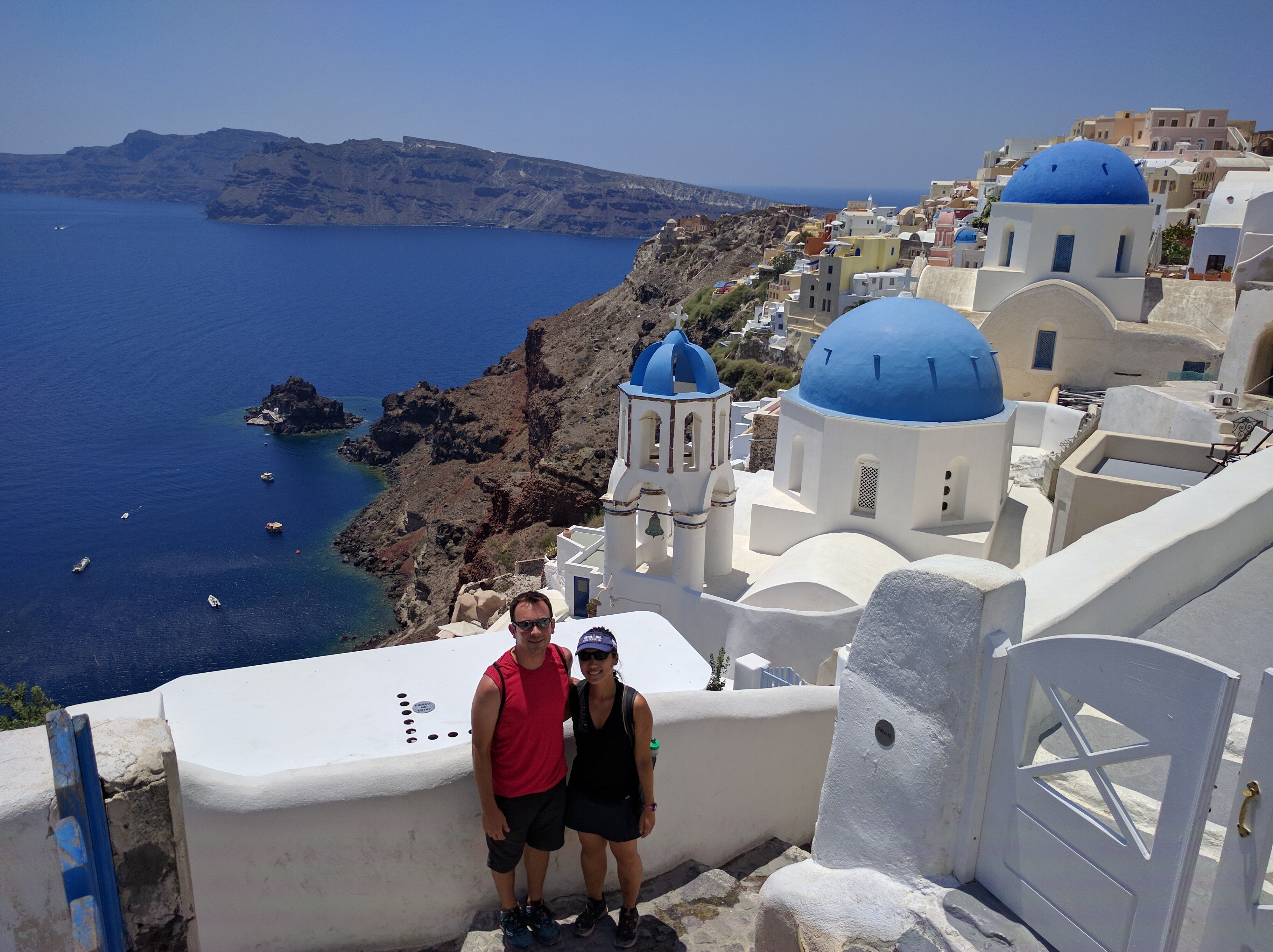
Our 3-hour “hike” from Fira to Oia, which consisted of cobblestone walkways, sidewalk, paved road, and a bit of loose lava rock and scree, granted us countless incredible views of the caldera and the small villages between Fira and Oia. We timed our hike so that we would arrive in Oia just before sunset.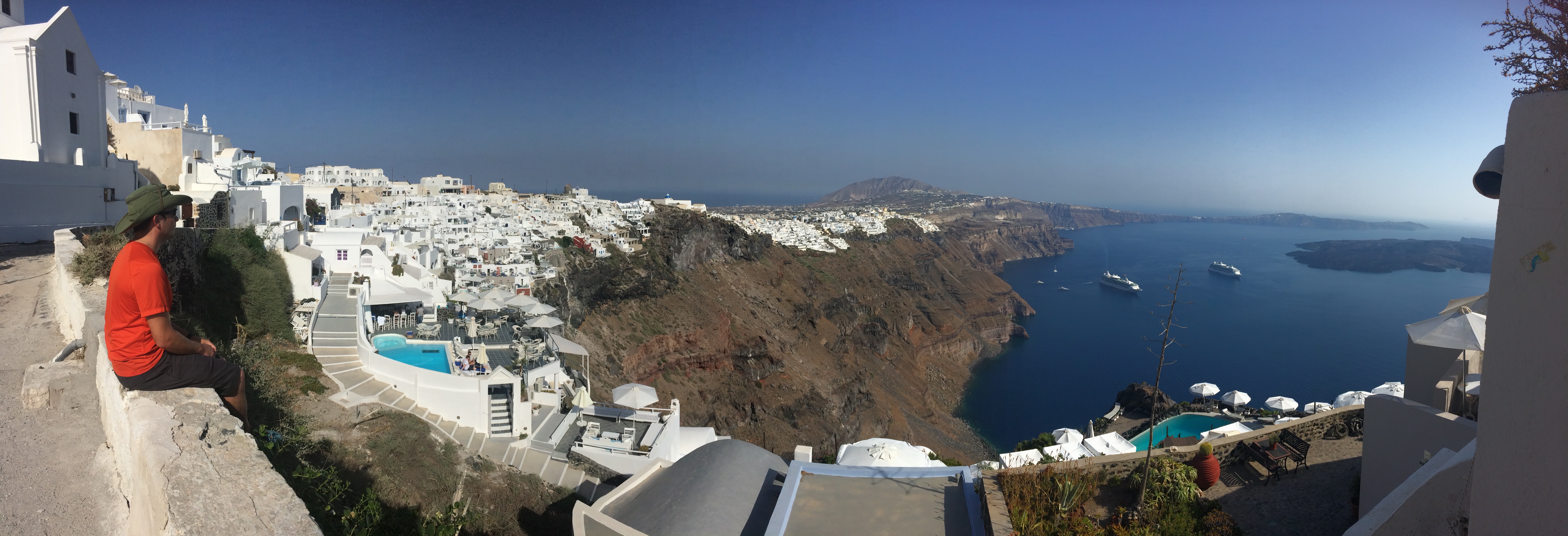
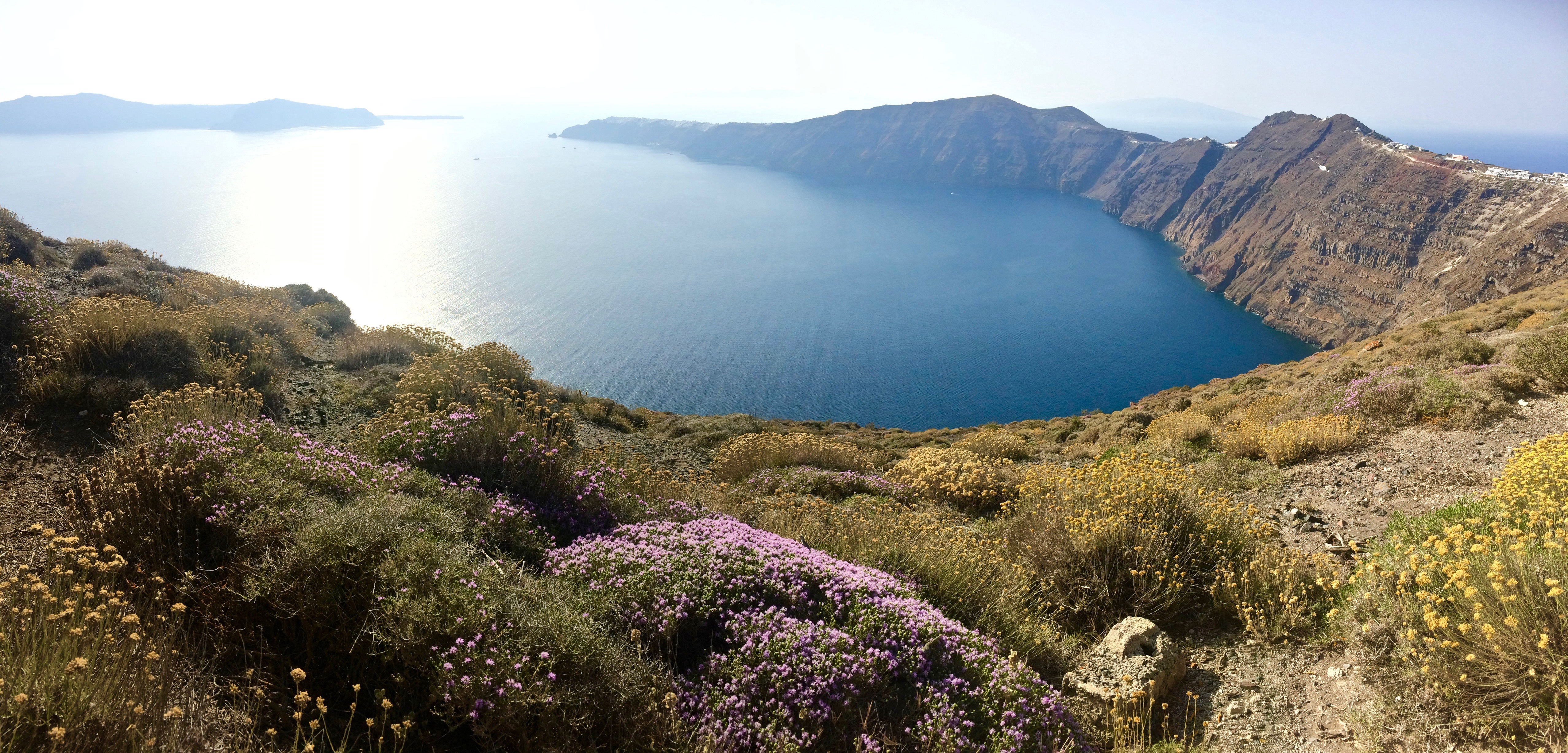
And finally, sunset photos! If there is one thing that everyone on the island is doing in unison, it’s watching sunset over the caldera, Fira, or Oia. Even a short walk away from the crowded streets of Fira granted us a sunset in peace and tranquility. We watched one sunset from Firostefani with no one else in sight.
The most popular and crowded sunset was from the castle ruins in Oia. We arrived an hour before sunset per others’ recommendation, and even then, it was quite difficult to find a seat. Despite all the noise and rancor, the views were well worth it. We even saw cruise ships disappear dreamily into the reflection of the sun.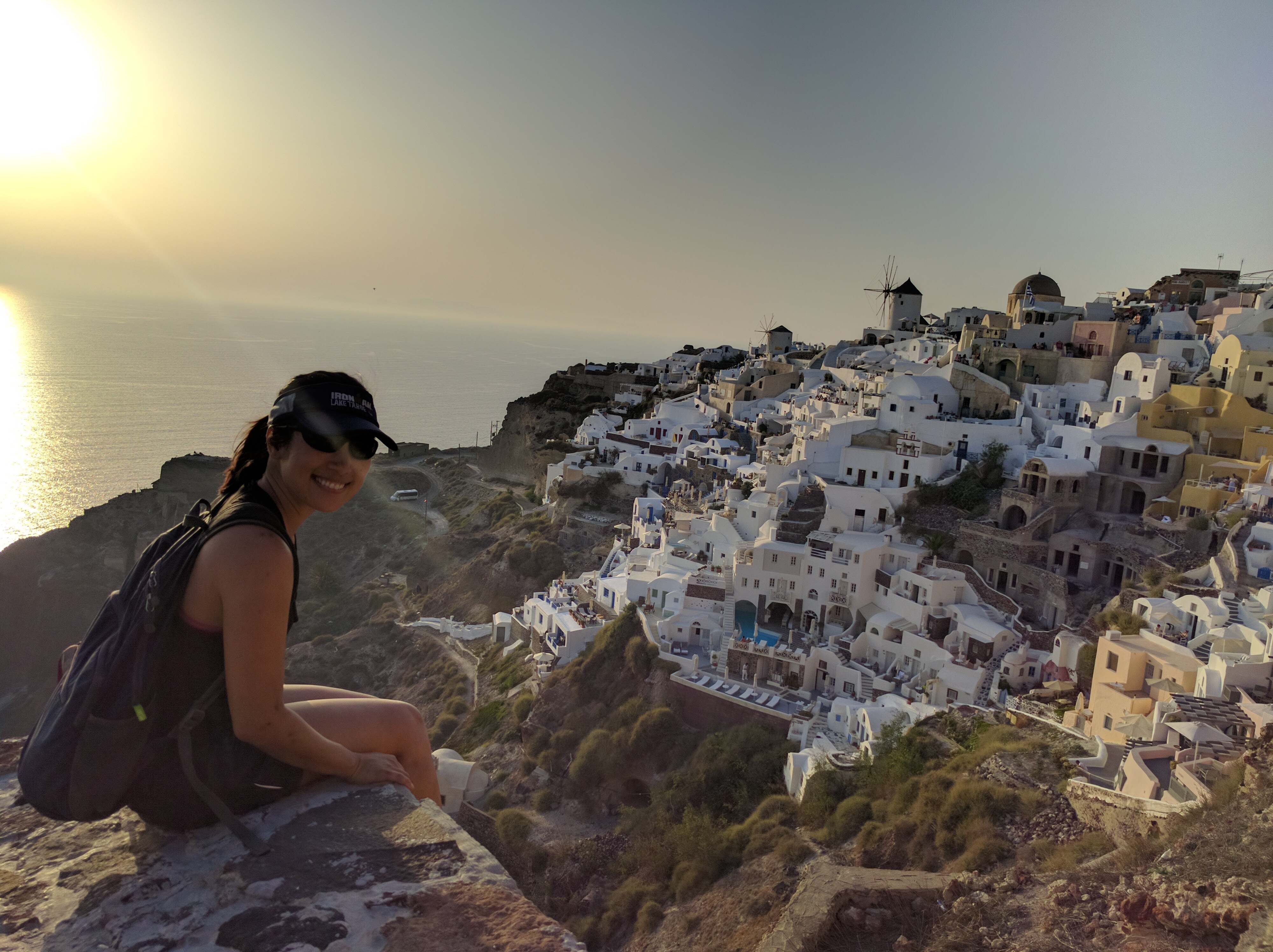
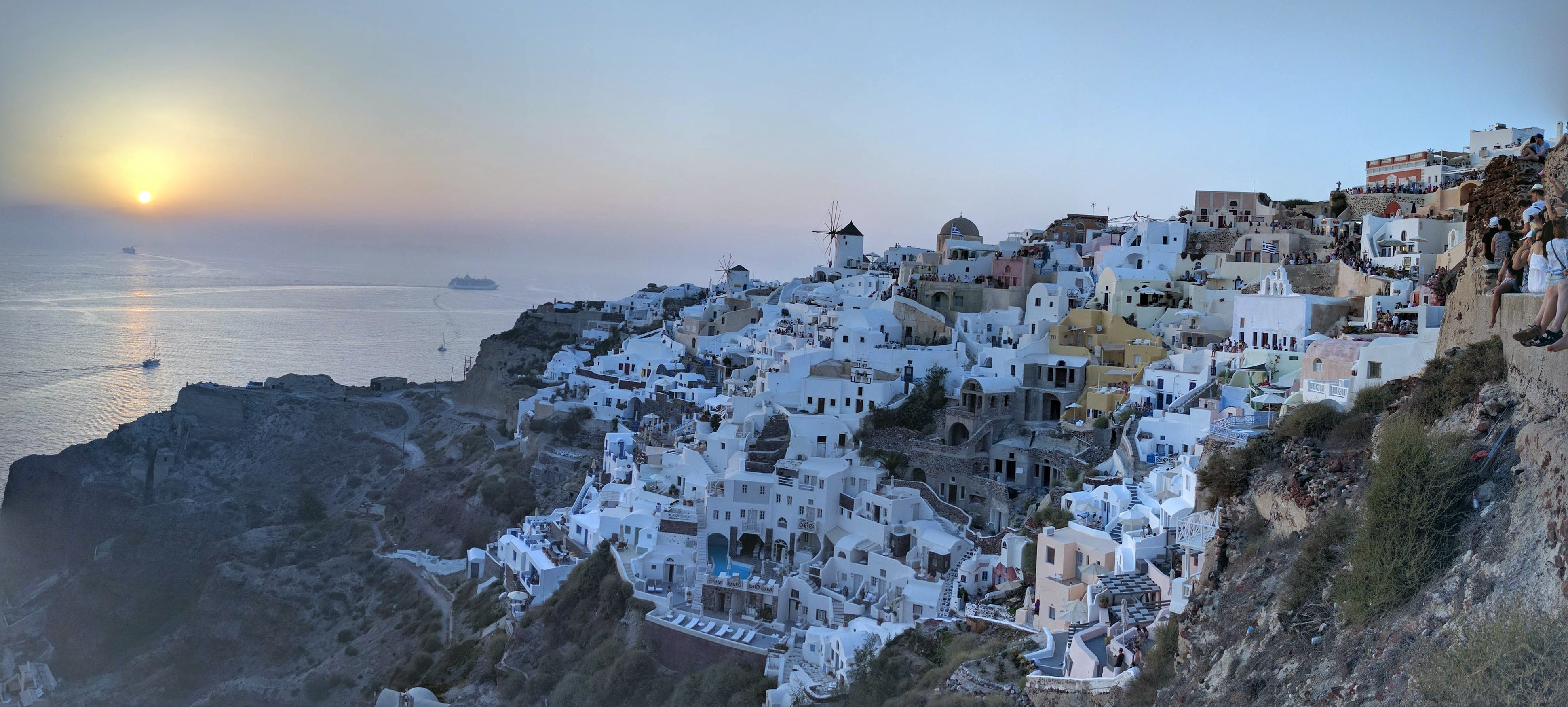
You don’t have to believe me, but I will say it: Santorini is UNIQUE and AMAZING. We’ve been to other incredible islands such as the Galapagos and Easter Island, but none of those islands or any other island we know of consist of terraced towns cascading down from the rim of a caldera. On an island, people typically spend their time near the beach and watch sunset from the beach. On the island of Santorini, people spend most of their time on the upper rim of the caldera, gazing down at the sea-filled volcano. Santorini isn’t an island with a volcano on it; Santorini is the upper, exposed rim of an underwater volcano. It is a must-see in life. You’ve got to see it to believe it.
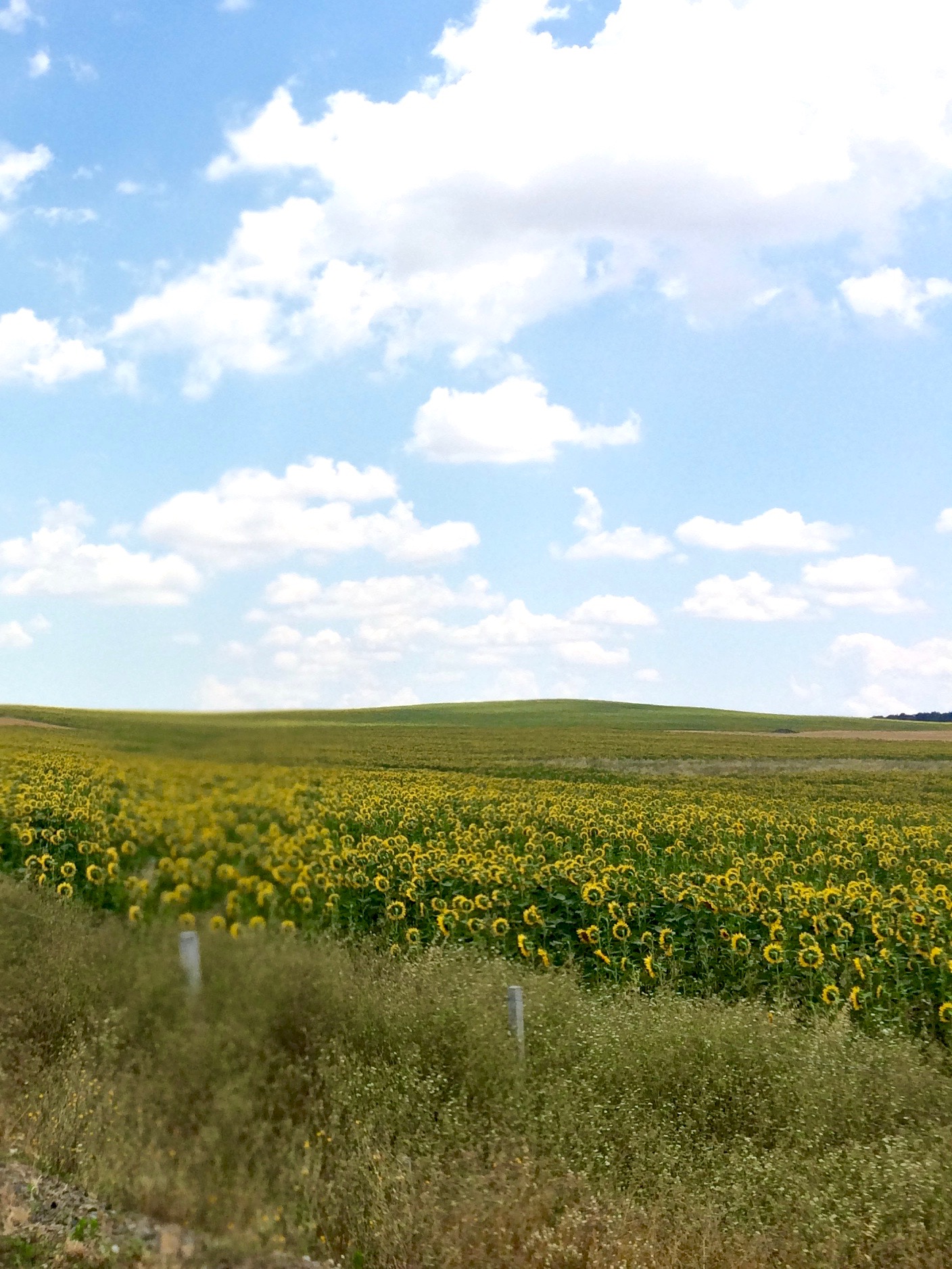

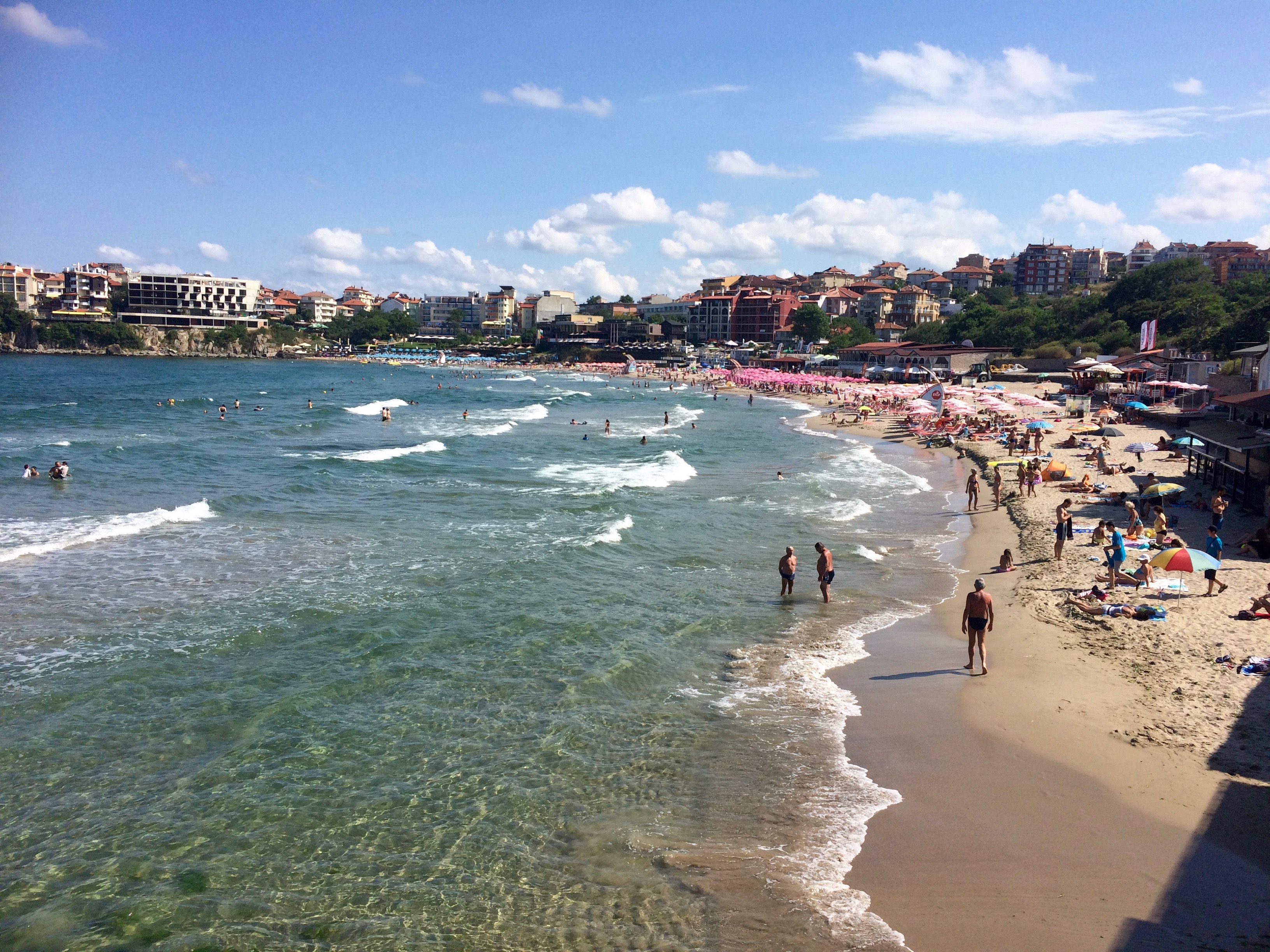

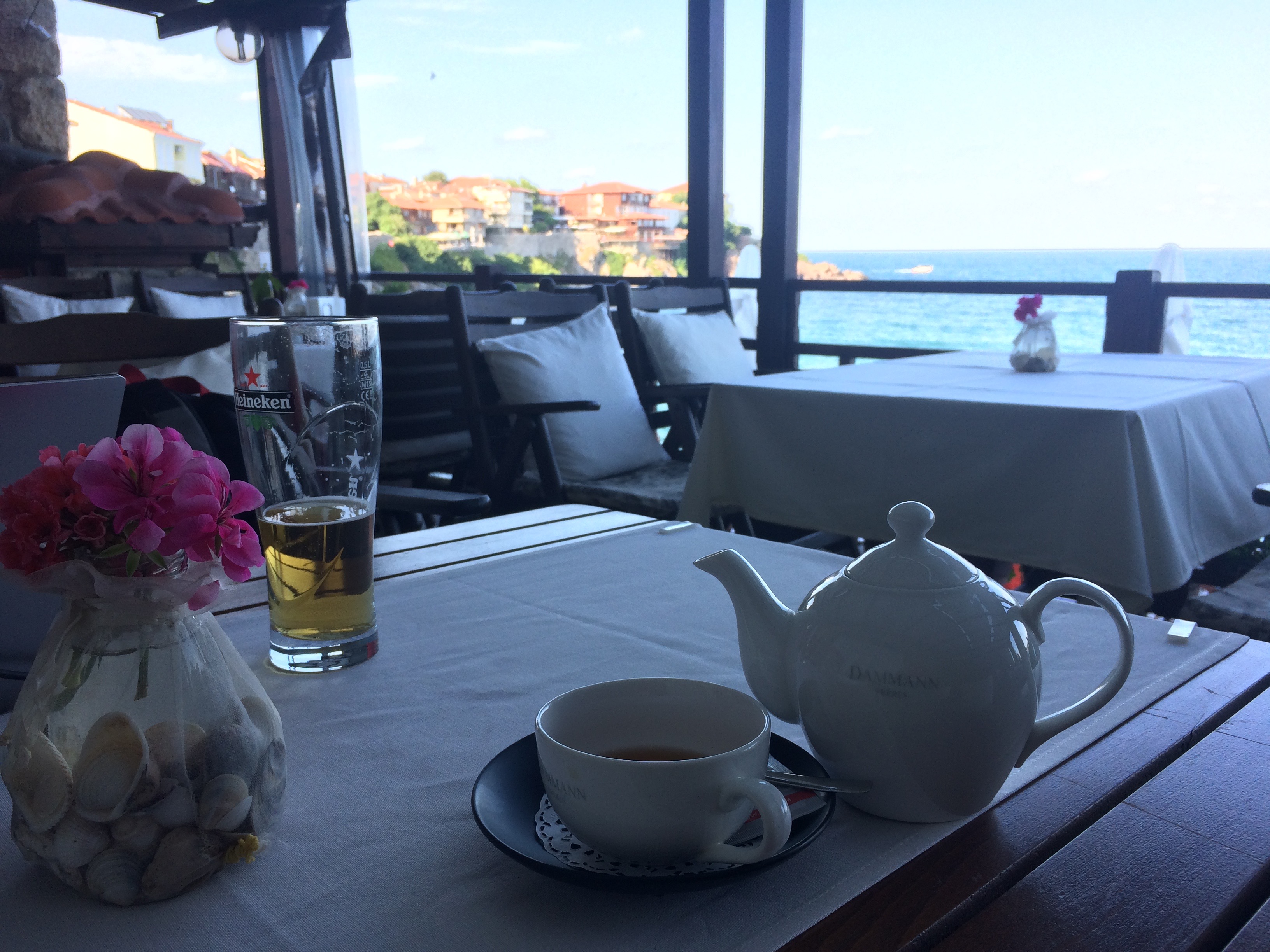
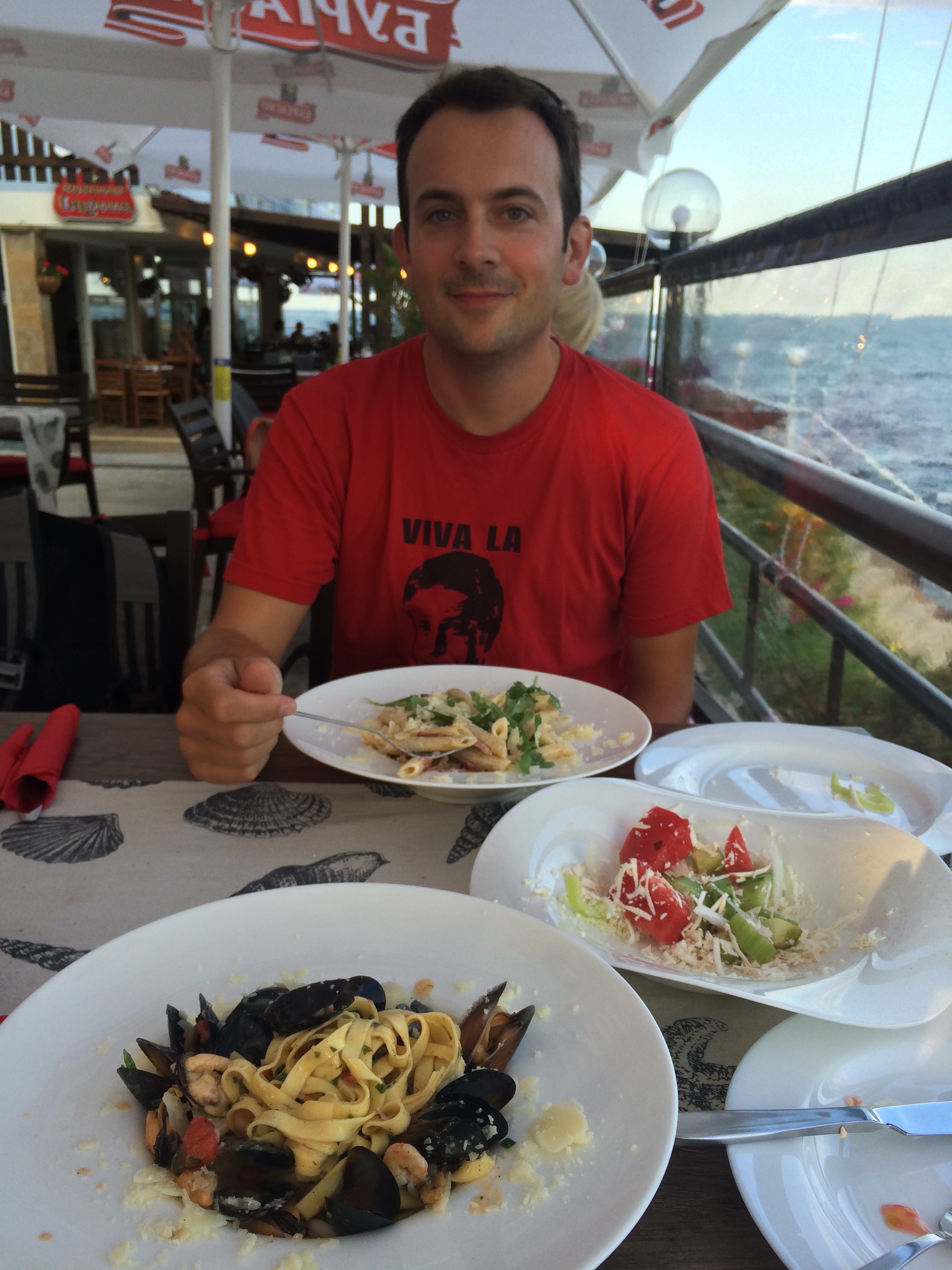
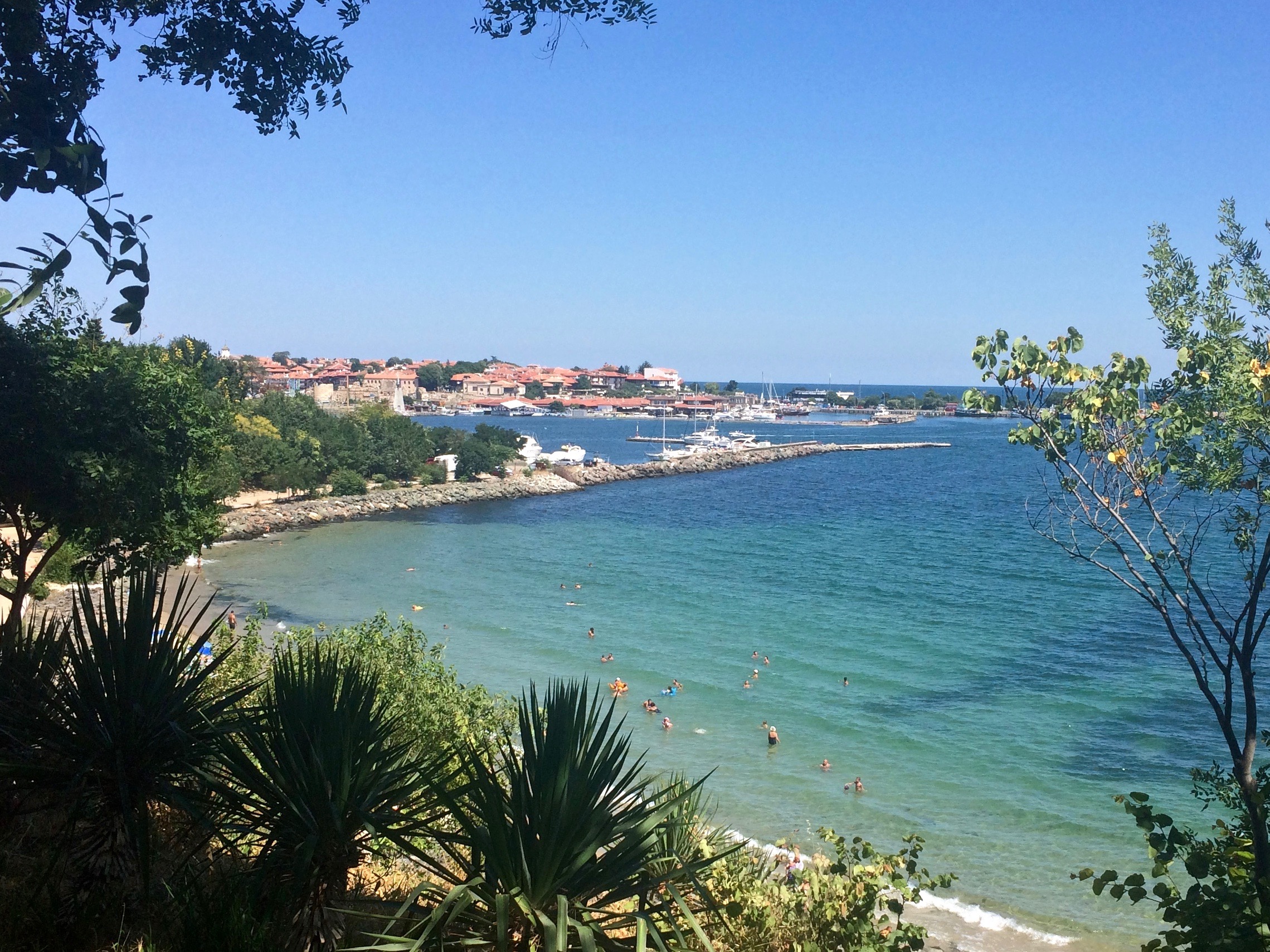
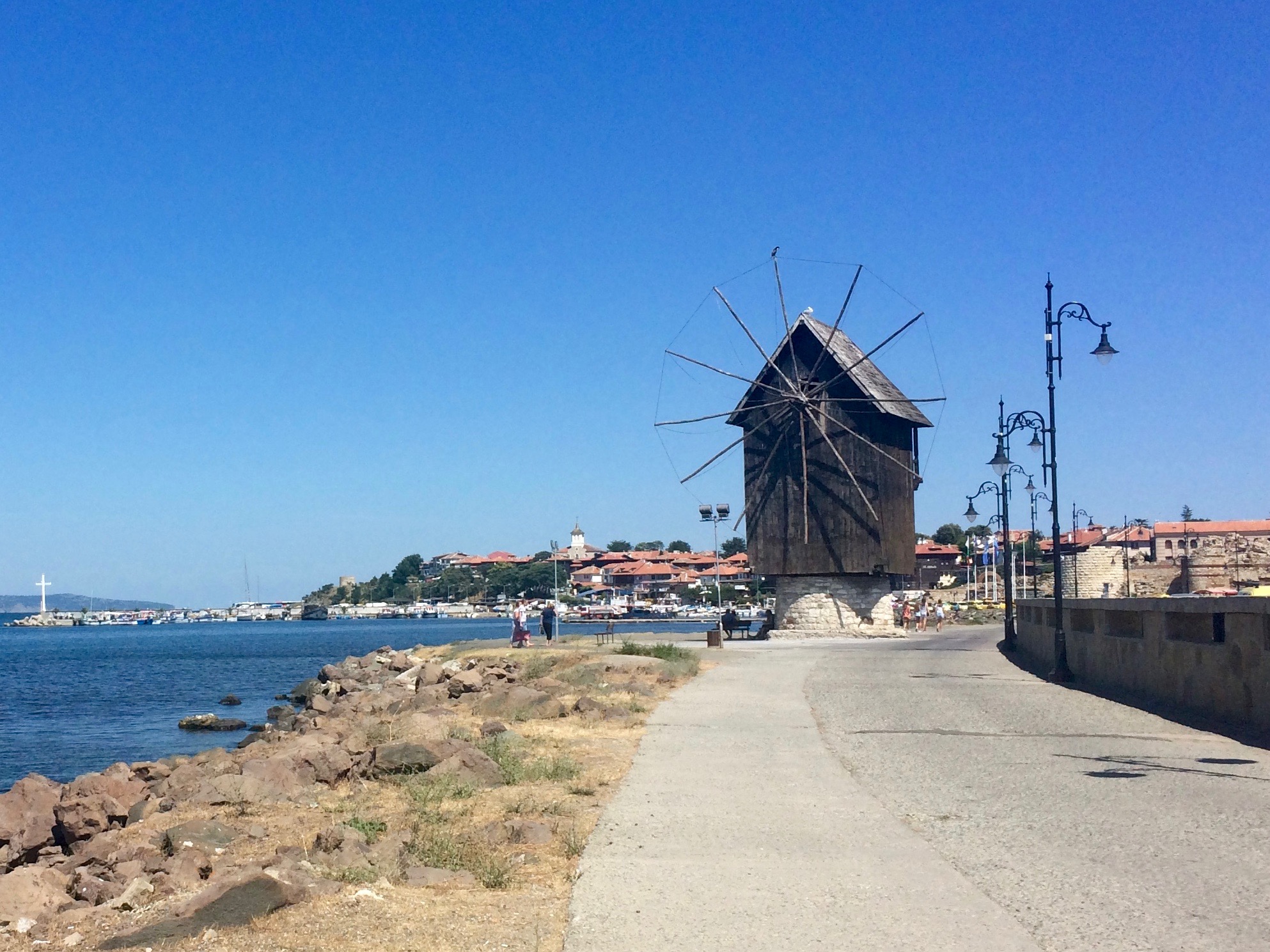

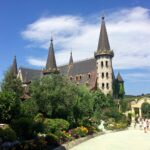
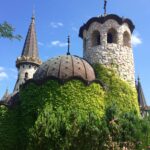
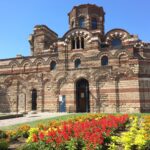
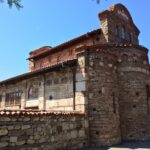
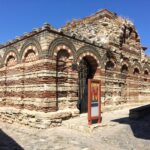
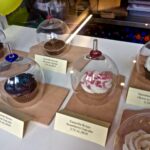

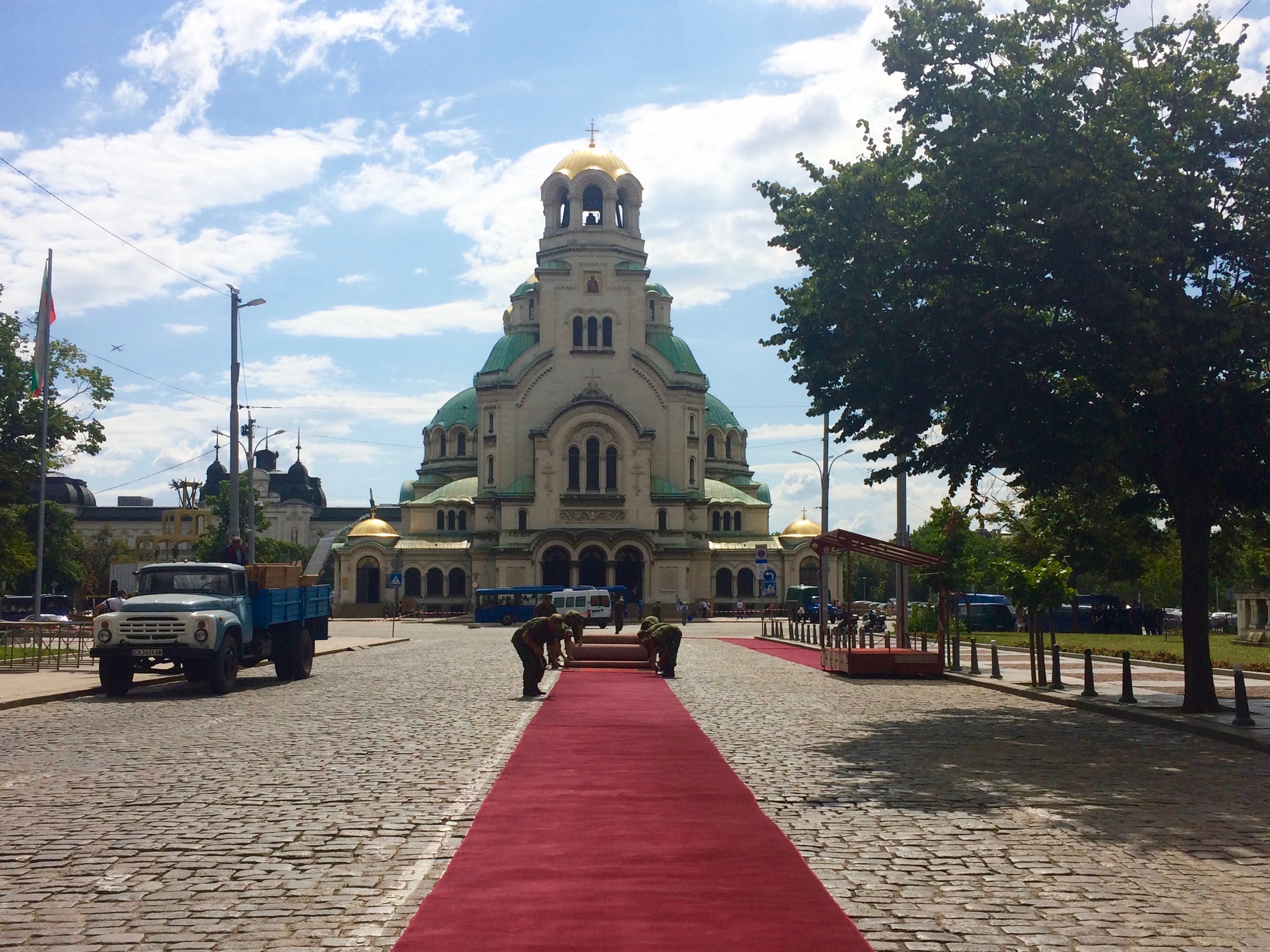
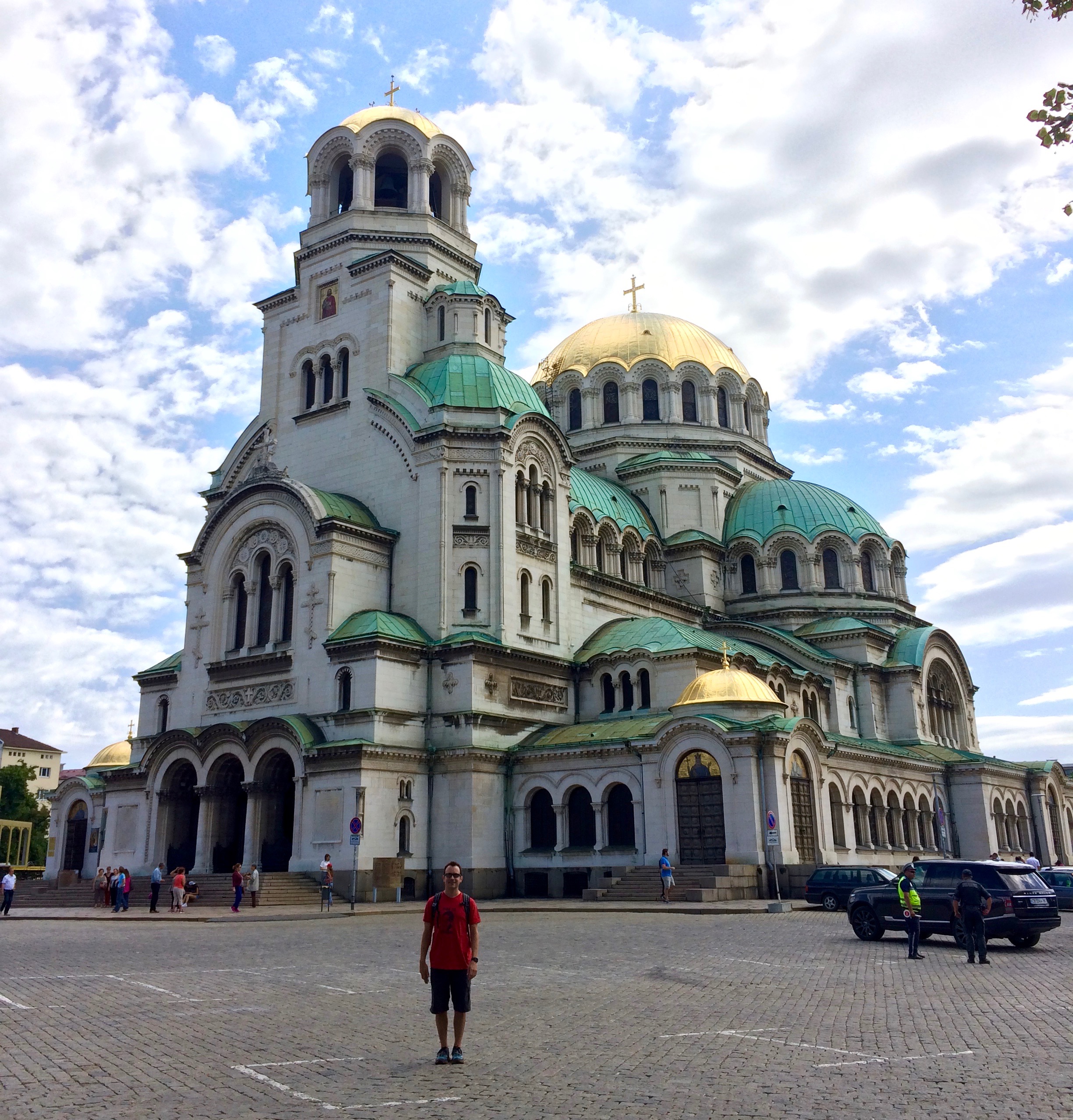
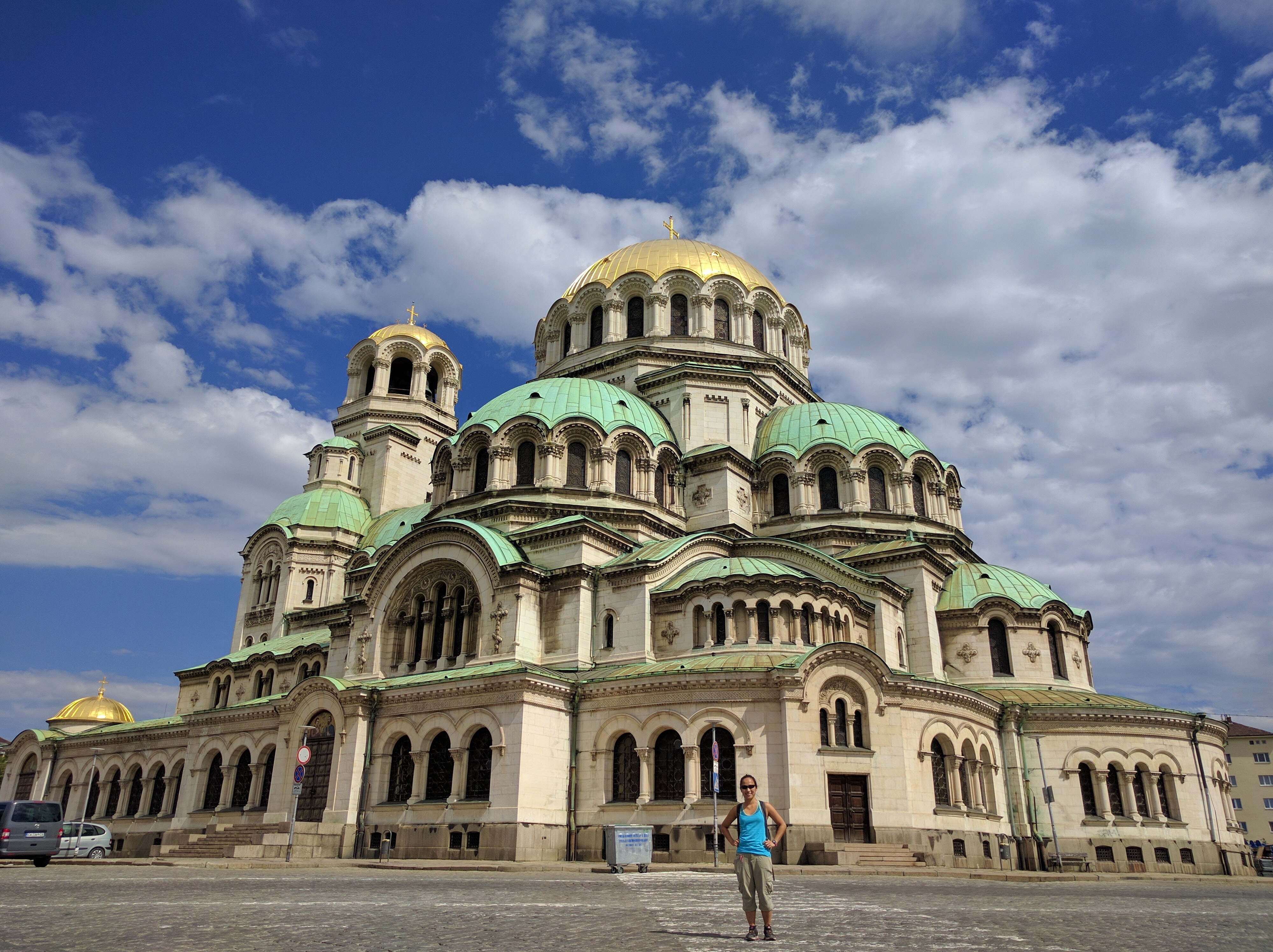
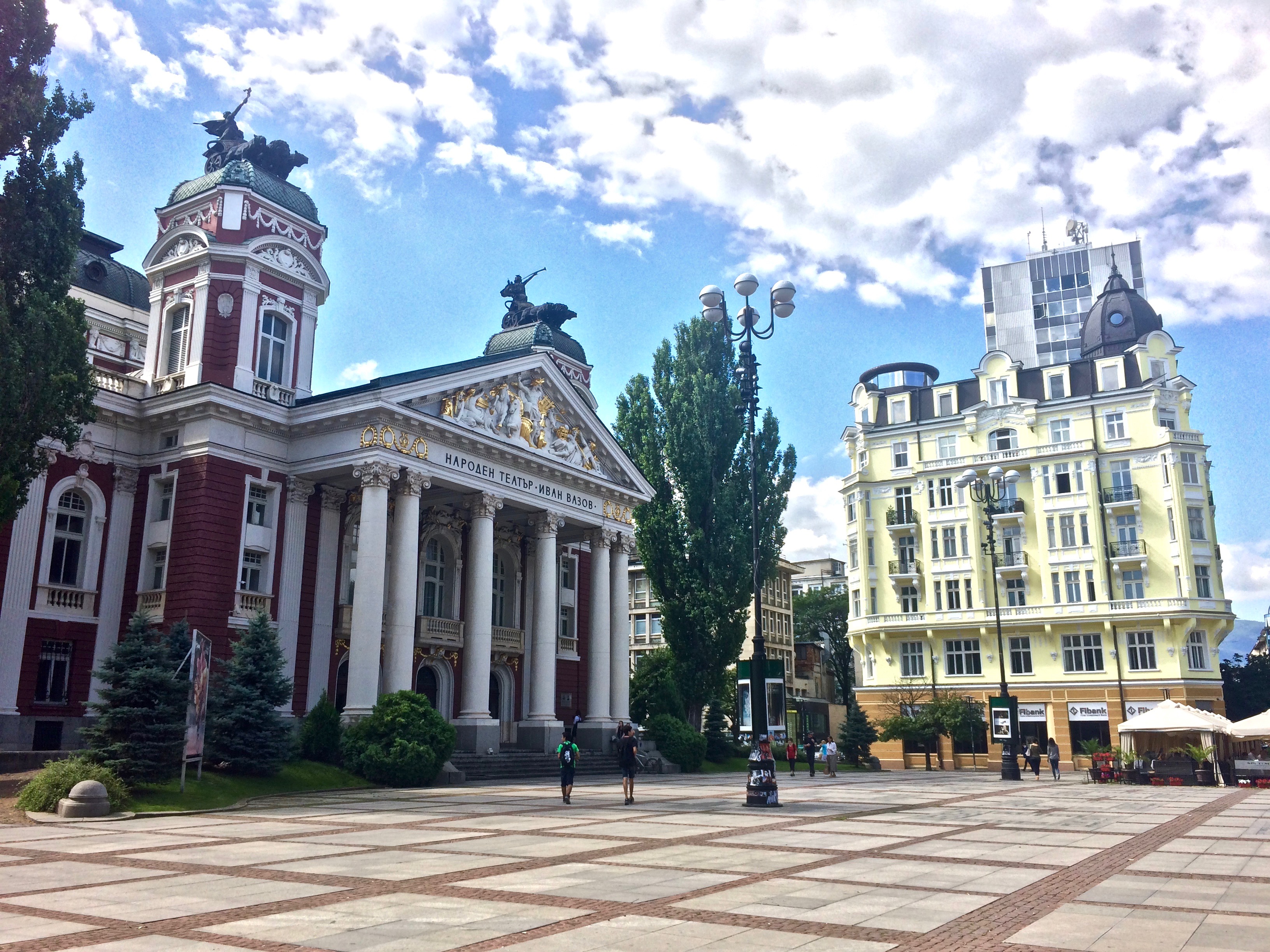
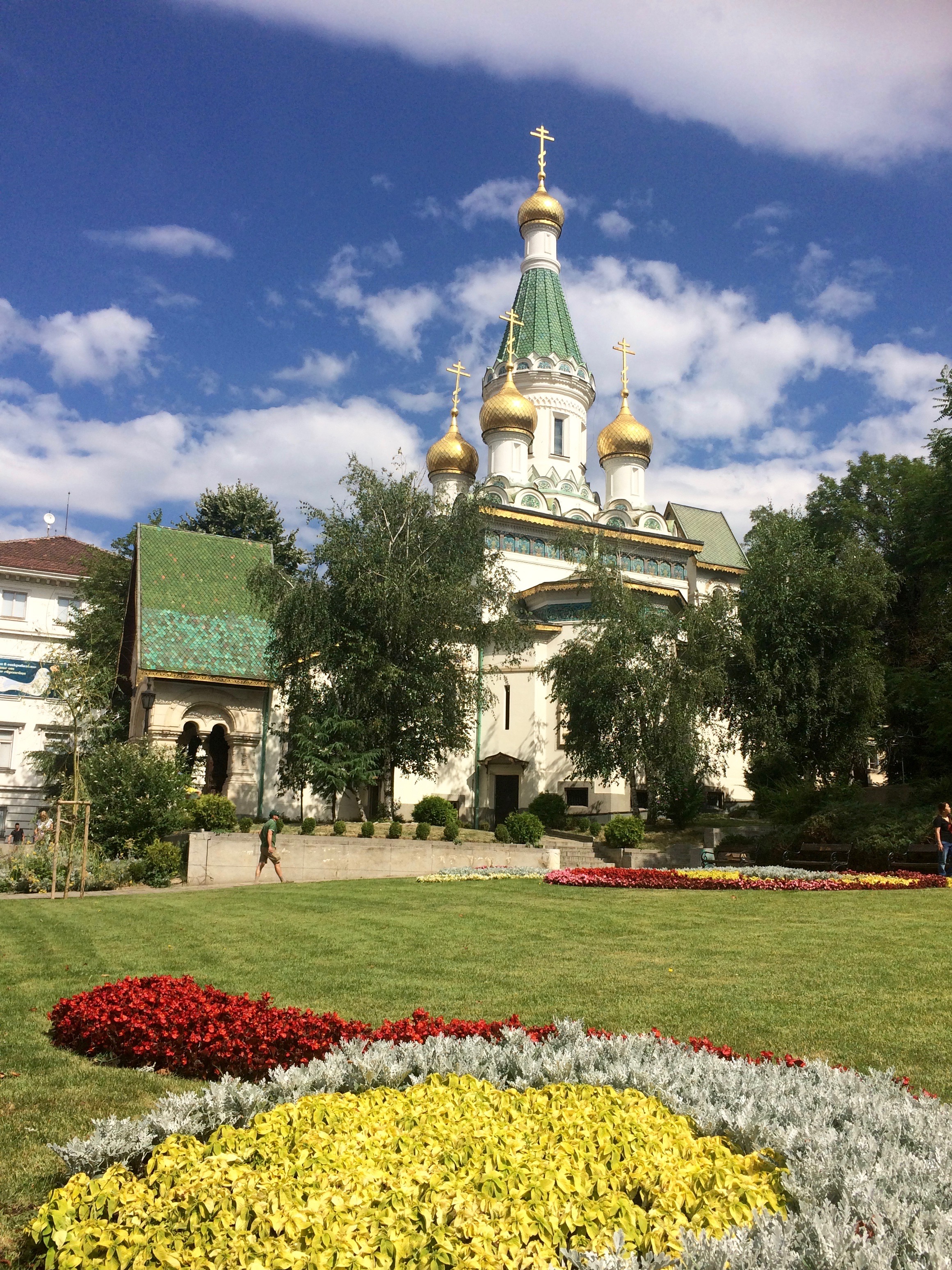
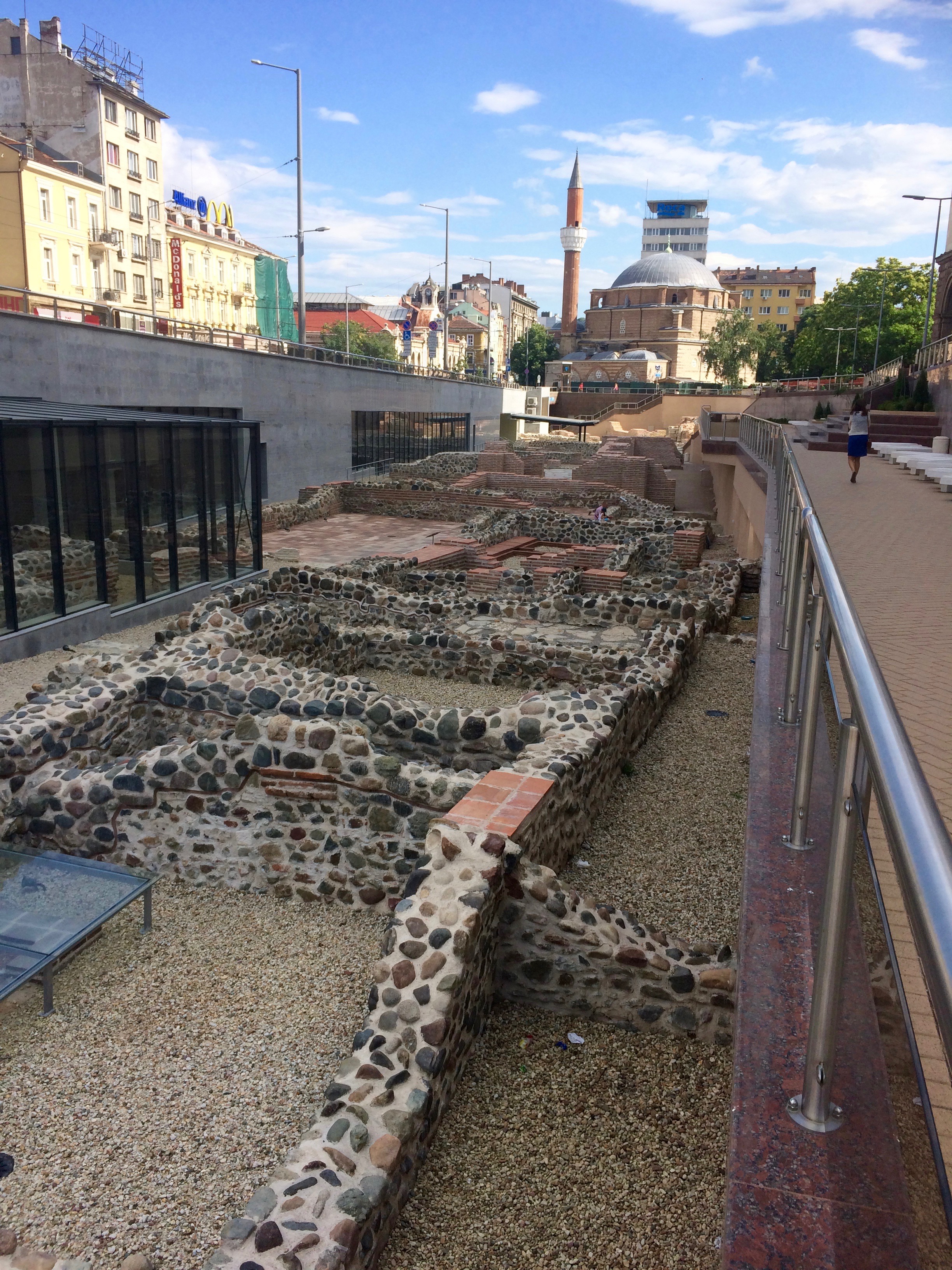
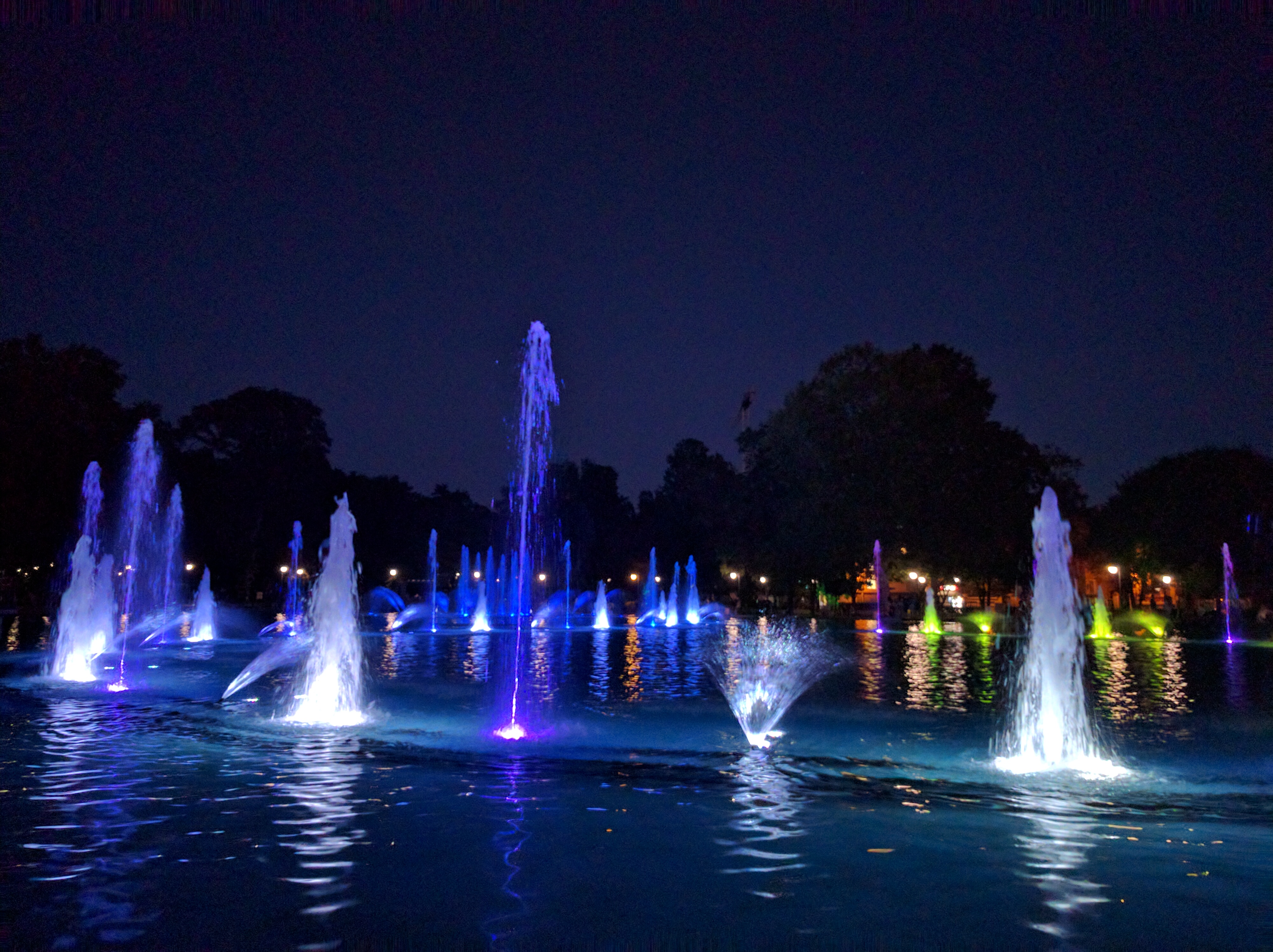
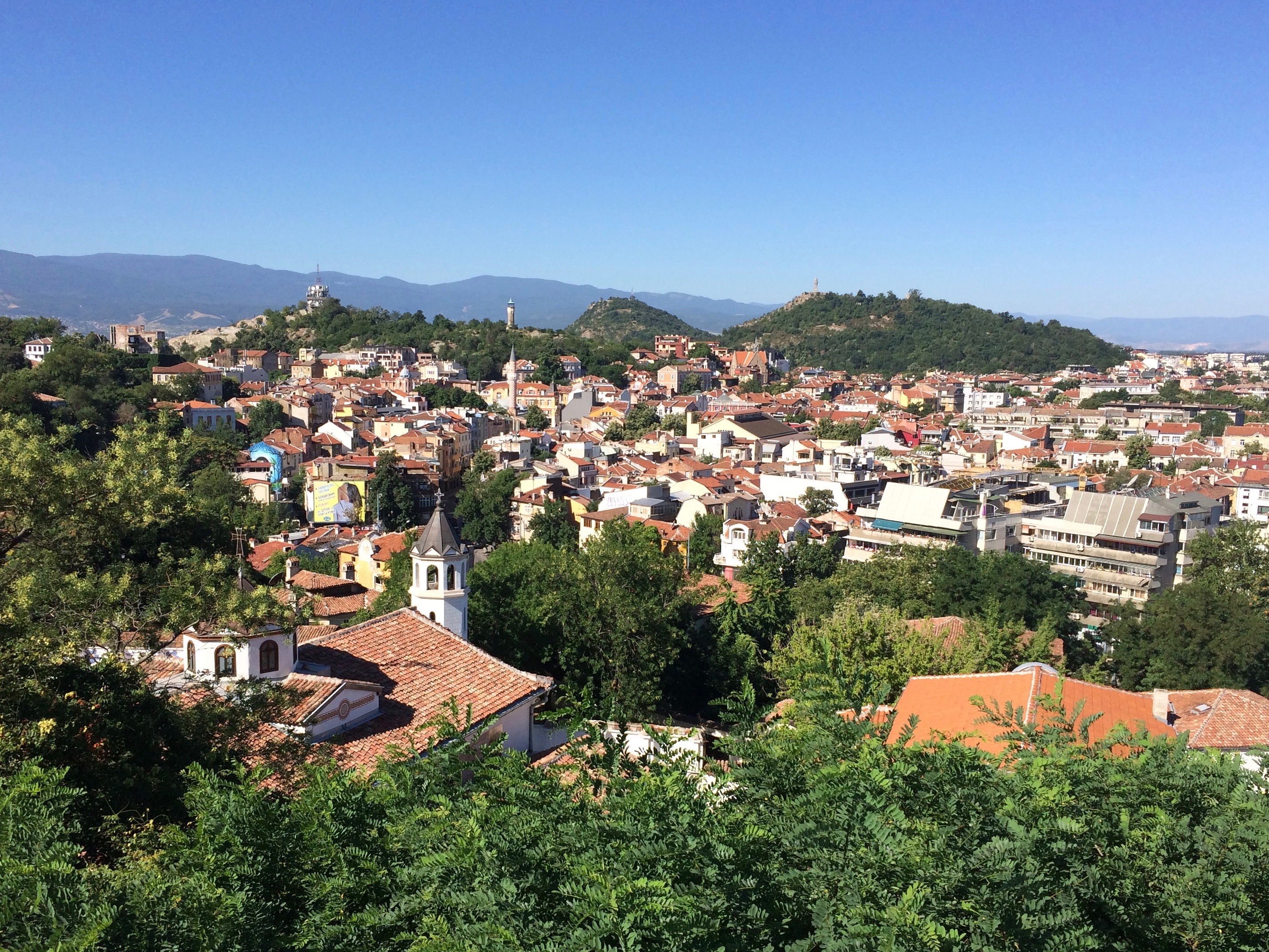
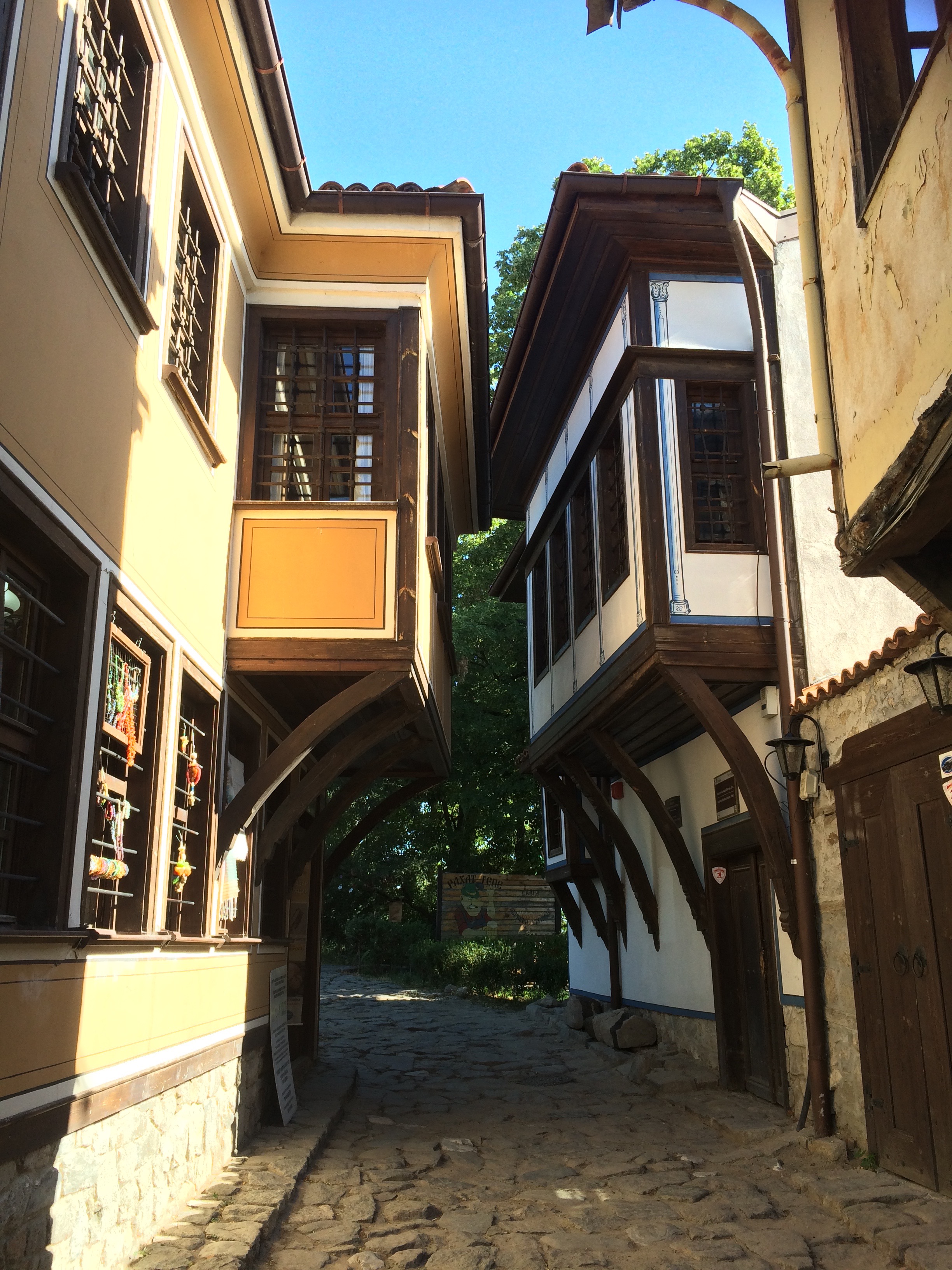
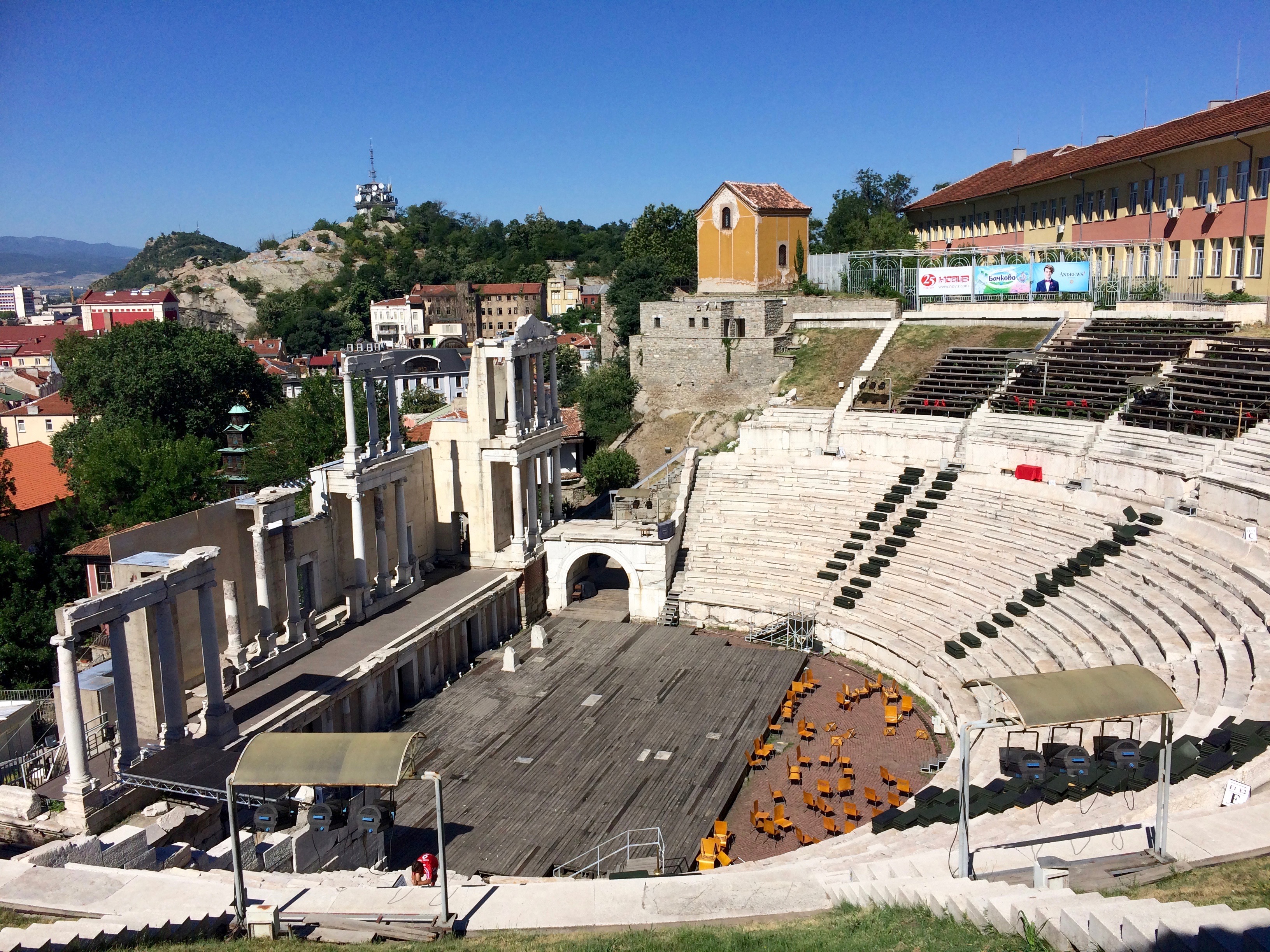
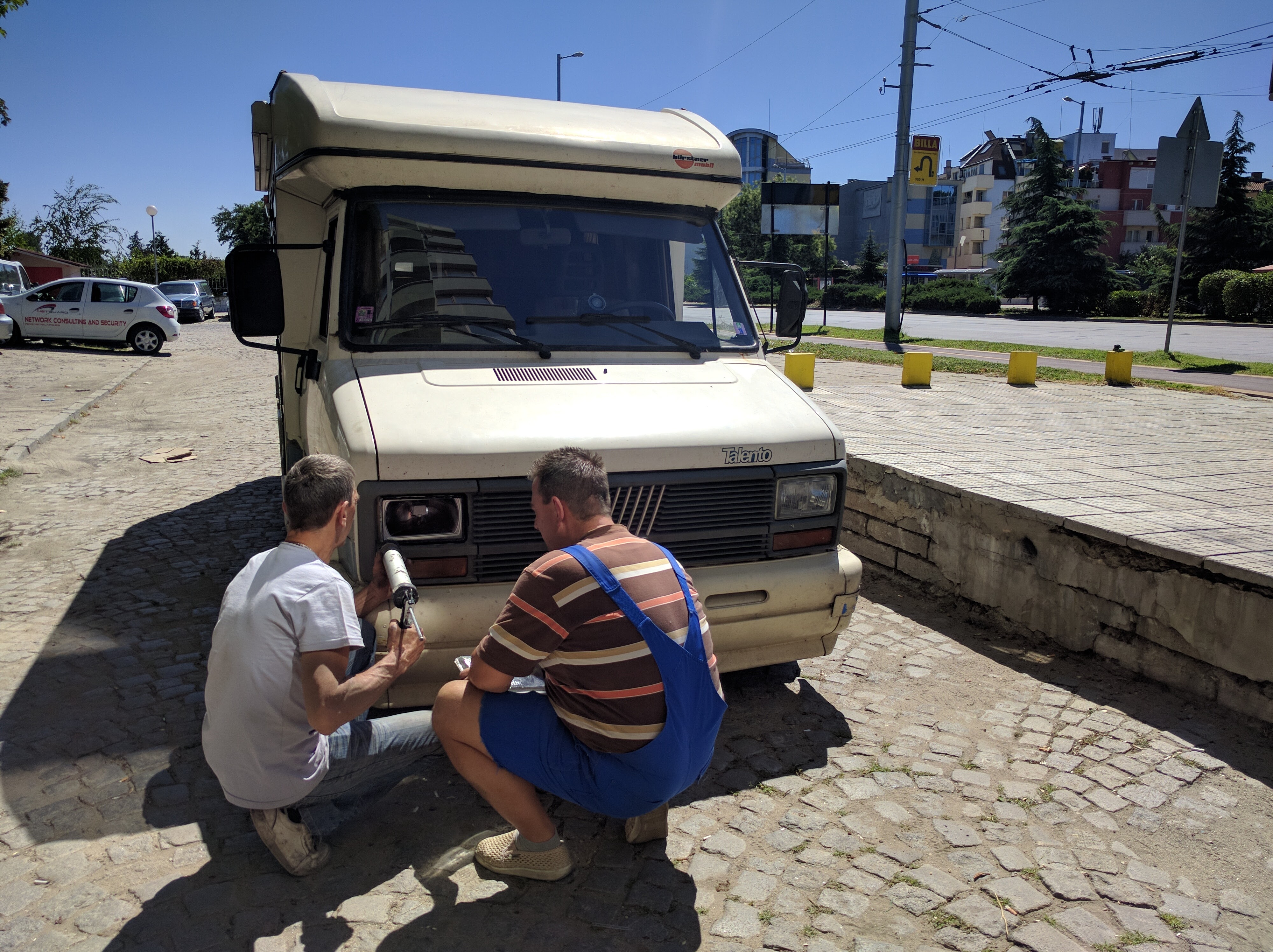

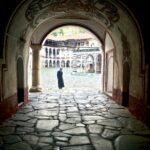
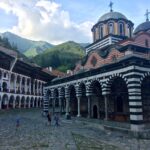
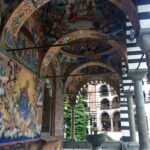

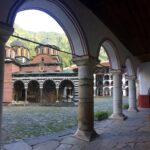
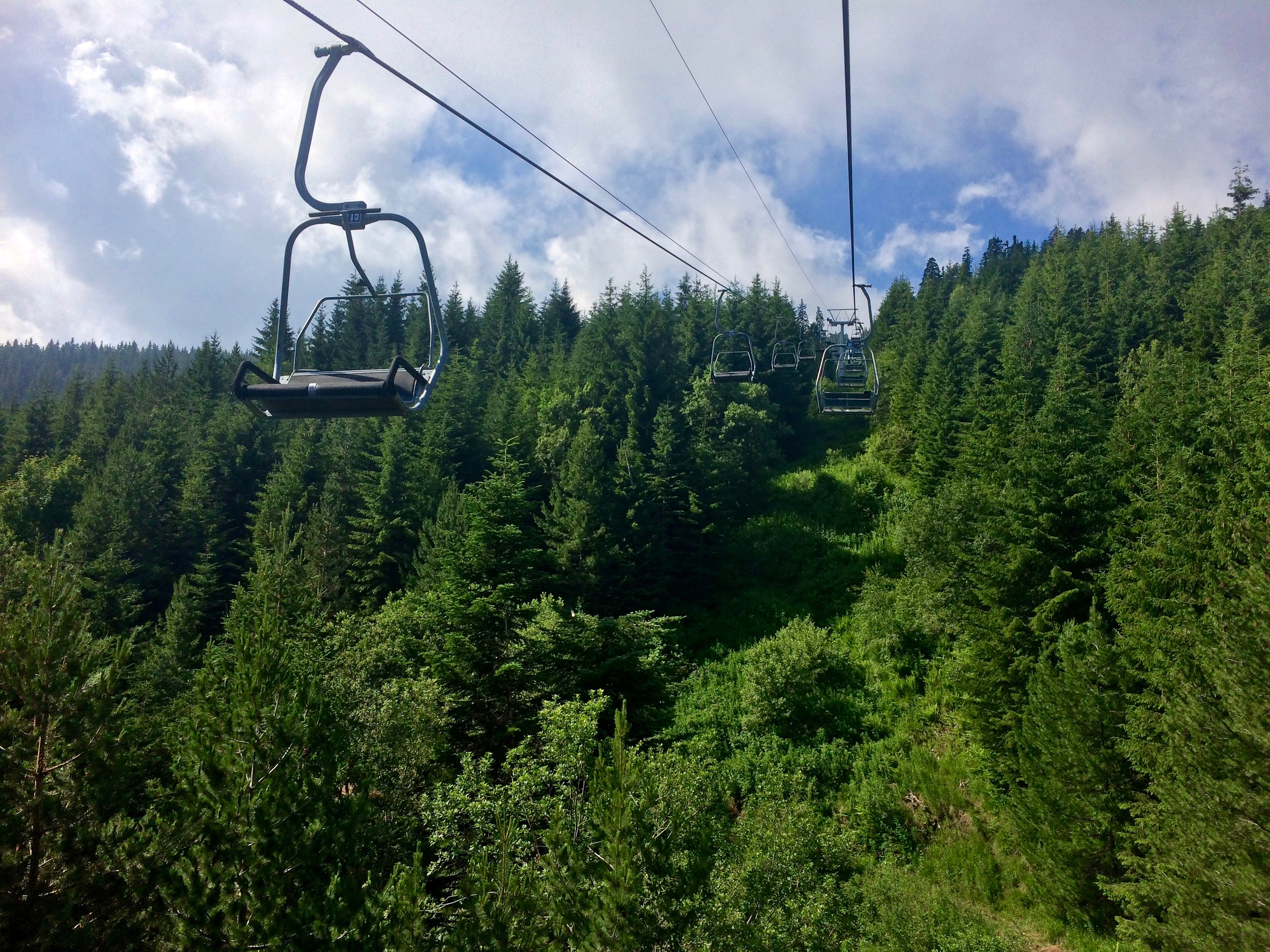
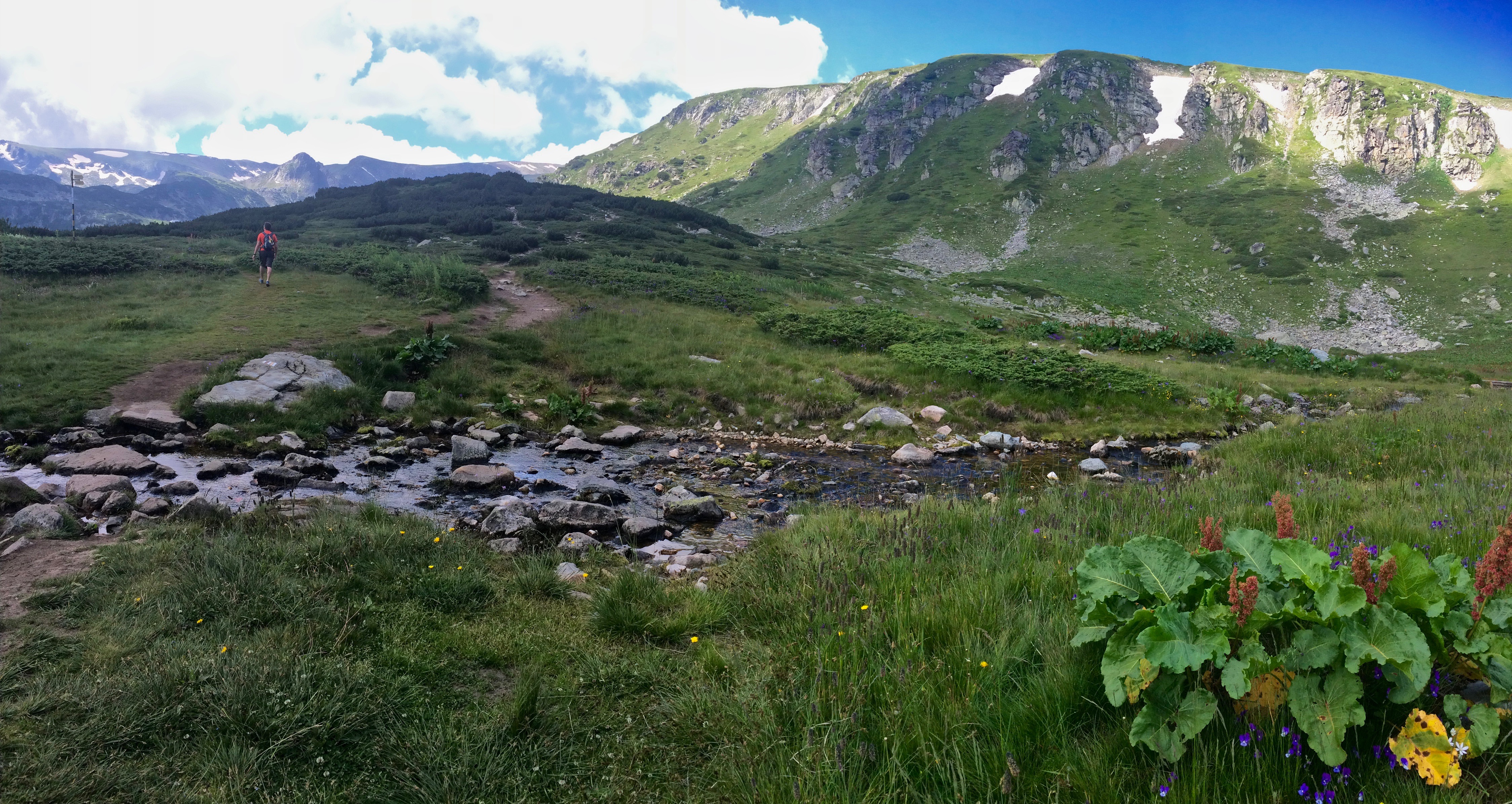
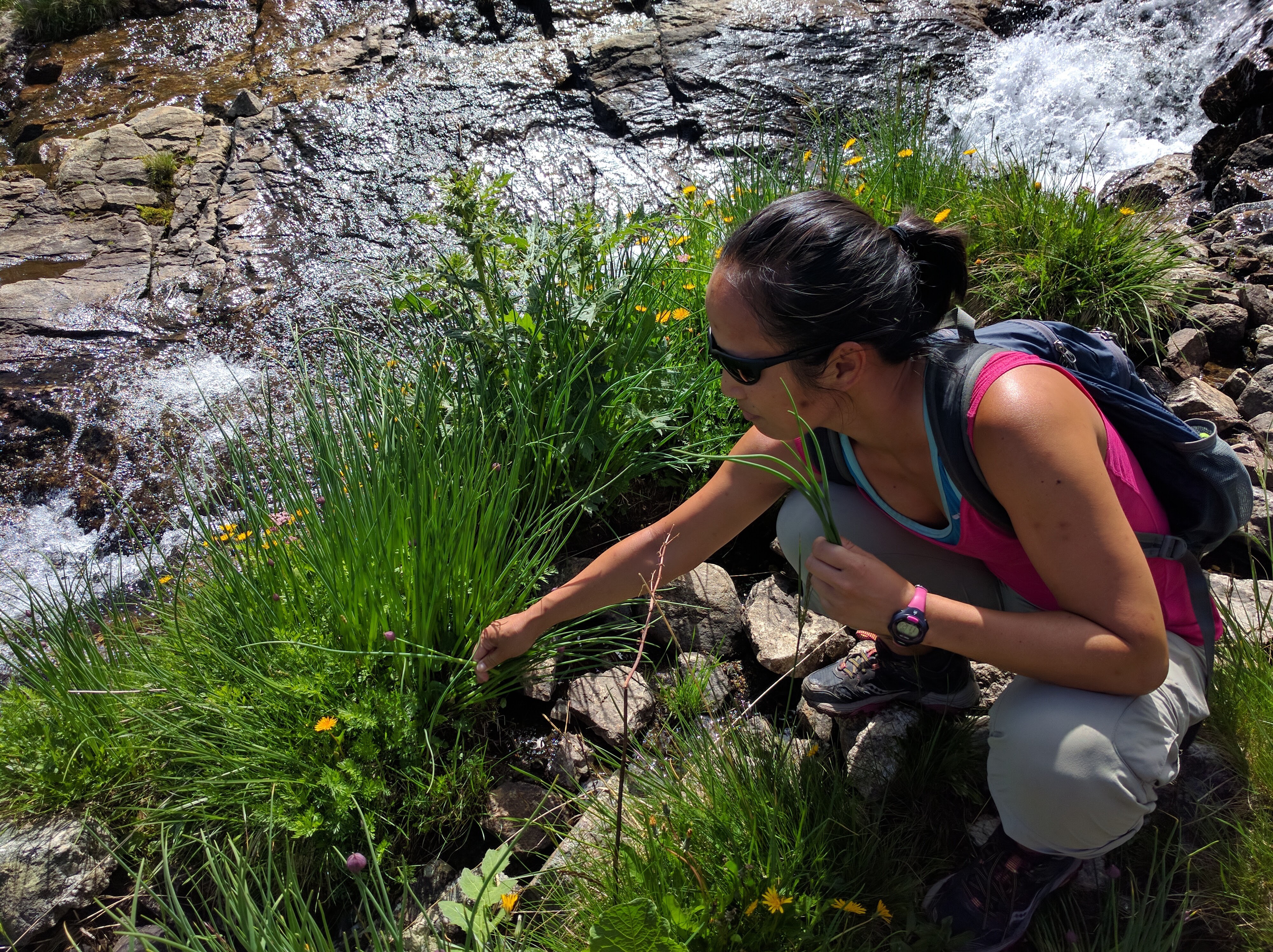
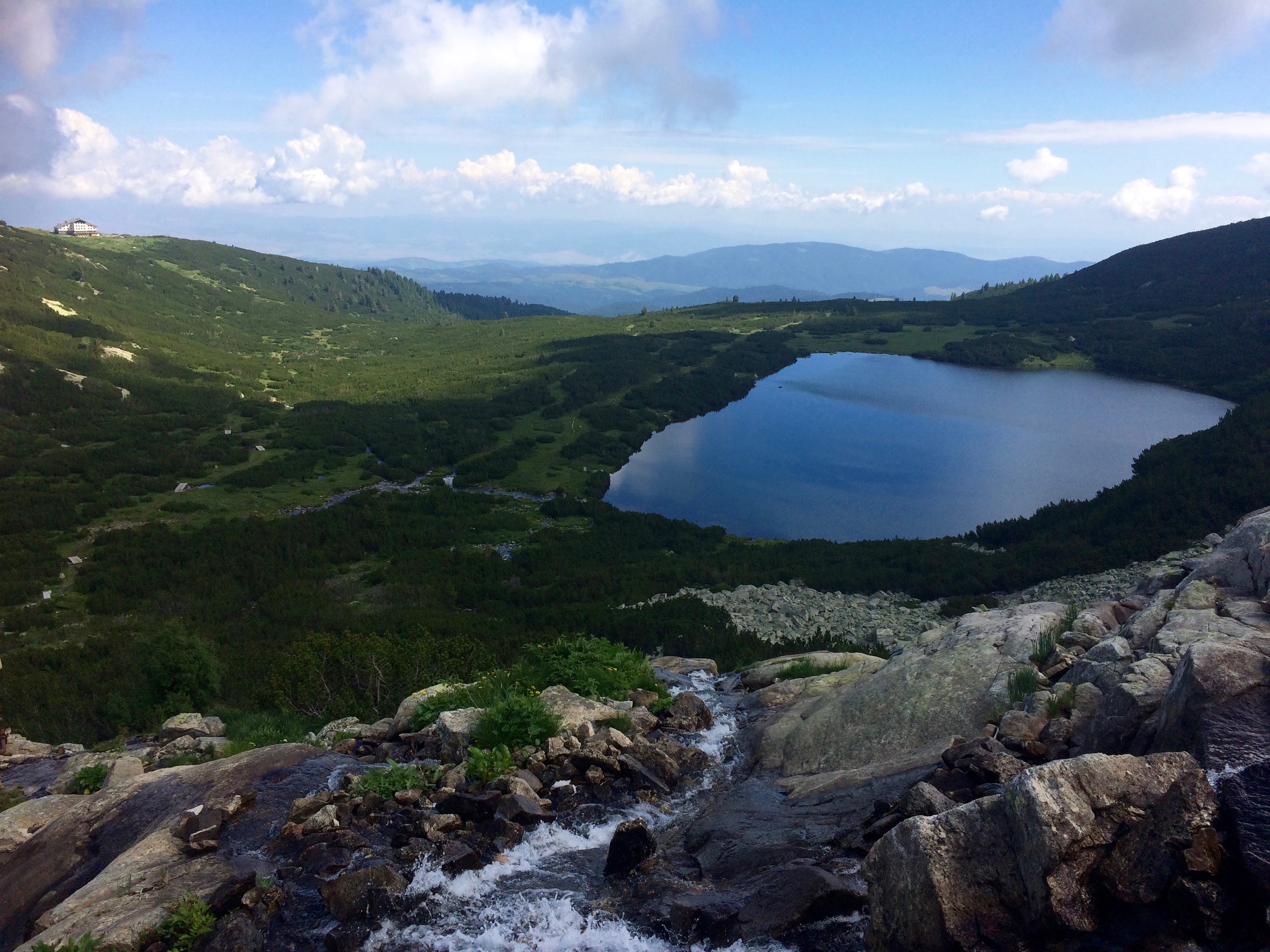

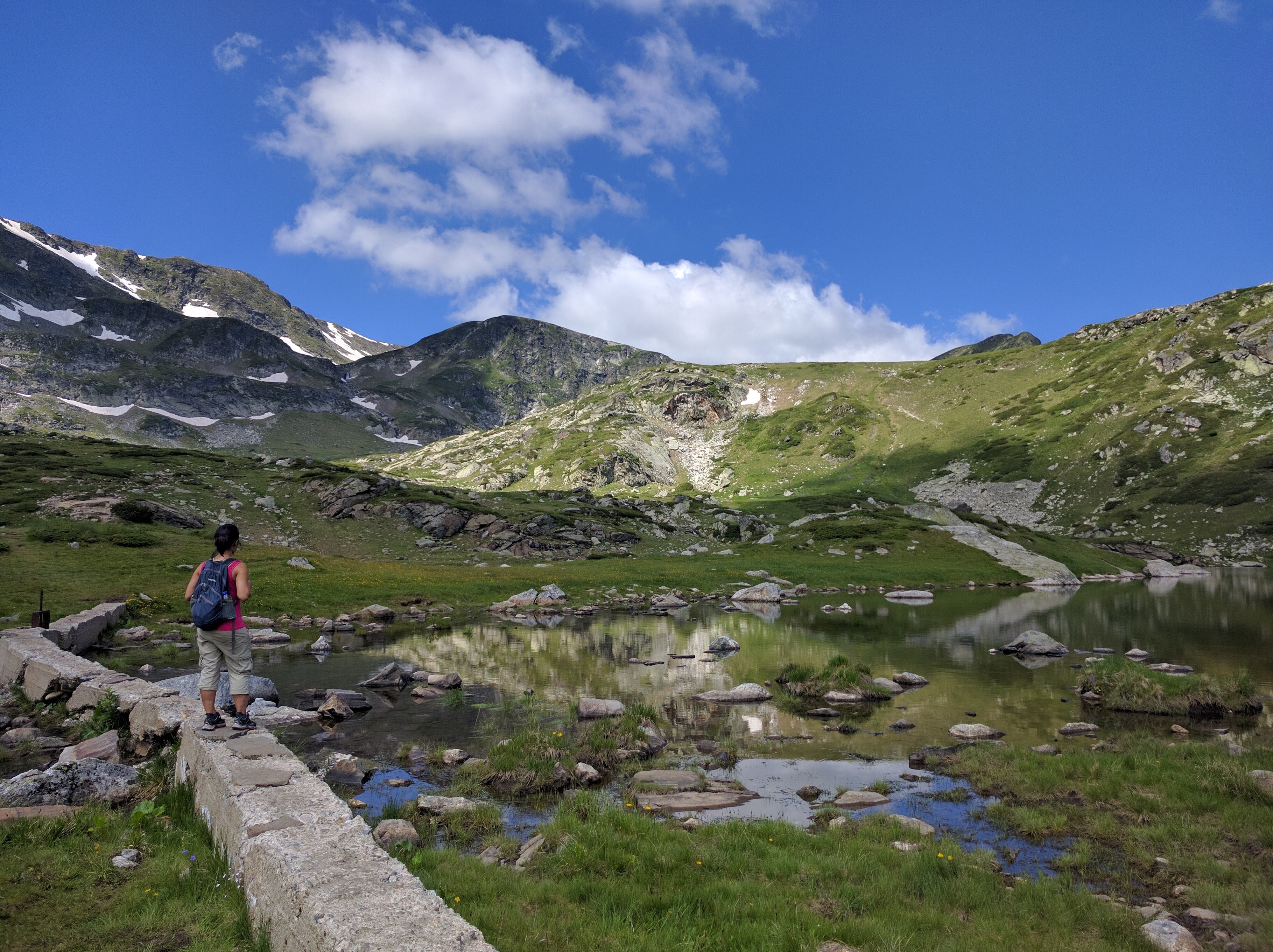




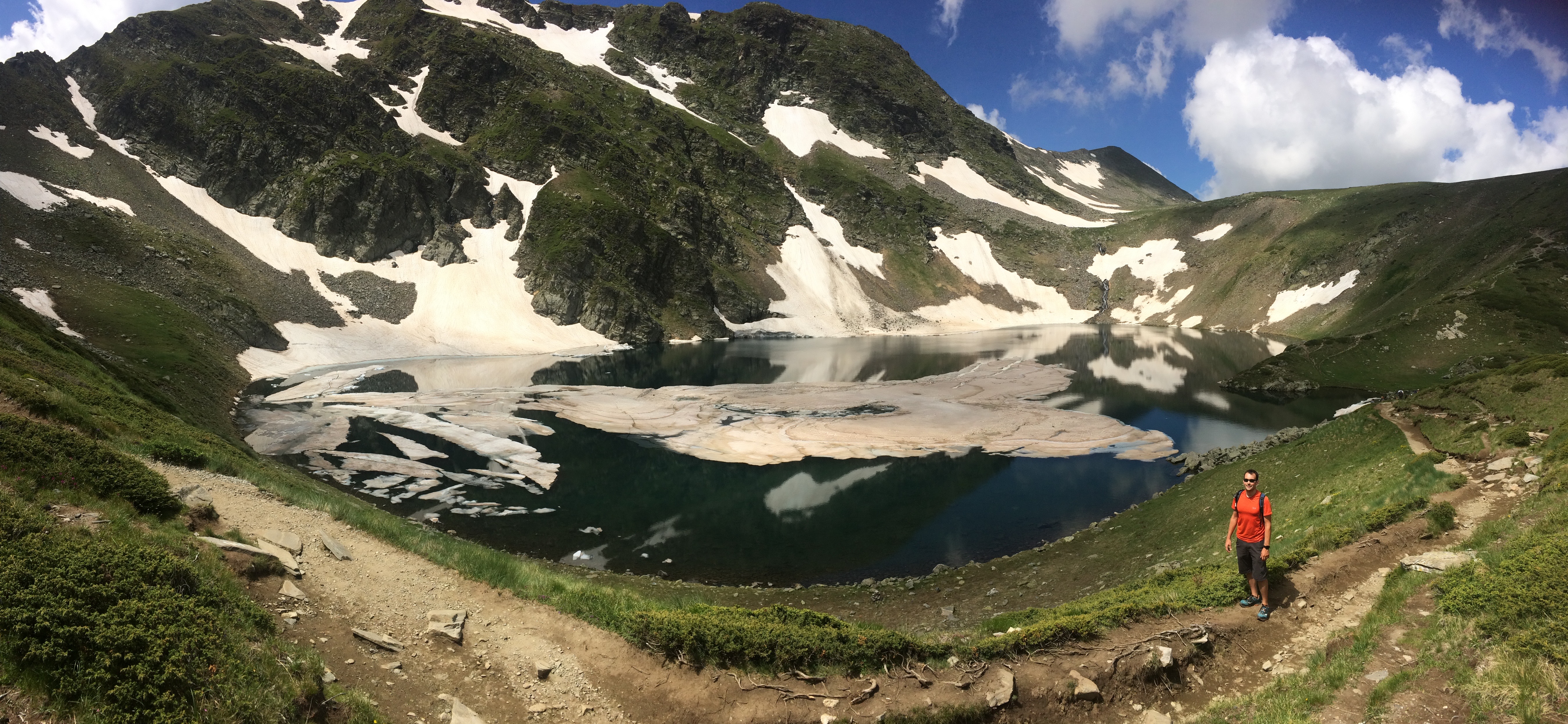
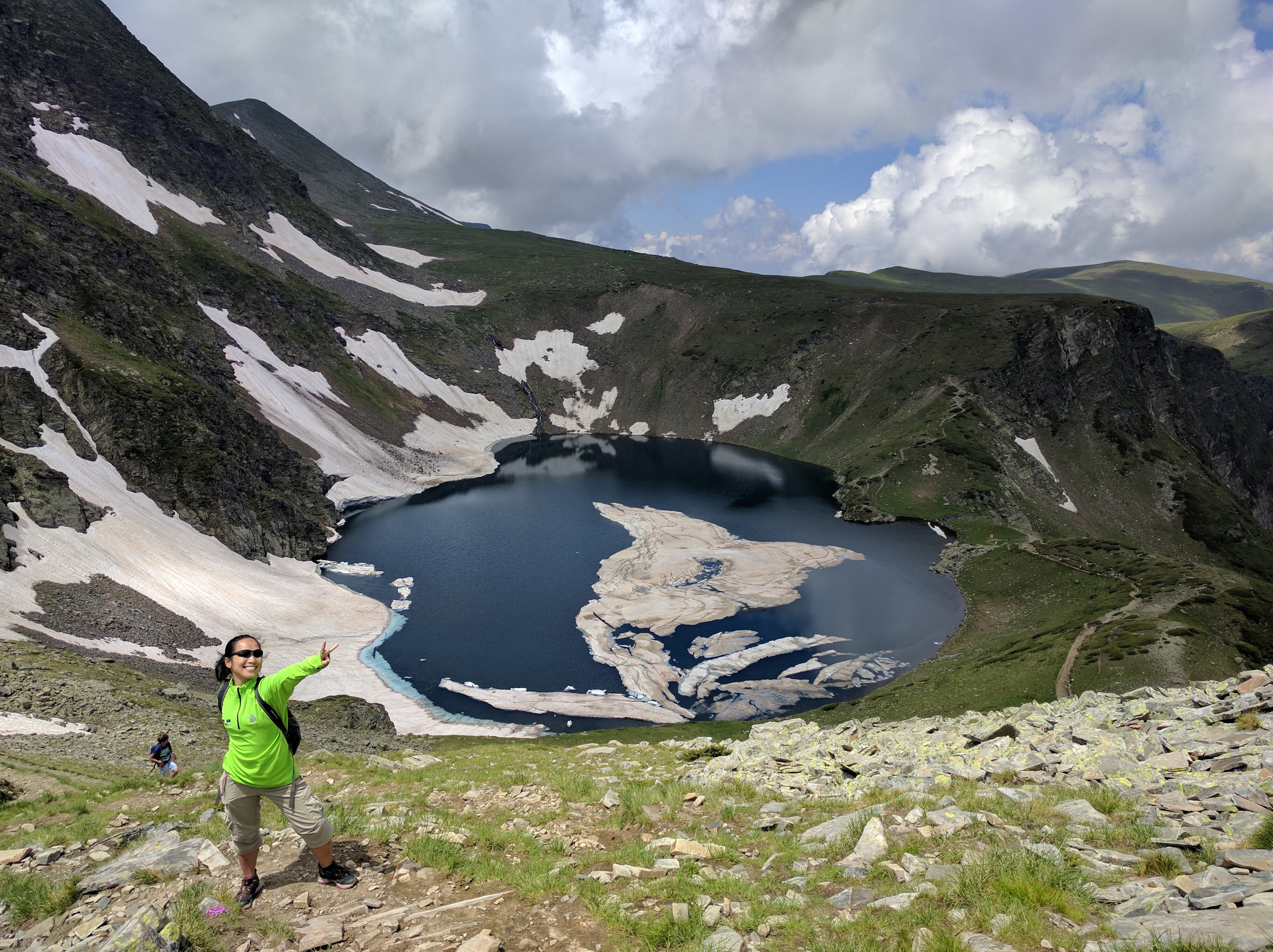
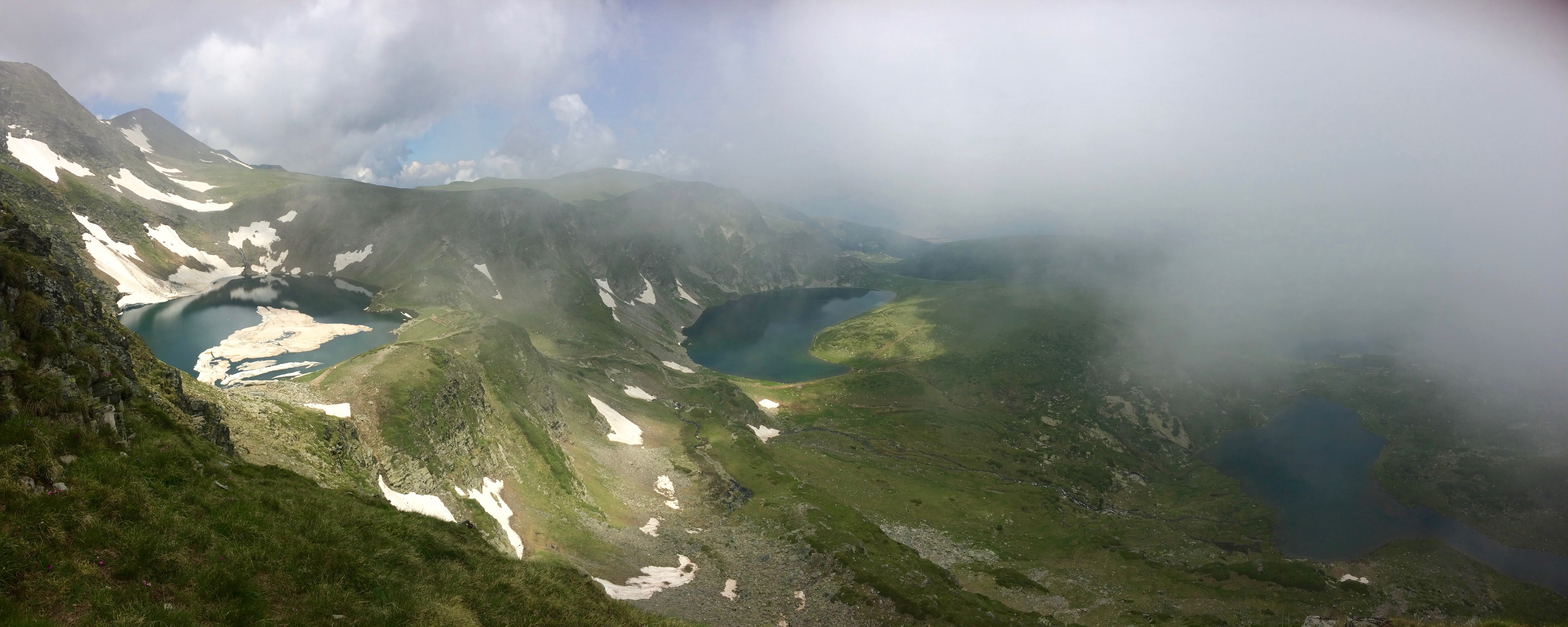
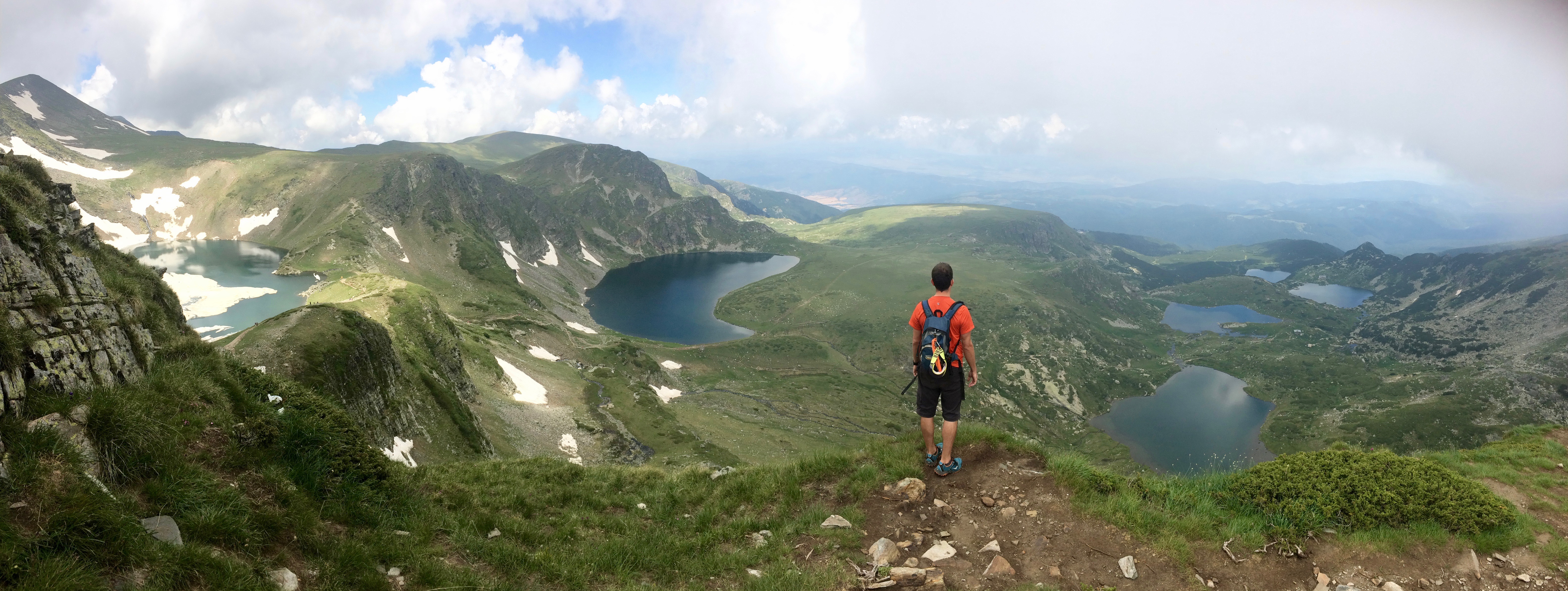
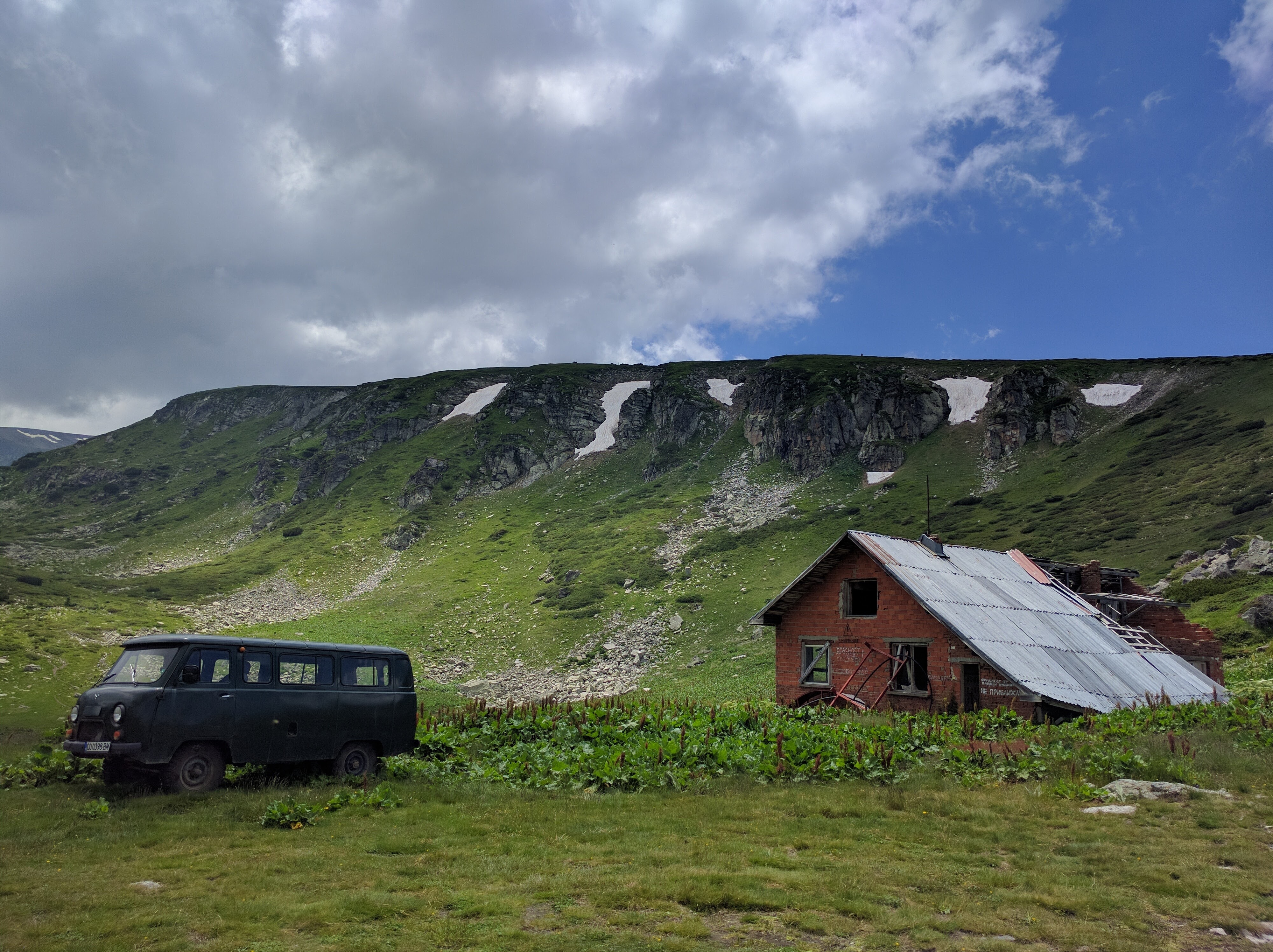
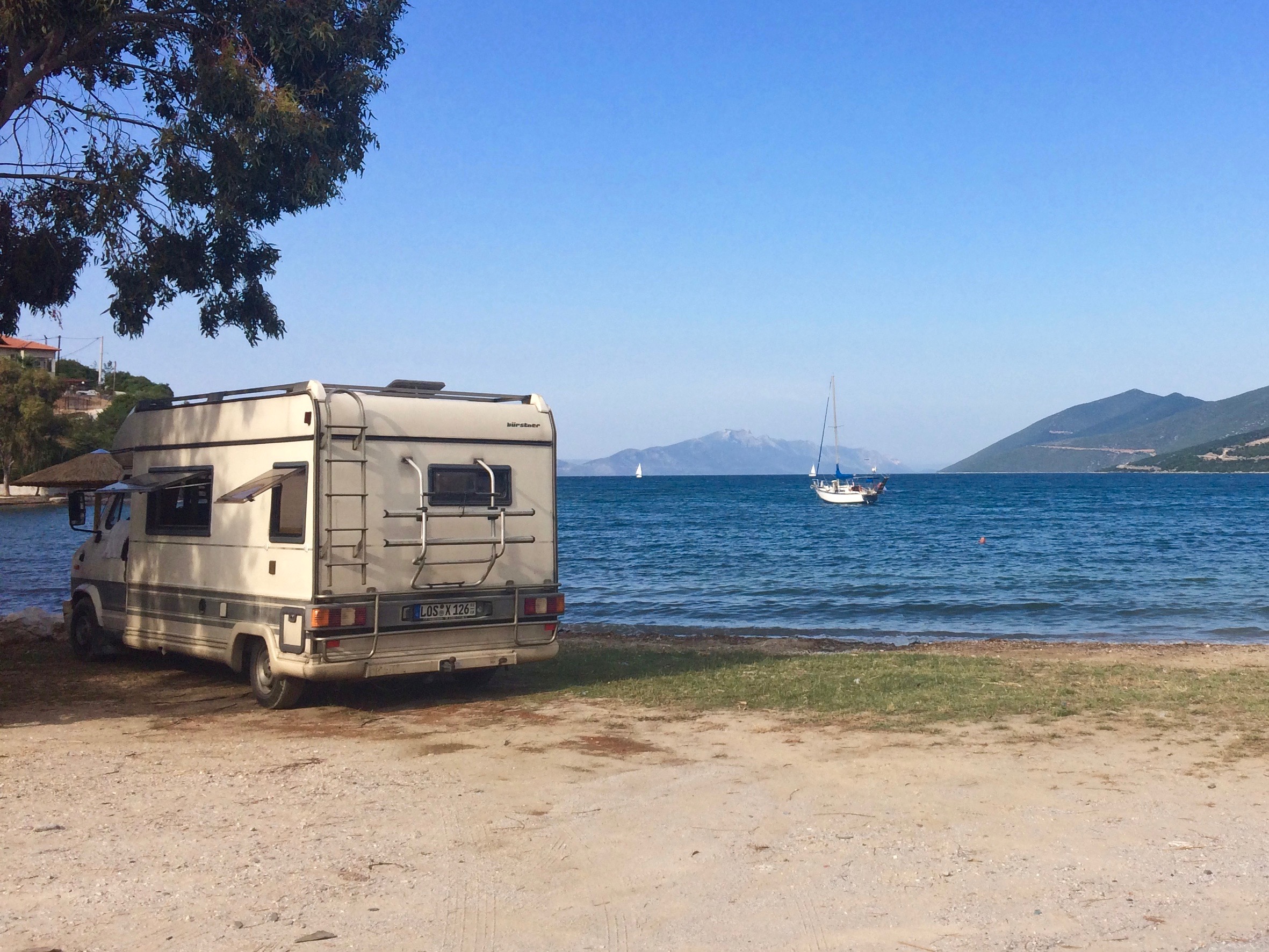
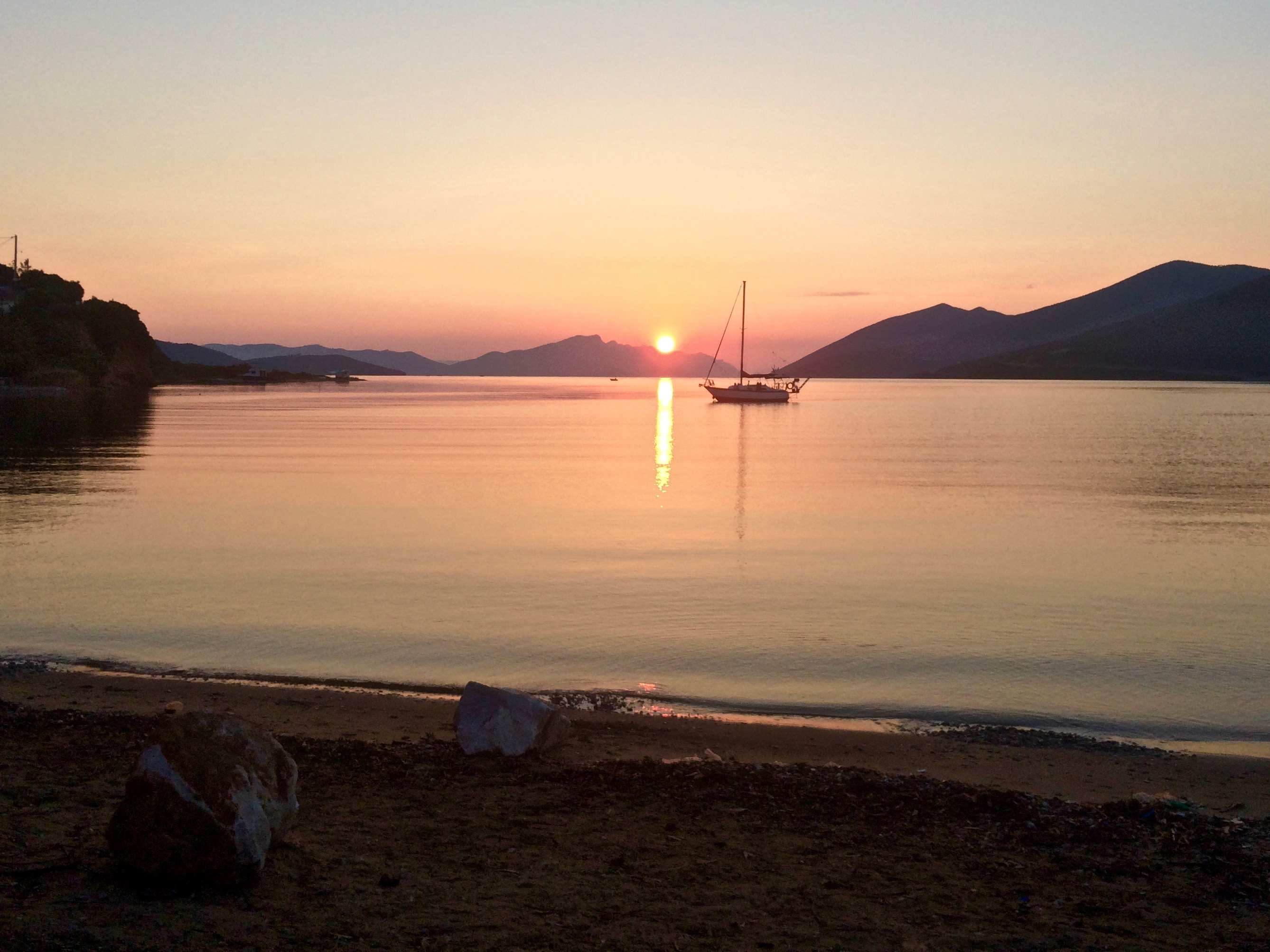
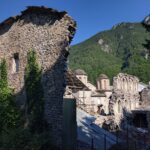
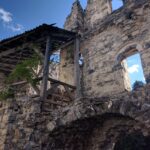
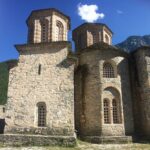
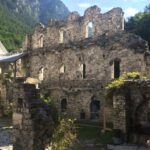
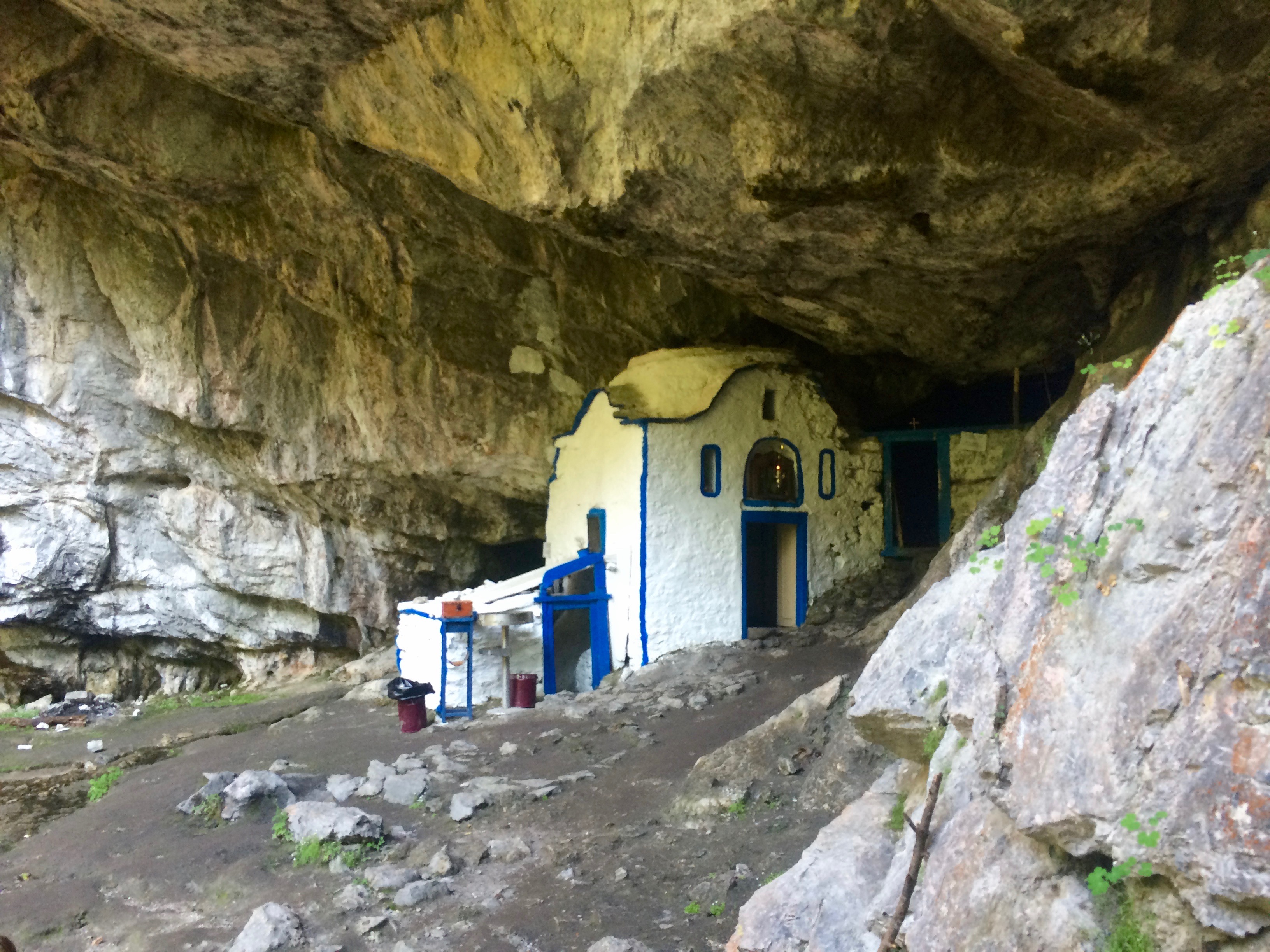
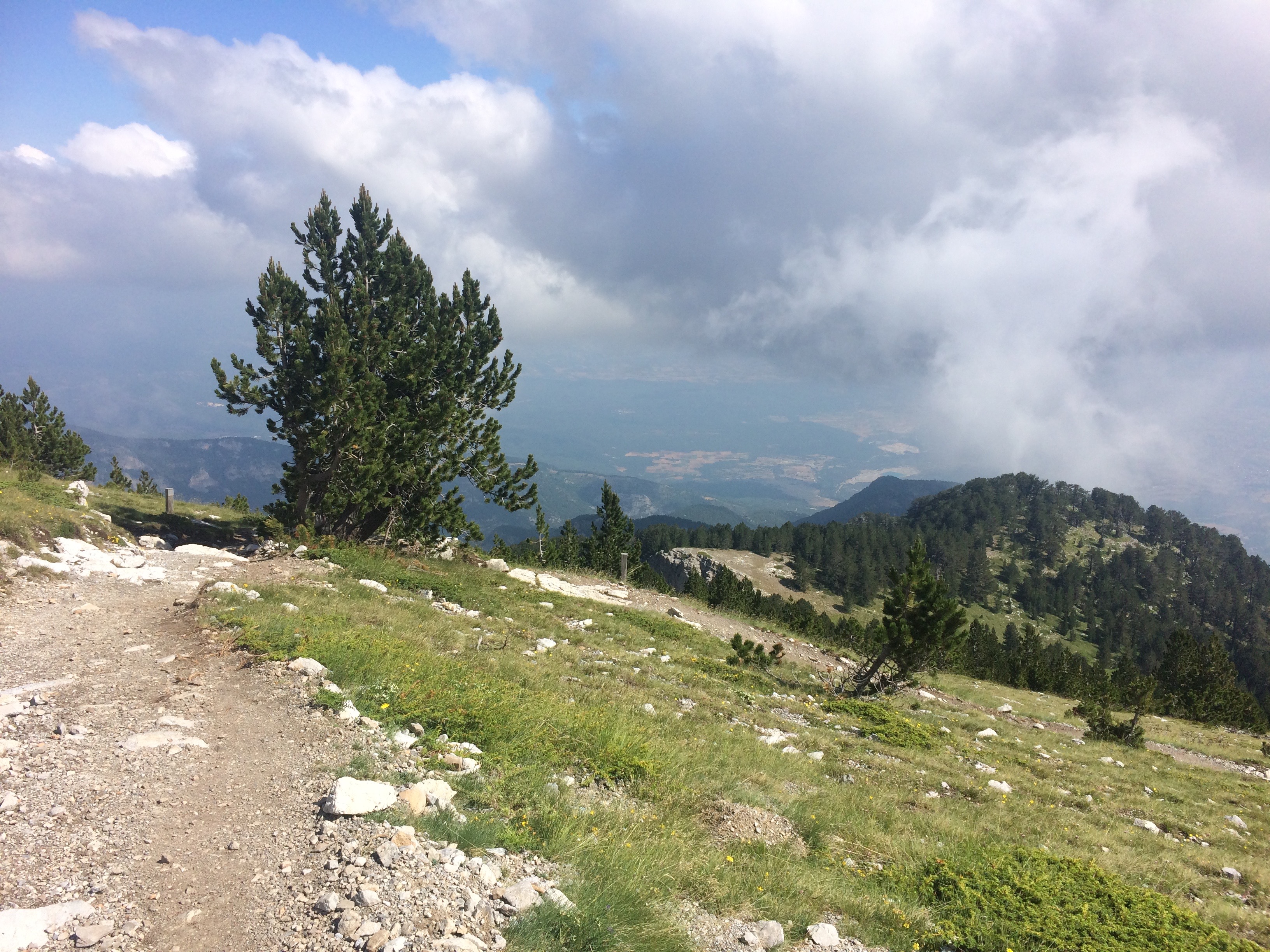
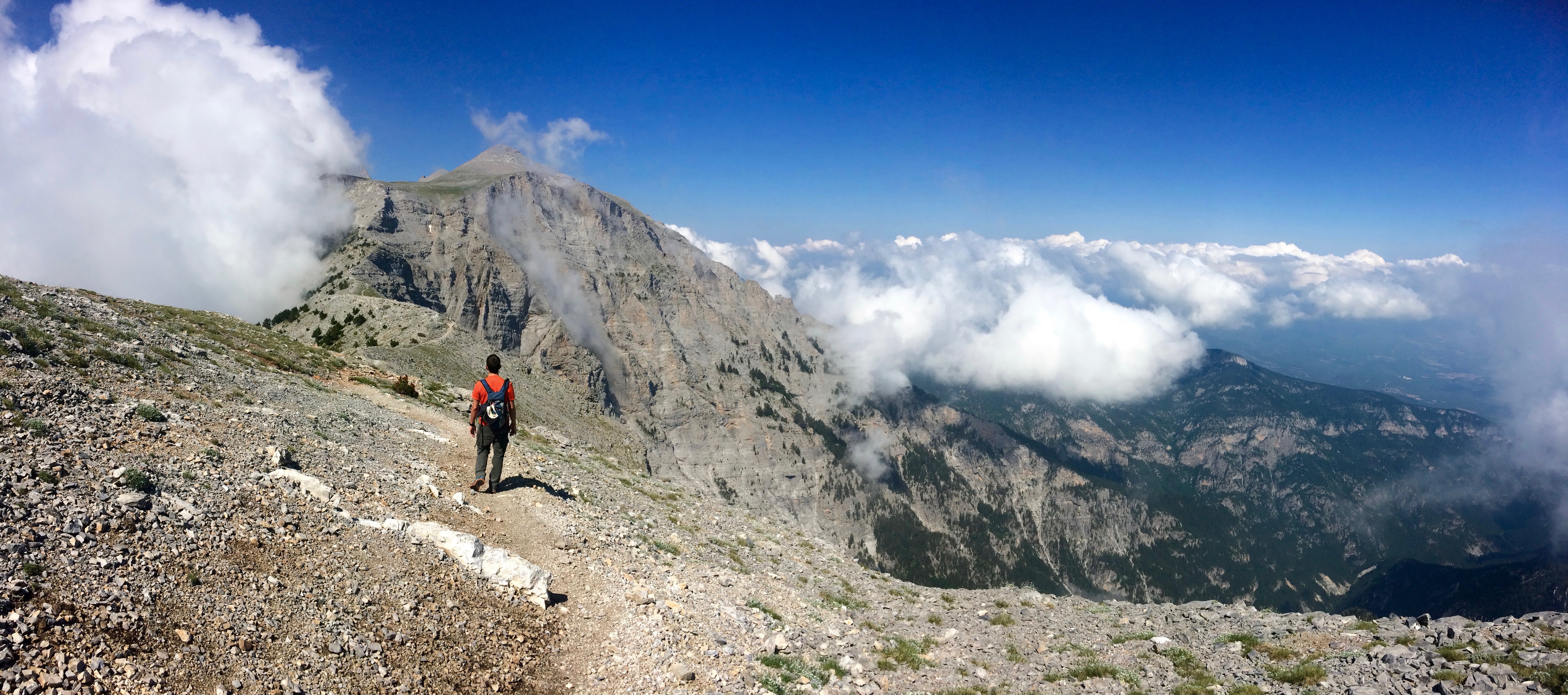
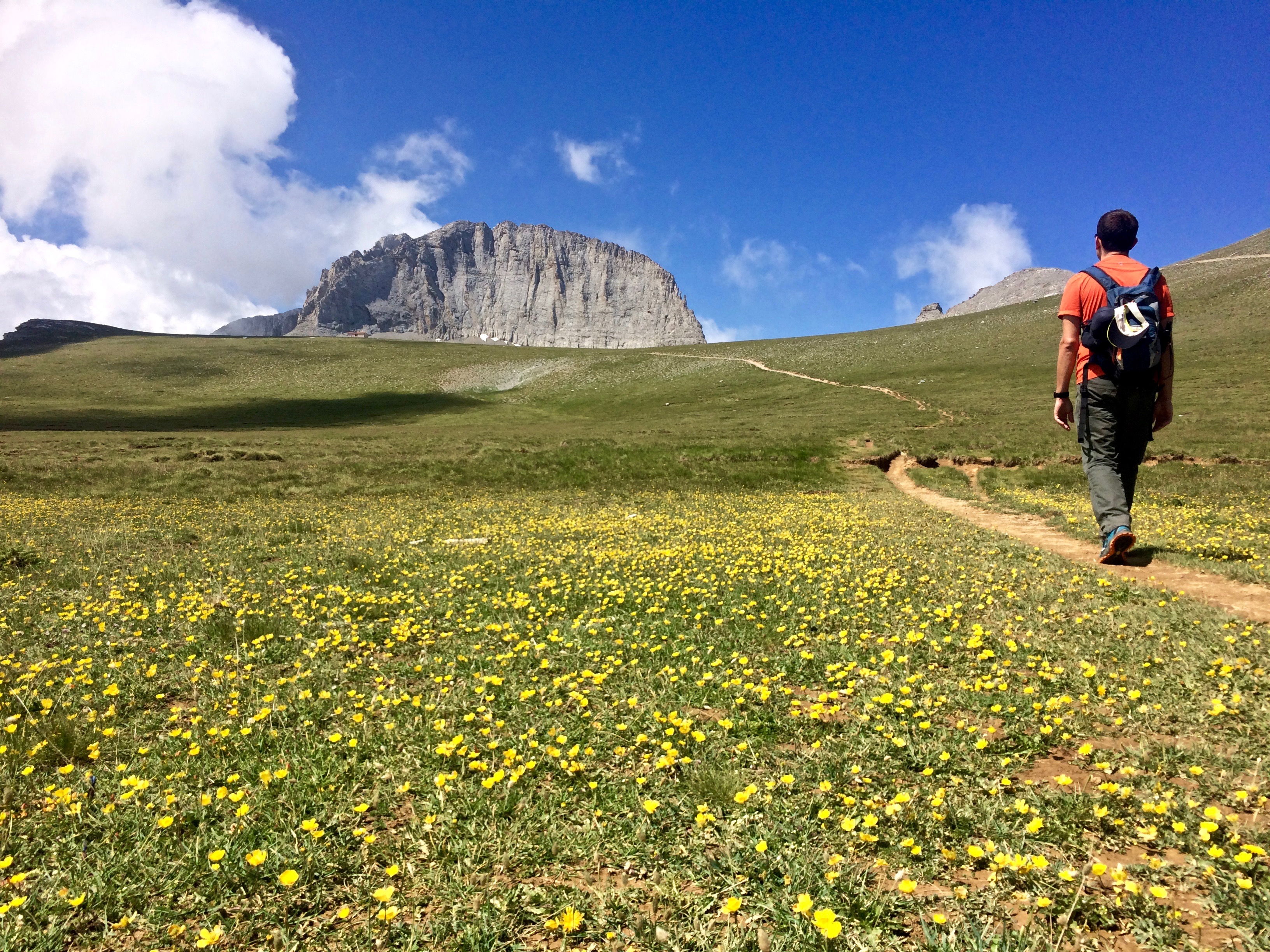
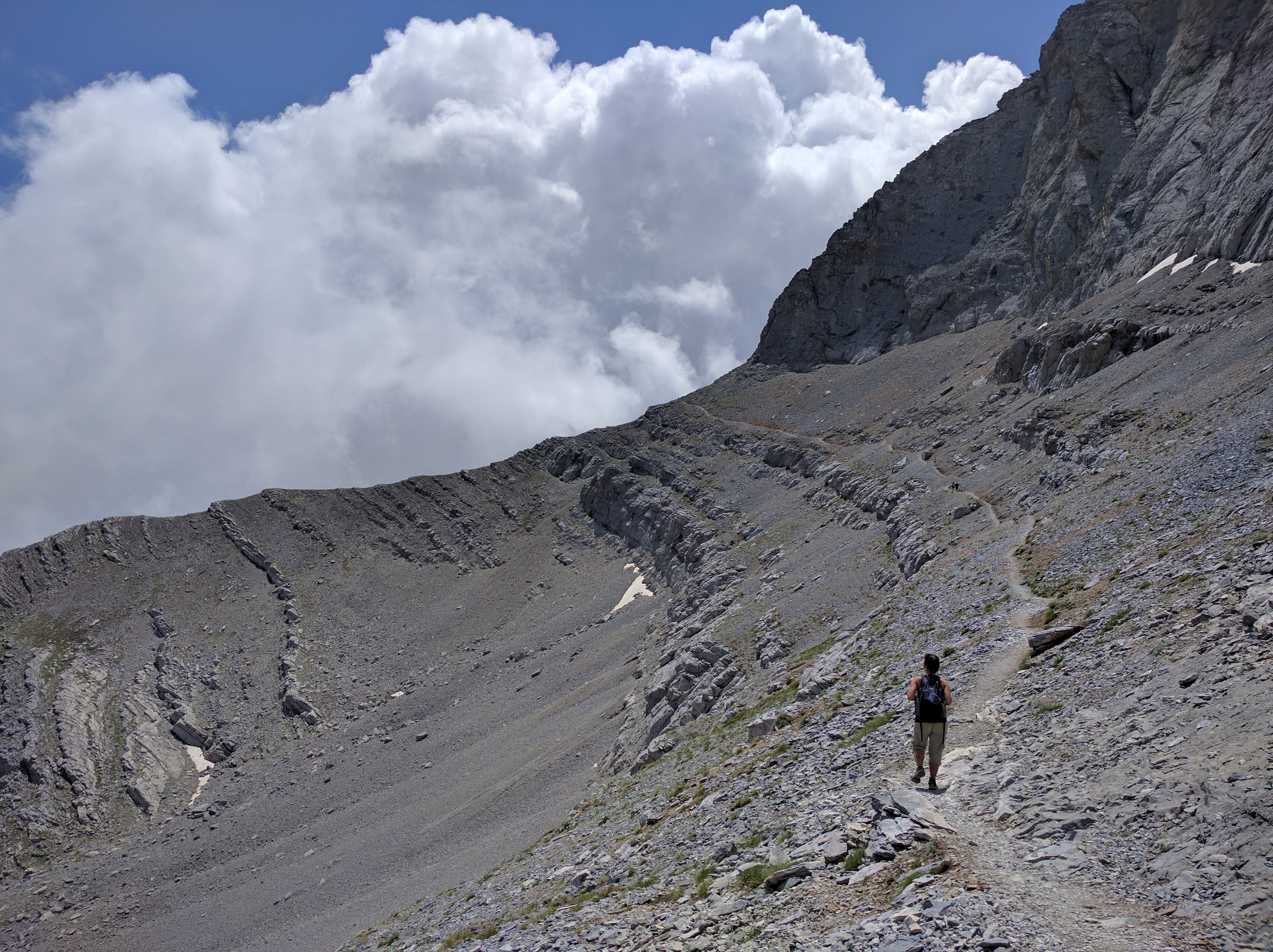

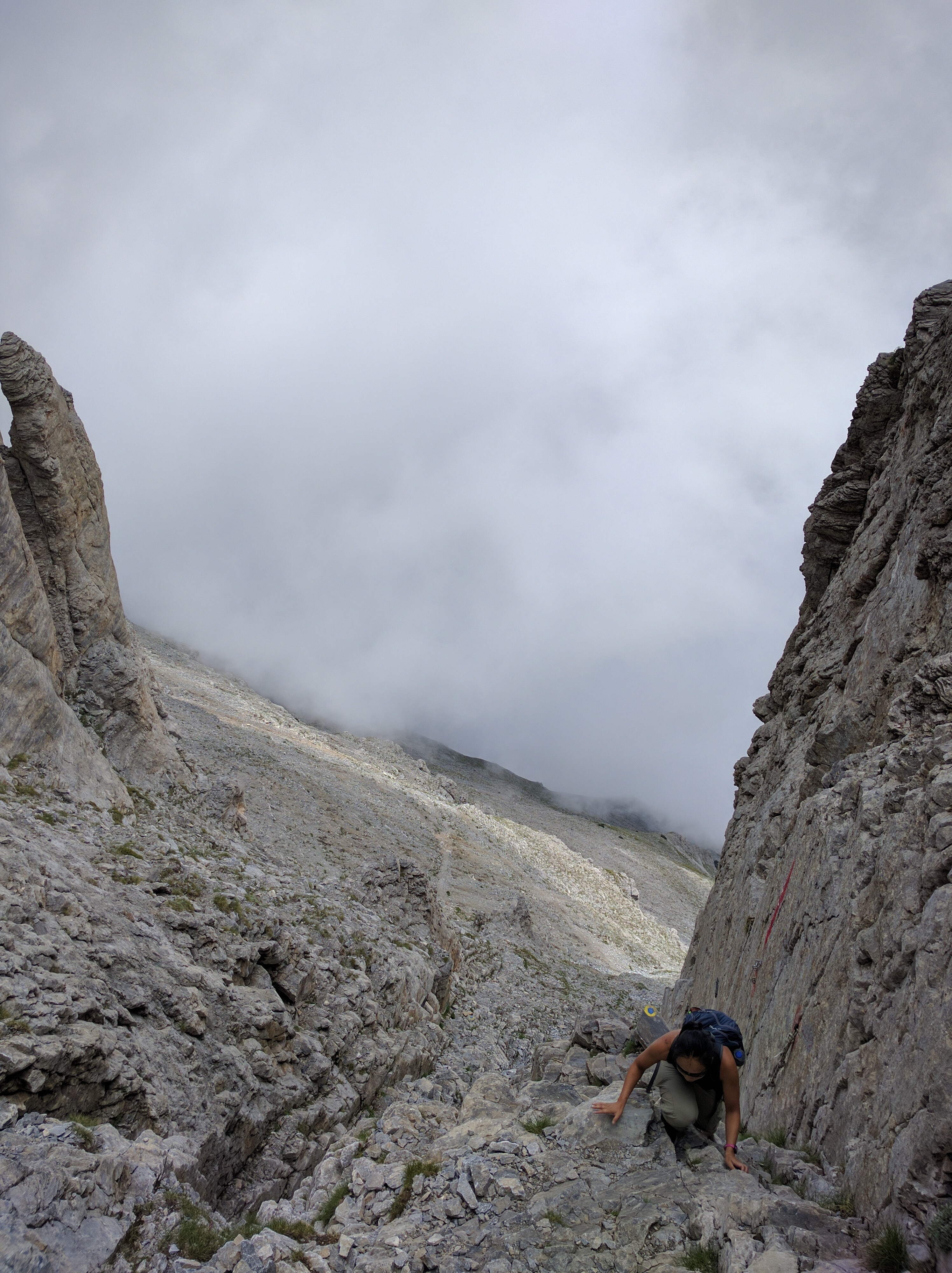

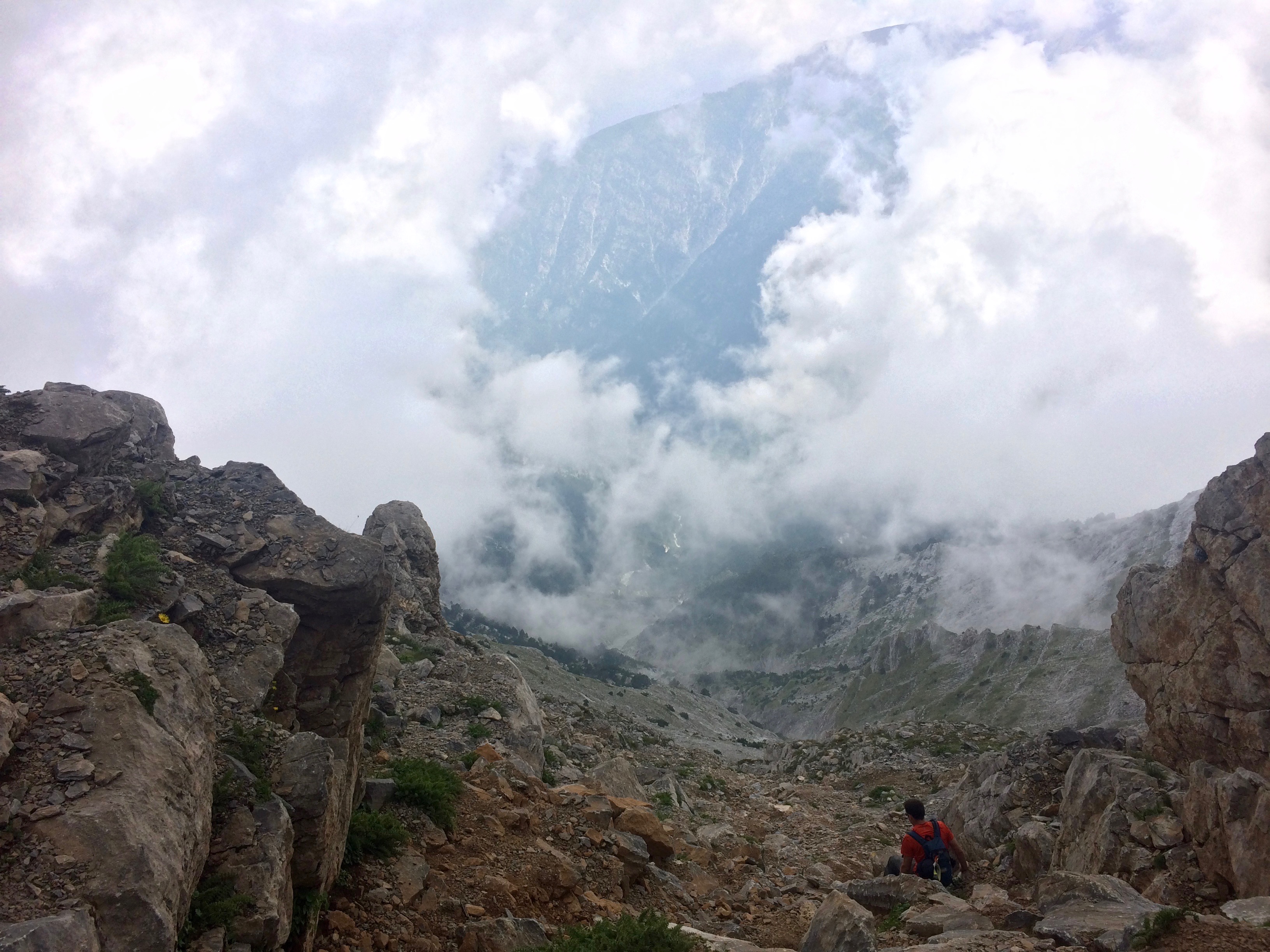






 From the bottom of the steps, we followed a trail to a rocky area where swimmers left their belongings and swam out to a small rocky outcrop with a short cliff to jump from. We loved swimming in the crystal clear water, jumping from the “cliff,” and encouraging others to jump in too.
From the bottom of the steps, we followed a trail to a rocky area where swimmers left their belongings and swam out to a small rocky outcrop with a short cliff to jump from. We loved swimming in the crystal clear water, jumping from the “cliff,” and encouraging others to jump in too.









